



ORLANDO, FL — April 29, 2025 Battcon, organized by the Consortium for Battery Innovation (CBI), is the industry’s benchmark event for real-world application training and the latest critical developments in stationary battery systems. Today, Battcon announced that the IEEE Power & Energy Society (PES) will be the technical co-sponsor for its 2025 event. This marks the first technical co-sponsorship between Battcon and the IEEE Power & Energy Society, expanding the conference’s global reach and technical impact.
Scheduled for Aug. 3–6, 2025, in Orlando, Florida, Battcon brings together engineers, operators, manufacturers and end users to address critical challenges in backup power systems for many different markets like data centers, energy storage systems, utilities, and telecommunications. With IEEE PES involvement, Battcon 2025 will be included on the IEEE Conference Search/Call for Papers website, and conference materials will be eligible for archival in IEEE Xplore®, expanding access to speaker research and technical findings across the global energy community.
“The involvement of IEEE PES as a technical co-sponsor enhances the already outstanding technical content at Battcon 2025,” said Dr. Matt Raiford, senior technical director of the Consortium for Battery Innovation. “Their role in co-publishing and archiving the conference’s peer-reviewed technical papers ensures that our speakers’ contributions are preserved and shared with a global network of power and energy professionals. This partnership strengthens the value of Battcon as a platform for advancing real-world battery applications in critical infrastructure.”

The IEEE Power & Energy Society, the world’s leading forum for electric power and energy innovation, has more than 42,000 members worldwide. Their participation furthers Battcon’s mission to deliver top-tier technical education and drive advancements across grid storage, telecom backup and data center UPS systems.
Battcon, organized by the Consortium for Battery Innovation (CBI), is where technical expertise meets real-world application. The 2025 event will feature expert-led sessions, pre- and post-conference workshops, an expanded expo, and targeted networking receptions connecting professionals across the stationary battery community. In Battcon’s uniquely independent exhibit hall, attendees can engage directly with leading manufacturers, suppliers and service providers. Learn more at www.battcon.com.
From a speech by Dr Carl Telford at the European Parliament in Brussels
As the Consortium for Battery Innovation’s name implies, my work places me in the middle of European energy storage activity. I work with large battery companies, universities, and put exciting project together. CBI’s core research aims at improving the capabilities of advanced lead batteries – but we are also technology agnostic and are extending our research to include other battery chemistries. Not just lithium, but sodium, zinc, redox flow, and perhaps technologies that are hitherto unknown.
The key thing is, we recognise the role of all these technologies in enabling energy security, decarbonisation, and affordable energy provision.
The European energy storage industry is already an impressive space. From Germany, to Portugal, Italy, Bulgaria and more – I have travelled and visited advanced lead battery manufacturing facilities across the continent. Combined, we have a pan-European multi-gigawatt production capability at our fingertips. Today. These batteries are used in a wide variety of mission-critical applications, not just car batteries but also renewable energy systems, backup power, peak shaving, nuclear power plant operation, and defence applications such as tanks or submarines. They are a critical to European security and a key piece in the jigsaw puzzle that is the Clean Industrial Deal and the Affordable Energy Action Plan.
I recently visited a European factory, and as part of a factory tour, I was shown a battery about the size of a large box. It was a metre high . A rather anonymous looking thing. But without this box, you could not operate a nuclear power plant safely. A big battery, with an even bigger responsibility.
In most of these factories, old batteries come in at one end, and new batteries come out the other end. The lead battery industry is a closed loop. This is not only a good thing from a circularity perspective, but also from cost and energy-security perspectives. These are batteries whose raw materials are all freely available in Europe, with zero reliance on expensive difficult-to-source materials.
A lot of the work I do relates to renewable energy and energy storage systems or ESS for short. The ESS market is growing rapidly. A recent report by KPMG noted that the European market for ESS will approach 200GWh-per-year by 2035, and lead batteries have the potential to supply an important chunk of this, around 10-15GWh-per-year. CBI recently visited the Isle of Eigg, off the Northwest coast of Scotland. This community relies on a microgrid with an advanced lead-battery storage system to provide affordable electricity. You see the same story across the world, from Africa to Antarctica. We make tough, cost-effective batteries for challenging environments.
Our industry also conducts cutting edge research, which doesn’t always fall under the spotlight. I’ve put together a microgrid project for Horizon Europe which features a battery that, when fully charged, becomes an electrolyser, producing hydrogen. You don’t run out of storage, you just transition to another energy vector. Electrons to gas. This technology – called a battery-electrolyser or battolyser – is a European invention, developed in the Netherlands and the UK.

Another project we co-founded is called Aftrak. It combines a small, low-cost electric tractor, a scalable solar microgrid, and a novel agricultural technique. The tractor enables African farmers to increase their yields, sell surplus crops, and lift themselves out of subsistence. It is electrical and economic empowerment. I have seen this project grow from an idea on a scrap of paper in a hotel in Malawi, to a government-funded project, to an international prize winner, to a startup company, in 3 years.
These exciting projects would not be possible without the brilliant University scientists, imaginative startups, and determined, practical and supportive lead-battery manufacturers we have at our disposal in Europe.
We must not take them for granted; there is much more we can do.
My message to decision-makers in Europe is this:
Thank you.
At Exide Technologies we operate 11 manufacturing and 3 recycling facilities sites across Europe, employing 5,000 people directly (and many more through our European supply chain). Headquartered in Paris, our manufacturing footprint is Spain, Portugal, Germany, Poland, Italy, The Netherlands and France.
Our business is energy storage; we make advanced batteries, using two essential and complementary technologies: lead and lithium.
Our products underpin many essential applications all of which are critical to a successful and growing economy – from batteries supporting hybrid and electric on road vehicles to batteries supplying energy to industrial vehicle’s and batteries vital back-up systems for data centres and hospitals.
We also make batteries for defence applications: from batteries supporting submarines, to specialist batteries for tanks and other military vehicles.
All made in Europe and recycled in Europe.
Europe needs an eco-system of different battery technologies for a wide variety of application in order to fulfil our own needs and in order to compete globally. We are technology agnostic, which is key to supporting battery technologies to innovate and develop here.
One of Europe’s greatest strengths is that we promote stability and predictability on the world stage. And it is just as important that we create the same conditions for companies operating in Europe.
As EU President Ms Von der Leyen put it: “In today's world, maintaining Europe as an economic powerhouse is a matter of collective security.”
Our commitment is to make advanced batteries in Europe, and recycle them in Europe.
Exide Technologies has a proud track record of manufacturing and recycling lead batteries in a closed loop – ALL lead batteries collected in Europe are recycled and re-used to make new batteries. Now we’re applying that knowledge and skill to recycling lithium batteries at our facility in Spain, helping ensure that Europe can recycle and re-use critical raw materials.
And we’re committed to decarbonisation and the transition to a ‘clean’ industry – let me give you one example, in Portugal, we operate state-of-the-art solar installations, powering our manufacturing and our recycling facility with advanced lead battery energy storage.
We have reduced carbon emissions at these sites by 20% and more and more companies will I hope follow this model in the years ahead.
Our business is strategically autonomous – our raw materials (most of them recycled) come from Europe and we distribute our batteries in Europe but also serve markets in Asia, Africa and the Middle East.
Above all, we have a highly adaptable and capable workforce. We must keep their skills here in Europe.
And - of course - we comply with a whole raft of existing European and domestic legislative and regulatory requirements to protect employees, the environment and the community.
So our message to policy makers is straightforward. Please do allow us to continue to operate, to innovate, to compete. We don’t seek special assistance. But we do seek a level playing field. We all want to see costs reduced, be they energy or other compliance requirements.
Please don’t increase the regulatory burden. And where regulatory measures are necessary make sure they are proportionate and risk-based.
But we also see a couple of regulatory items that need to be resolved. In the past, we have seen efforts to authorise lead under REACH, essentially sending a signal that lead is banned and acting as a disincentive to invest. This approach is highly counterproductive and has to stop. We hope that the REACH revision later this year will consider that.
I’m sorry to say that batteries are a typical example for unnecessary burden and threat from overlapping legislation. Currently we have three regimes reviewing and restricting the use of substances in batteries.
The quite outdated review scheme of substance bans and exemptions under the ELV Directive from 2000.
The evaluation, classification, restriction and authorization scheme under REACH. Also a legislation that is 15 years old and the new kid on the block, the review and restriction scheme mandated by Article 6 of the EU Battery Regulation.
It won’t surprise you that our industry is not so happy with the three regimes all heading for the same target – making products safer and more sustainable. It should also not surprise you that battery industry wants to have the battery substances regulated under one piece of legislation – preferably the Battery Regulation – only.
Finally, I would like to mention the metals action plan, published earlier today, as one example where we need policy makers to think more broadly about Europe’s industrial needs. It focuses on a few key metals – which are important, like steel - but I fails to include the importance of a much wider group of metals like lead which are essential to our competitiveness and our autonomy. This is the kind of joined up thinking we need, and I’d urge the Commission to think about all the metals necessary to boost growth, to innovate and to defend ourselves, both economically and militarily.
As a company we do not stand still. We invest and we innovate. That is why the Clean Industrial Deal must be on the side of industry so that we can compete, grow and continue to make it in Europe.
The former European Central Bank President Mario Draghi put his finger on Europe’s problem in his report on EU competitiveness.
“For Europe to remain free,” he wrote, “we must be more independent. We must have more secure supply chains for critical raw materials and technologies. We must increase production capacity at home in strategic sectors. And we must expand our industrial capacity.”
His comments were prescient given the new political dynamic arising from the change of political direction in the United States, and the requirement for Europe to ‘stand on its own two feet.’
The clean industrial deal (CID) presented by the European Commission sets the right tone and is a step in the right direction. However, if European industry is going to be free to innovate, invest and build on our many manufacturing strengths. Butwe need the European Commission to deliver on these promises – and quickly.
While we applaud the clear ambition to be a continent of industrial innovation and production. And we want more streamlines and proportionate – or simplified - regulation. But the warm words must result in concrete and clear actions at every level of decision making.

Europe is indeed facing a watershed moment, as the President of the European Commission said when launching this initiative. In more ways than one Europe is on a war footing. In the battle for competitiveness in a world that no longer boasts a level playing field for trade. In the battle for innovation and the ability to harness the benefits of new technology and AI. And in the battle for democracy and self-determination – building a defence capability to match any potential threat to our borders.
The one thing missing from the announcements about the clean industrial deal is the importance of valuing the core industries we rely on today and which will act as the foundation for any future industrial growth and competitiveness.
There are many industrial success stories in Europe – which may seem surprising given the level of regulation and bureaucratic uncertainty businesses have faced in recent years.
We need industries like ours – producing advanced lead batteries used in everything from cars and trucks to tanks and submarines– to continue to grow and innovate as part of an EU battery eco-system. Europe is home to some of the most advanced battery manufacturing and recycling capabilities in the world. You just may not have heard about them.
And we are probably the best example of the circular economy in action. All the lead batteries collected at the end of their life in Europe are fully recycled and re-used in making new batteries.
So our plea to decision-makers is simple. Get behind the industries of today so they can flourish tomorrow. Let us get on with what we do best. Ensure regulation is proportionate, predictable, and consistent across policy areas. Support innovation and investment by ensuring we have a stable legislative and regulatory platform on which to build. And create the best possible conditions for us to continue to invest in people and skills.
Our technology will be an important part of the jigsaw helping achieve greater electrification and decarbonisation. Value the industries we already have in Europe, tear down the barriers and let them flourish.
Europe is the largest exporter of manufactured goods and services. Our strengths outweigh the weaknesses. Businesses value stability and certainty. In these tumultuous times they could be our greatest asset.
Watch the video update about this project here:
DURHAM, N.C. – Jan 31, 2024 – As part of our continued efforts to support advanced lead battery uptake for energy storage applications, the Consortium for Battery Innovation (CBI) has joined as Teaming Partner of the U.S. National Consortium for the Advancement of Long Duration Energy Storage (LDES) Technologies.
Launched in January 2024, this three-year initiative funded by the U.S. Department of Energy (DOE) proposes an independent forum to bring together stakeholders across the LDES ecosystem. The main goal is to promote collaborations to develop and implement strategies necessary to achieve the commercialization of LDES technology within the next ten years.
The power sector is responsible for one third of emissions in the U.S. according to estimates by the U.S. DOE. The transition to carbon-free renewable sources must address the intermittent nature of wind and sun, and LDES is a key option to provide the needed flexibility and reliability to the grid. Batteries are among the most viable storage technologies for shifting excess power produced at one point in a day to another point within the same day (inter-day LDES), or to multiple days in the future (multi-day / week LDES).

The LDES National Consortium is led by Sandia National Laboratories with the support of five other National Laboratories - Argonne, Idaho, National Renewable Energy, Oak Ridge, and Pacific Northwest. The partnership already counts with over 130 Teaming Partners who are working together in Tiger Teams to identify and evaluate challenges in specific focus areas impacting LDES. One key aspect of the Consortium is its Diversity, Equity, Inclusion, and Accessibility Strategy, leveraging community engagement to ensure that LDES technology rollout brings concrete benefits to underserved communities.
CBI’s Research & Innovation Manager, Dr Alyssa McQuilling, and CBI’s Technical Director, Dr Matthew Raiford, are actively involved in eight of the sixteen Tiger Teams, namely: Technology Development, Evaluation and Testing; Demonstrations and Deployments; Investor Confidence and Finance; Use Case Development; Workforce Development; Reliability and Resilience; Economics and Valuation; Supply Chain and Manufacturing Efficiencies.
"The extensive infrastructure and domestic circularity offer an incredible opportunity for the industry to learn how we can adapt lead battery technology to the needs of LDES."
Dr Matthew Raiford, Technical Director at the Consortium for Battery Innovation
Our experts point out that advanced lead batteries are particularly well suited to inter-day LDES applications. They also see the potential around hybrid long duration systems, combining advanced lead batteries with another technology such as flow batteries to cover both short and long duration response. Dr Alyssa McQuilling said: “There is a lot of opportunity for lead batteries as a part of the solution for long duration storage, and the growth of the industry will require all kinds of technologies to meet the needs of utilities and other consumers.”
“I’m excited by the scale of the project, ranging from technology and use cases to markets and economics all the way to supply chain and workforce development. We are covering every challenge facing long-duration storage and the efforts of this consortium will benefit the energy storage industry beyond just its long duration applications.”
Dr Matthew Raiford said: “The US lead battery industry is uniquely poised to collaborate in this effort. The extensive infrastructure and domestic circularity offer an incredible opportunity for the industry to learn how we can adapt lead battery technology to the needs of LDES. The ongoing efforts from the US DOE LDES consortium will be a hotbed to learn and bring this learning into our industry.”
###
Notes to editors
About the Consortium for Battery Innovation
The Consortium for Battery Innovation is the world’s only global pre-competitive research organization funding research into lead batteries for energy storage, motive and automotive applications. For more than 25 years, with its global membership of battery manufacturers, industry suppliers, research institutes and universities, CBI has delivered cutting-edge research pushing the boundaries of innovation in lead battery technology, setting the standard for advanced lead batteries and the next generation of energy storage. For more information, visit our website: www.batteryinnovation.org
Dr Alyssa McQuilling, Research & Innovation Manager, and Dr Matthew Raiford, Technical Director, are available for interview. For more information, please contact CBI’s media contact: Nicola Filizola, nicola.filizola@batteryinnovation.org
The COP28 conference marked an important moment in the global conversation about energy storage and batteries. While signalling the need to move away from fossil fuels, it emphasised the potential of energy storage to shape a sustainable energy future significantly.
The 28th Conference of the Parties (COP28) to the United Nations Framework Convention on Climate Change was held in Dubai from 30th November to 12th December. The conference brought together global leaders, experts, and stakeholders to address the pressing issue of climate change. The theme of COP28 was "Building a Resilient Future," focusing on accelerating global action to limit global warming to 1.5 degrees Celsius above pre-industrial levels.
Despite the scepticism that preceded the conference, particularly surrounding the host nation, Dubai, a major oil producer, COP28 emerged as a revolutionary climate change summit. For the first time in 28 years, fossil fuels were formally recognised as the primary driver of climate change. This acknowledgement, a significant shift from the previous COPs, marked a turning point in the international community’s approach to climate change. It challenged the long-held narrative that fossil fuels were necessary for the energy mix and laid the foundation for a faster transition to a low-carbon economy. This formal recognition of fossil fuels’ role in climate change was not just a symbolic gesture but led to a series of bold decisions and commitments to accelerate the global transition to clean energy sources. Over 100 countries pledged to phase-out coal power by 2030, which is a huge milestone in decarbonising the energy sector.

Energy storage for green transition
COP28 provided an opportunity for stakeholders to discuss the complexities of energy storage technologies and their potential to contribute to a more sustainable energy future. The discussions focused on integrating renewable energy sources, enhancing the stability of power grids, and addressing the issue of energy poverty. COP28 witnessed several notable developments related to energy storage, including the launch of the Supercharging Battery Storage Initiative and the Multilateral Consortium for Battery Storage.
Member governments of the Clean Energy Ministerial (CEM), including the European Commission, Australia, Canada, and the United States, announced the launch of the Supercharging Battery Storage Initiative in Dubai. This initiative aims to increase the capacity of battery storage in the power grid while ensuring a transparent, resilient, and sustainable energy system. It is focused on reducing technology costs, as batteries play a crucial role in creating a flexible and reliable energy system. Through this initiative, member governments of the CEM are committed to a cleaner and more accessible energy future. “Battery storage will be the backbone of the green transition with an essential role in decarbonising transport and energy. It will enable a truly decentralised and integrated energy system based on efficient use and renewable generation,” said Maroš Šefčovič, Vice President of the European Commission.
Bridging the energy gap
The Global Leadership Council announced the formation of the Battery Energy Storage Systems (BESS) Consortium, with participation from 11 African countries. The consortium has pledged to deploy a minimum of 5GW of battery storage systems in Africa by 2030. The initiative seeks to tackle energy poverty and improve access to reliable electricity in low- and middle-income nations on the continent. Dr. Rajiv J. Shah, the President of The Rockefeller Foundation and Co-chair of the GLC, highlighted the need for transformative initiatives. He stated that "Without sufficient storage capacity, countries will be unable to add renewable energy to their grids at the scale needed to reduce emissions and create economic opportunity. The BESS Consortium is an example of the sort of big, bold action required to break down the barriers that are preventing people and communities from joining the ongoing climate transformations."

As part of the COP28 agreements on energy storage, the United States and partner countries of the Net Zero World initiative have announced significant progress in building clean and secure energy systems in emerging economies. This includes helping Ukraine deploy distributed renewable energy and storage systems for critical infrastructure. Participants of COP28 have also called for increased investment in research and development for energy storage technologies. The aim is to accelerate innovation, improve performance, and reduce costs, making energy storage more accessible and cost-effective.
Advancing a cleaner future
The decisions and commitments made at COP28 are a step forward in the global effort to combat climate change. By acknowledging the role of fossil fuels in climate change and committing to a rapid transition towards a low-carbon economy, COP28 has set a new course for the international community.
Moreover, the conference marked an important moment in the global conversation about energy storage. COP28 emphasised the potential of energy storage to significantly shape a sustainable energy future. Initiatives such as the Supercharging Battery Storage Initiative, BESS Consortium, and Net Zero World all point in one direction, addressing energy poverty, promoting sustainability, and achieving clean energy goals. To achieve this, we need all battery chemistries.
The conference's outcomes indicate a renewed commitment to accelerating the development and deployment of these technologies. As energy storage becomes more widespread and cost-effective, it will play a critical role in addressing climate change, ensuring energy access, and creating a more resilient and sustainable energy system.
The Consortium for Battery Innovation is actively involved in the rollout of advanced lead battery energy storage systems to contribute to global climate goals. In two ongoing energy storage projects, LoCEL-H2 and Aftrak, we are helping develop BESS combined with solar microgrids to provide a sustainable, reliable, low-cost energy system for remote communities. These projects also demonstrate how energy storage solutions are key to achieving a just transition, helping to increase food access, health outcomes and gender equality. With more energy storage projects underway, CBI will continue to support sustainable development for a climate-resilient future.
Battcon 2024 Miami, Florida, May 14-17
The Consortium for Battery Innovation has been appointed to manage the prestigious Battcon energy storage conference in the United States.
Battcon 2024 takes place in Miami, Florida, between May 14-17 at the Hyatt Regency Miami, with pre-conference workshops taking place on Tuesday May 14 followed by the full conference and trade show.
Battcon is an annual stationary storage battery conference showcasing developments in all battery chemistries which has been held in Florida for more than 25 years. The event, which attracts more than 400 delegates plus exhibitors, acts as a professional development and networking opportunity for the design, selection, and application of stationary, utility and energy storage battery systems.
CBI has issued a call for papers inviting speakers to submit abstracts on potential topics demonstrating new technical enhancements for all battery chemistries for the 2024 event. The conference is an opportunity for manufacturers and users to review the latest trends in stationary storage, including data-centers, telecoms, utility and energy storage applications.
View details and submit your abstract at www.battcon.com. Abstracts can be submitted directly by email to events@battcon.com

The Consortium for Battery Innovation is a global battery research group developing and promoting batteries and battery energy storage solutions.
CBI Director Dr Alistair Davidson described Battcon as a highly-respected industry event adding that CBI would continue to ensure the technical program and exhibition maintained its reputation for excellence.
He said: “We are committed to maintaining this important industry event and ensuring that Battcon continues to develop and grow alongside the energy storage industry. The conference is a significant professional development and educational opportunity supporting all battery technologies and chemistries. We have extensive experience managing technical events and given the exciting opportunities for stationary storage across many applications this conference will remain at the forefront of the green energy transition.”
Curtis Ashton, chair of the eleven-member Battcon technical committee, said: “Battcon is a popular, user-focused conference and as a technical committee we were keen that an organisation committed to battery energy storage should take on its management and future development. The committee felt CBI would be the best option. Its expertise and enthusiasm means that we can look to the event’s continued growth and focus on the rapidly evolving stationary battery industry.”
NEWS RELEASE - 21 November 2023
The ELBC battery innovation conference has issued a call for papers ahead of the event which takes place in Milan, between September 16-19.
Jointly organised by the International Lead Association and Consortium for Battery Innovation, the event’s technical committee is seeking abstracts on all aspects of lead battery technology with a specific focus on:
Dr Alistair Davidson, Director of the Consortium for Battery Innovation, said: “This is always a much-anticipated event for the lead and lead battery industries and we’re looking for high quality submissions that showcase recent innovations and all the latest lead battery research.”
Abstracts can be submitted online by visiting www.elbcexpo.org
More than 1000 attendees are expected at the event in Milan which includes an expo with up to 140 exhibitors from across the lead battery value chain.

About the Consortium for Battery Innovation (CBI)
For more than 25 years, CBI has delivered cutting-edge research taking lead batteries to a new level for energy storage and automotive applications. With an expert panel made up of the world’s leading battery manufacturers and research specialists, CBI is setting the standard for advanced lead batteries and the next generation of energy storage.
The Consortium for Battery Innovation's impactful presence at European Commission’s SET Plans Conference
In the ever-evolving landscape of energy storage, the Consortium for Battery Innovation (CBI) stands at the forefront, driving advancements in battery technology. At the recent SET Plans Conference in Viladecans, the CBI had a strong presence with its Senior External Affairs Manager, Nicola Filizola, showcasing the consortium's commitment to fostering collaboration and innovation within the energy transition landscape.
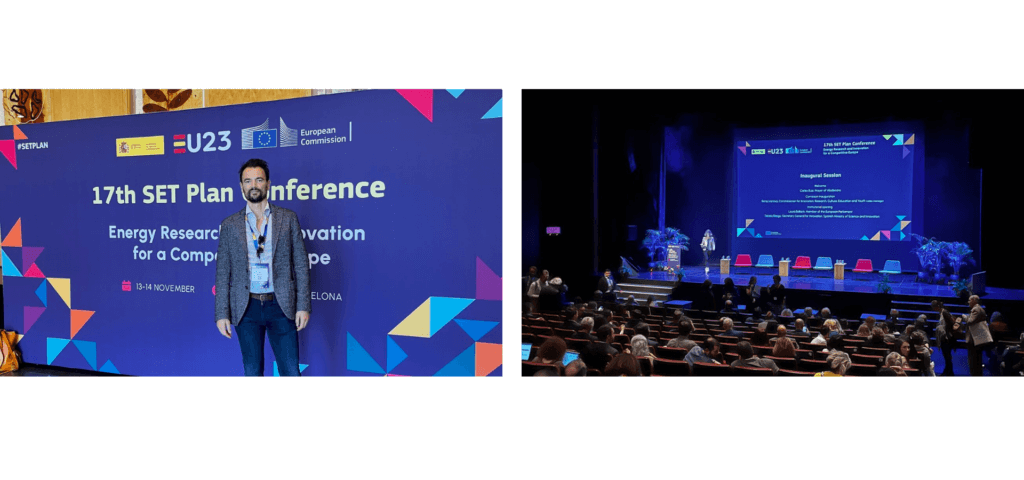
The revamped SET Plans to address energy policy
The European Strategic Energy Technology (SET) Plan was established in 2007 and since the creation of the energy union in 2015, it became one of the main instruments of the energy union’s 5th pillar on research, innovation, and competitiveness.
During the conference, the European Commission confirmed its commitment to reinforcing the SET Plan, and its acknowledgement of the key role that the initiative will play in delivering the European Green Deal, REPowerEU and the Green Deal Industrial Plan, with a particular emphasis on the Net Zero Industry Act. This will help to accelerate the clean energy transition, increase the EU’s competitiveness, and ultimately deliver the EU’s ambitious climate and energy objectives.
Boosting European competitiveness and technology sovereignty
The EU is a frontrunner in the deployment of sustainable energy solutions and in clean energy research and innovation. However, this leadership is not matched by an equally strong position in the manufacturing of net-zero technologies.
To strengthen Europe’s technological and industrial sovereignty, the European Commission has proposed the Green Deal Industrial Plan, which includes the Net-Zero Industry Act for increasing the EU manufacturing capacity of net-zero technologies, and the Critical Raw Materials Act for securing the supply of critical raw materials. The revised SET Plan will help convert innovations into marketable solutions that can be produced and scaled up in the EU.

Advancing battery technologies
The SET Plans Conference served as a global platform for discussing Sustainable Energy Technology Plans, bringing together experts, policymakers, and industry leaders to deliberate on the future of energy technologies. The CBI consortium's presence was crucial in highlighting the pivotal role that advanced lead battery technologies play in achieving sustainable energy goals.
As the battery industry continues to play a pivotal role in the global transition to clean energy, the CBI's active participation in conferences of this nature reinforces its position as a driving force in shaping the future of energy storage.
For more information on how to develop and reinforce the Brussels footprint for the advanced lead battery ecosystem, feel free to contact our Senior External Affairs Manager at nicolafilizola@batteryinnovation.org
Europe's commitment to renewable energy in the face of climate change
Climate change is happening right before our eyes and presenting new challenges for the world. European communities are grappling with increasingly frequent and intense extreme weather events that have profound impacts and demand our attention. The consequences are severe, from urban areas transformed into fiery landscapes during sweltering heat to towns inundated by floods.
The root cause of the climate crisis is our heavy reliance on fossil fuels. Burning these fuels releases greenhouse gases into the atmosphere, trapping heat and warming the planet. This disturbs the delicate balance of our climate system and intensifies the occurrence of extreme weather events. To face this crisis, we need to move towards a cleaner future with renewable energy sources such as solar and wind power. In addition to reducing our dependence on fossil fuels, renewable energy is essential for strengthening community resilience. This aligns with the European Union’s Green Deal, which outlines a comprehensive set of policies aimed to achieve a carbon-neutral economy by 2050.

European summer of extremes
This summer, Europe experienced a series of record heatwaves and devastating wildfires that have swept across the continent. The European Forest Fire Information System reports that up to 41% of the area burned in the EU is in Natura 2000 protected sites. In 2023 alone, wildfires have released more than 20 million tonnes of carbon dioxide into the atmosphere, exceeding the European average over the last two decades.
The Mediterranean region was hit hardest by this year's heat waves. The streets in Greece's ancient port town of Gytheio shimmered as temperatures climbed to an astonishing 46.4 degrees Celsius, setting a new record since record-keeping began in 2006. Life stood still in the sweltering heat, and the streets remained deserted. The heatwave also triggered a wave of wildfires that ravaged the countryside. Nearly 20,000 tourists abandoned Rhodes hotels due to the threat of wildfires, marking the largest evacuation of its kind in the country's history. The intensity of the heatwave caused widespread power outages and plunged towns into darkness. Hospitals struggled to maintain patient care, and businesses were forced to shut their doors.
In May 2023, Italy found itself in the grip of unforgiving weather. The tranquil rivers of Tuscany turned into raging torrents that surged through towns and villages, leaving destruction in their wake. Homes vanished beneath the rising waters, and critical infrastructure crumbled under the weight of the deluge. The downpours lasted 80 hours of relentless rainfall over six days, causing flooding and infrastructure collapse, leaving the affected areas in darkness. Over 20,000 citizens were forced to evacuate and seek refuge in temporary shelters such as schools, sports halls, and gyms.
Not only floods but also severe storms with strong winds are becoming a pressing concern in Europe. This year, Norway faced several relentless storms marked by a historic amount of rainfall. The Norwegian meteorological institute reported extremely heavy rainfall in parts of Norway, marking the strongest in the last 25 years. As winds and heavy rain swept across the region, trees were uprooted, flights faced delays, ferries stopped running, and power lines scummed to disruption. In cities like Oslo, people were urged to work from home. Meanwhile, in the small village of Bagn, nested in the heart of a valley surrounded by forests, landslides wreaked havoc, severing its residents from the outside world.
Researchers at Newcastle University predict extreme weather events will become more frequent due to the climate crisis. "Alongside drastically cutting emissions, countries must build more resilient infrastructure," the researchers said.

Renewable energy and climate resilience
In the face of a changing climate, Europe is at a crossroads. Floods, wildfires, and storms dominate the headlines. As extreme weather events become more frequent, the transition to renewable energy is necessary. The European Union recognises this need and has adopted bold initiatives such as the European Green Deal, a comprehensive roadmap to reach climate neutrality by 2050. Central to this strategy is the Fit for 55 initiative, which aims to reduce greenhouse gas emissions by at least 55% by 2030. Additionally, the RePower EU plan aims to decrease the dependency of the European Union on Russian fossil fuels and promote green energy.
These initiatives address the challenges highlighted by the extreme weather events. By transitioning to renewable energy, Europe reduces its dependence on fossil fuels and mitigates the effects of climate change. Renewable energy, coupled with energy storage systems, can enhance communities' resilience and help them withstand increasingly severe weather events. Renewable energy ensures a reliable electricity supply amid widespread damage from floods, provides backup power to fire stations during wildfires, and restores power to villages cut off during severe storms. As Europe navigates through new climate challenges, transitioning to clean energy becomes a vital tool to help us ensure a safer and more sustainable future in the face of these extreme weather events.
Want to know more about CBI’s work to achieve a carbon neutral economy in Europe? Subscribe to our newsletter here.
NEWS RELEASE - 17 November 2023
A new call for research proposals to support advanced lead battery innovation for energy storage systems (ESS) has been launched by the Consortium for Battery Innovation (CBI), the world’s only pre-competitive lead battery research consortium.
We are seeing an unprecedented effort to implement climate targets across the globe, led by the ambitious commitments by the European Union to become climate-neutral by 2050 and by the US to reduce emissions by 50% by 2030. According to Avicenne Energy (CBI’s Market Report 2023), the ESS market is forecasted to grow from 237 GWh in 2022 to 616 GWh in 2030. Batteries stand out as one of the big facilitators of this global shift to clean energy considering any scale of implementation, from industries to residences.
Recent analyses agree that a significant increase in battery demand will occur by 2030. Noteworthy examples are the forecast by the International Renewable Energy Agency (IRENA) that cumulative global renewable energy battery storage capacity will increase from 17 GW in 2020 to 359 GW in 2030 and estimates by the International Energy Agency (IEA) showing battery storage capacity for solar power integration only will increase at least five times by 2030. Demand will be so large it cannot be met by one battery technology alone. Such prognoses are a significant opportunity for growth of the lead battery market as a potential technology that can meet all the technical requirements on a mass market scale.
Building on the research priorities and research and innovation pathways defined on CBI’s Technical Roadmap, this call for proposals aims to stimulate projects further demonstrating improvements in lead battery performance for ESS applications. Dr Matthew Raiford, Senior Manager of CBI’s technical program, said: “The growth of the battery energy storage market is a great opportunity for advanced lead batteries, and the industry is committed to showing progress toward batteries that last longer and have higher energy density. CBI’s research program and this new request for proposals will directly contribute to that goal.”
CBI’s open call specifies two work proposal possibilities consisting of a) technoeconomic analyses of lead battery ESS or b) material science studies of failure of lead batteries in ESS. Submission of proposals is open until 22nd January 2024. More information on the desired work and guidelines for proposals is available here.

About the Consortium for Battery Innovation (CBI)
For more than 25 years, CBI has delivered cutting-edge research taking lead batteries to a new level for energy storage and automotive applications. With an expert panel made up of the world’s leading battery manufacturers and research specialists, CBI is setting the standard for advanced lead batteries and the next generation of energy storage. For more information, visit our website: http://www.batteryinnovation.org
Dr. Matthew Raiford is available for interview. For more information, please contact CBI’s media contact: Nicola Filizola, +32 489 17 76 60; nicola.filizola@batteryinnovation.org
Press release
Brussels, 9 November 2023
A system using advanced lead batteries to power a micro electric tractor tailored to the African market was selected as one of the finalists of the Milken-Motsepe Prize in Green Energy.
This innovative tractor design is being developed in Aftrak, a groundbreaking project funded by Innovate UK. The initiative brings together expertise from the Consortium for Battery Innovation (CBI), Loughborough University and UK- & Malawi-based charity Tiyeni, and the support of lead battery manufacturer VARTA.
Microgrid solutions for off-grid rural communities have high costs of implementation and maintenance that often cannot be covered by the communities, dissuading infrastructure investments. Aftrak is addressing this challenge by combining a solar energy microgrid with a micro electric tractor to mechanise land preparation. The tractor accelerates the implementation of Deep Bed Farming, an agricultural methodology developed by Tiyeni especially designed for Malawian soils. This system can provide a significant agricultural revenue boost to sustain microgrid-related costs and encourage further energy access investments.
Lead batteries inbuilt in the micro electric tractor play a central role in this green energy system, storing solar energy and providing it during land preparation activities. Dr Carl Telford, member of the Aftrak team and CBI Senior Research and Innovation Manager, said: “This is a very promising application of lead batteries that can bring real positive impact to rural communities. Having the recognition by the Milken Institute and the Motsepe Foundation is an important endorsement of the viability of lead batteries in green energy solutions.”
The Milken-Motsepe Prize in Green Energy is a global competition to reward innovators working to increase access to green, renewable energy in Africa. This year, over 160 teams from 36 countries presented their visionary ideas to the jury.
Selected as one of the five finalists, the Aftrak team will receive $70,000 in funding to further develop and test the system in a live field demonstration in South Africa in February 2024. Aftrak also remains in the competition for the final prize of $1 million, whose winner will be announced in May 2024.

About the Consortium for Battery Innovation (CBI)
For more than 25 years, CBI has delivered cutting-edge research taking lead batteries to a new level for energy storage and automotive applications. With an expert panel made up of the world’s leading battery manufacturers and research specialists, CBI is setting the standard for advanced lead batteries and the next generation of energy storage. For more information, visit our website: http://www.batteryinnovation.org
Dr Carl Telford is available for interview. For more information, please contact CBI’s media contact: Nicola Filizola, +32 489 17 76 60; nicola.filizola@batteryinnovation.org
Europe’s bold plan for clean air and economic growth
Climate change is unfolding right before our eyes. While discussions surrounding it have persisted for decades, the time for mere discourse has passed. This year, we saw Arctic sea ice hit record lows during winter, endangering polar wildlife and accelerating global warming. In contrast to the ice decline, Europe experienced devastating floods in many countries. Heavy rains and high river levels caused widespread flooding, affecting communities and infrastructure. These are not isolated incidents but signs that our planet is in distress. It is now crucial to translate words into action. That's precisely where the European Commission’s Fit for 55 package takes the stage. As a vital part of the EU's Green Deal, this visionary plan is strategically crafted to tackle the pressing challenges of climate change. Its main objective is to reduce greenhouse gas emissions in the European Union by at least 55% by 2030. As the world heats up and our environment gets sadly more unpredictable, Fit for 55 steers towards a greener, more sustainable future.
At the heart of this change is energy storage. In the context of the Fit for 55 package, there are several reasons highlighting its importance. Energy storage fuels the transition to environmentally friendly transportation and green mobility. This is possible through innovations like smart grids and battery systems powering electric buses in urban areas. Such integration of energy storage with public transportation not only reduces emissions but also makes green mobility accessible. Energy storage opens up job opportunities and boosts local communities. Furthermore, it is crucial in making energy more affordable, offering a safety net for those grappling with rising energy costs.
Driving the energy transition
As a result of the Fit for 55 initiative, energy storage operates on three essential fronts: improving air quality, generating job opportunities, and stabilising energy prices.
Air pollution is a serious problem affecting millions of people around the world. It can cause respiratory problems, heart disease, and cancer. Improving air quality is one of the key goals of the Fit for 55 package. It sets a bold target: zero emissions from new cars and vans by 2035. Energy storage is a vital driver in this journey to reduced air pollution and eco-friendly mobility.

Electric cars are the ambassadors of emission-free transport, and energy storage has the ability to power them. Energy storage also provides backup power for charging stations, ensuring that electric car owners can always find a place to recharge. Electric cars produce fewer emissions than traditional diesel-powered cars, and increasing their use helps to improve air quality. It is a stride towards a future defined by greener travel, with less smog and more fresh, clean air.
Cities and towns all over Europe are tapping into the potential of energy storage, harnessing electricity from renewable sources like the sun and wind. This stored energy fuels the urban transit networks, providing a lifeline to buses and trams. The result? A sharp decline in air pollution, quieter streets, and reduced reliance on fossil fuels. Energy storage acts as a safety net for electric buses and trains, improving the resilience and reliability of public transportation systems. In the event of a power outage, energy storage can provide backup power, ensuring that the city's transport continues to operate. Energy storage becomes an indispensable sidekick as the world shifts towards green transportation, creating a healthier environment.
Added to the industrial new development, there is another aspect of European’s stagnating and lasting issue: high employment rates. The job market is evolving unprecedentedly, leaving job seekers and employers grappling with new challenges and opportunities. As the global appetite for renewable energy grows, so does the demand for a diverse and skilled workforce. The Fit for 55 package aims to create more job opportunities within the clean energy sector. Energy storage, among other clean energy solutions, calls for an array of professionals, from engineers and technicians to electricians and software developers.
When an energy storage company establishes a new factory in a rural area, it does not only bring job opportunities to the community but also stimulates the local economy. The ripple effect is significant, as various services are required to support the factory. Construction workers, transportation services, and material suppliers all benefit from the newfound wave of activity. This synergy, driven in no small part by energy storage, highlights the potential of clean energy to power our homes, livelihoods, and economies.
Affordable energy is a pressing concern for communities and individuals globally. The COVID-19 pandemic and the war in Ukraine have aggravated the energy crisis, pushing energy prices to record highs. This is having a devastating impact on people and businesses, particularly those who are already struggling to make ends meet. The Fit for 55 package seeks to make energy more wallet-friendly for everyone, and energy storage is central to this vision.
Energy storage allows storing electricity during quiet hours when it's less expensive and tapping into these reserves when electricity prices skyrocket during peak demand. It's akin to purchasing energy at a discount rate and seeing savings grow.
Energy storage fosters self-reliance, particularly in regions prone to power hiccups or environmental concerns. Community solar initiatives, often supported by energy storage, are expanding access to solar energy, cutting the cords to the traditional power grid. This approach delivers a double victory, benefiting our finances and the planet's well-being.
Integrating an energy storage system for homeowners with solar panels complies with having a personal vault for energy. During the day, the excess energy is safely stored away. This energy is later used to lighten homes without sending electricity bills soaring. Energy storage systems are transforming the energy landscape, addressing the energy affordability crisis and making it more accessible for everyone.

Towards a greener future
While the Fit for 55 package may initially seem like a distant, abstract concept, its impact is already spreading through our daily lives. Together with energy storage, this visionary strategy has the potential to redefine our homes, our cities, and our communities. Energy storage fuels the shift to environmentally friendly transportation, cleansing the streets and reducing our dependence on fossil fuels. Energy storage solutions create job opportunities, uplift local communities, and place affordable energy within reach.
When the Fit for 55 package and energy storage team up, they have the potential to transform societies, reshape our relationship with the environment, and pave the way for a greener, more sustainable world.
Uncovering the key role of energy storage in Europe's green revolution
In the scorching summer of 2023, Europe was gripping an unprecedented heatwave. This extreme weather triggered a series of devastating events, including wildfires raging through Southern France and droughts that left the water reservoirs in Spain critically low. Such disasters were a stark reminder of the pressing need to address climate change head-on, an undeniable call to action.
In response, the European Commission and the cities across the continent have united, propelling Europe toward a more environmentally conscious future. At the core of this collective effort lies the Effort Sharing Regulation, which assigns emission reduction targets to each member state. With their sights firmly set on these targets and a dedicated commitment to combat emissions, European cities are charting a course towards sustainability, driven by innovation and a shared vision of a greener tomorrow.
This article explores three local initiatives - Copenhagen’s and Barcelona’s Climate plans and Tallinn as Europe’s Green Capital. Together, they exemplify how cities actively invest in renewable energy, advocate for sustainable transportation, and advance emission reduction. What unites these cities is their reliance on energy storage, with batteries emerging as integral components within these systems.
A green wave all over Europe
In the heart of Catalonia, Barcelona takes a bold stance in Europe’s ongoing battle against climate change. The city’s Climate plan sets a clear course towards reducing emissions and embracing renewable energy. At the forefront of this environmental mission are energy storage systems, with time-tested batteries powering businesses and homes across the city.
Barcelona’s first energy community epitomises this shift. Along the bustling Barcelona Port, solar panels soak in radiant Mediterranean sun. What sets this community apart is its ability to capture excess solar energy, preventing it from going to waste. Instead, it’s harnessed by energy storage systems. This stored energy becomes a precious resource, fueling essential port operations, from lighting to refrigeration. The Barcelona Port stands as an exemplary testament to the transformative potential of energy storage, pushing the city toward its climate goals one watt at a time.

Copenhagen has set an ambitious goal: to become the world’s first carbon-neutral capital by 2050, as outlined in its Climate plan. This visionary concept encompasses many initiatives, all connected by a central theme, energy storage.
A standout feature of the plan is Copenhagen’s extensive electric bus fleet, powered by battery energy storage systems. These systems store the energy that propels emission-free buses along the city’s bustling streets. In 2021, Copenhagen made waves by introducing 100 electric buses, to reduce annual greenhouse emissions by 5,000 tons. The city’s vision stretches even further, anticipating 50,000 electric vehicles on its roads by 2025, with advanced energy storage technologies seamlessly integrating modernity into urban life.
Copenhagen’s Climate plan encompasses initiatives ranging from retrofitting buildings with energy-efficient technologies to harnessing wind turbines and photovoltaic systems. In this vibrant metropolis, we witness the potential that arises from the marriage of renewable energy and energy storage solutions.
One of Europe's greenest cities is Tallinn. This progressive city with mediaeval charm was honoured with the European Green Capital 2023 title, recognising its ambitious sustainability plans. To achieve carbon neutrality, Tallinn is making substantial investments in renewable energy and energy-efficient initiatives. The city’s strategic approach to sustainability hinges on energy storage and the development of a smart grid, using digital technology to manage the flow of electricity.
A shining example of Tallinn’s commitment to energy storage is Ülemiste City Energy Storage Park. A robust energy storage system is nested within the park, ensuring no clean energy goes to waste. The park reduces the city's dependence on polluting fossil fuels and paves the way for increased local clean energy generation.
Tallinn’s mayor, Mihhail Kõlvart, firmly believes cities will be crucial in achieving European climate and sustainability targets. “European Green Capitals need to take leadership in creating sustainable, resilient and inclusive cities of the future to ensure a high-quality living environment,” stated Kõlvart, emphasising the value of collaboration among cities.

A sustainable energy storage transition
These local initiatives showcase the proactive spirit of European cities in the battle against climate change. In their stories, energy storage is a bridge connecting renewable energy to our daily lives. In Copenhagen, energy storage ensures swift and modern public transportation. In Tallinn, it fuels the city’s green revolution. In Barcelona, it keeps the bustling port community in motion.
With their progressive climate plans, these cities remind us of the importance of energy storage and its role in achieving the goals set by the Effort Sharing Regulation and the European Green Deal. By hopping on the energy storage bandwagon, cities across Europe are speeding toward a sustainable and low-carbon future.
New Report Reveals How Lead Batteries are Featured in Chinese Energy Storage Systems
As the global power industry wrestles with the need to expand energy storage to accommodate renewable generation and meet soaring demand for electricity overall, a new CHR Metals Limited report states that countries like China are shifting some focus toward lead batteries over lithium for battery energy storage systems.
“The growth of lead battery energy storage systems in Asia, especially in China, is promising, driven by efforts to reduce fossil fuel use and achieve net-zero goals,” said Dr. Alistair Davidson, director of the Consortium for Battery Innovation. “With the energy storage market expected to exceed 400 GW by 2030, the CHR Metals analysis highlights significant opportunities for lead battery projects regionally and globally.”
Currently, only lithium-ion and lead batteries operate on a scale sufficient to meet demand, representing over 98 percent of the rechargeable battery market through 2030.
Lead batteries, known for their efficiency and reliability, continue to play a vital role in backup power for critical infrastructure, hybrid automotive, and motive power applications. Advanced lead batteries emerge as an ideal solution for energy storage, boasting superior performance, safety, and scalability to align with the U.S. and E.U.'s net-zero emission goals for 2050.
This week’s CHR Metals Limited Report also notes:



Contrary to misconceptions, lead batteries stand out as the most recycled and innovative products globally, minimizing the carbon footprint by utilizing recycled materials. Over 97 percent of lead batteries in North America and Europe are collected and recycled, with 85 percent of the recycled lead used in manufacturing new batteries—a testament to the circular economy in action. (Source: Association of Battery Recyclers)
Lead batteries can help deliver on climate-neutral pledges and provide energy resiliency in specific applications.
“Despite ongoing misconceptions, ongoing research and innovation have propelled advanced lead batteries to impressive strides in performance over the past decade,” added Davidson. “These advancements, including improved cycle life, lifetime, and overall energy efficiency, translate into substantial benefits in terms of total cost of ownership and reliability.”
While embracing an overall diversification of energy sources and plans to increase renewables, the versatility and proven performance of advanced lead batteries position them as a scalable and cost-effective solution to meet today's demands and future energy storage needs.
The lead battery industry could be in line for a $10 billion share of the burgeoning energy storage market within the next decade.

Research into upcoming projects and opportunities indicated that the ESS landscape is forecast to be 550GWh by 2030 with a value of $30-$50 billion for all battery technologies.
The lead battery industry has set its sights on securing 100GWh of that potentially lucrative ESS market.
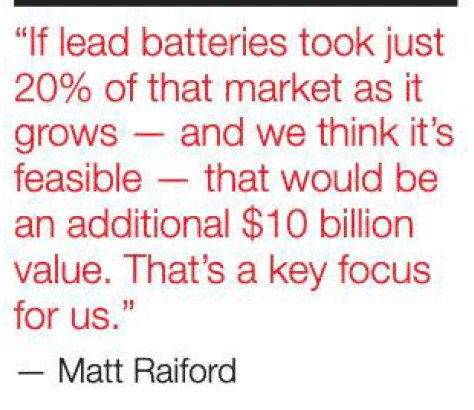
CBI launched its first technical roadmap in 2019 setting specific goals for the end of 2022.
“It was all really market-driven. We used those targets to select our program. And the result of the
projects that we funded have pretty much shown that we delivered on these goals that we set.”
There are now batteries on the market, primarily from our members in the US and Asia, that meet that criteria.
This means there are now have advanced lead batteries on the market-oriented toward ESS that have an impressive globalized cost of ownership for the system, says Raiford.
“The way we view it as battery scientists is cycle life — most key stakeholders look at it from total cost of ownership.
“So we see stationary batteries now that really perform along the lines of lithium.”
Read the full article from Batteries International
The Department of Energy (DOE) held its Energy Storage Grand Challenge Summit (ESGC) online and in Atlanta, GA on July 25-27, 2023.

Dr. Alyssa McQuilling, CBI’s U.S. Research and Innovation Manager, shared her thoughts and key takeaways from the event.
McQuilling noted that this is an unprecedented time for the development of energy storage with historic investments being made by the federal government to aid in commercialization.
As the DOE and other agencies are taking an “all of the above" approach to meeting the demands of a modern grid; there’s room for all the technologies to meet customers’ needs for a reliable grid (while also maintaining affordability).
At CBI, we encourage participation from all technologies to meet the growing global energy storage demand. CBI organized a response from the U.S. industry, and DOE ESGC efforts used the feedback from CBI members in a DOE Lead Battery Lift-off Report.
In this report, an in-depth analysis of lead battery innovation pathways was conducted, resulting in portfolios of lead battery improvements capable of helping the DOE reach the 0.05$/kWh/energy throughput goal outlined in the ESGC. These improvements include advanced manufacturing, improving cycle life, advanced control algorithms, standardization of devices and protocols, and demonstration projects to understand the impact of scaling on cost.
At the same time, we recognize how well-suited lead batteries are because they are a cost-effective, safe, and reliable solution. DOE recognizes lead batteries for this value as part of the energy storage solution as they currently represent much of the market.
Another takeaway is the ongoing emphasis on U.S. manufacturing, jobs, and ensuring that historically underserved communities also benefit through adopting energy storage technologies.
As a result, it will become increasingly important to make new connections that can accelerate growth in the industry because (again) the speed at which things are developing is unprecedented. These connections are critical and include collaboration and working across industries.
In the last session of the summit, the discussion focused on ROVI, or Rapid Operational Validation Initiative, (part of a collaborative effort from 6 national labs) to figure out how to model system performance/degradation/failure for different battery technologies by combining approximately one year of system data with machine learning/AI modeling approaches to figure out how the system will perform over a 15 to 20 year lifetime.
CBI is answering the many DOE opportunities by utilizing the breadth and expertise of our membership and bringing in key institutions and systems providers. These collaborative teams are poised to deliver a high-performing, sustainable, domestic solution to meet the many goals of the ESGC.
Below are two Energy Storage Innovation reports that were recently released:
A solar and lead battery-powered tractor, that is being developed as a farming solution for Africa, was named a semifinalist for the Milken–Motsepe Prize in Green Energy. The competition rewards projects who expand access to reliable, affordable, and sustainable electricity in Africa.
AfTrak or Africa Tractor, is a prototype program funded by Innovate UK as part of its Energy Catalyst Round 9. The program was one of 20 teams selected to advance to the Semifinalist Round for a competition by the Milken Institute and the Motsepe Foundation. Semifinalists receive $20,000 for the continued development and testing of their designs, as well as complimentary access to a Stanford Online course to help build their businesses.
AfTrak was selected from over 160 entrants around the world, in over 36 countries.
This potentially revolutionary tractor design, featuring lead batteries, is an African farming project created in collaboration between the Consortium for Battery Innovation (CBI), UK- & Malawi-based charity Tiyeni, and Loughborough University.
“We are delighted to be selected as a semifinalist in this prestigious competition—a reflection of the inspiration and technical capabilities of the Loughborough and Tiyeni teams. It’s also a great indicator of CBI’s ambitions.” said Carl Telford, Senior R&I Manager at CBI.
Across large areas of Malawi, under the few inches of topsoil, there is a heavily compacted layer of rock-hard earth through which plants cannot penetrate. Tiyeni has created an innovative agricultural method called Deep Bed Farming (DBF). The tractor, being developed at Loughborough University, will be a low-cost, hand-operated, solution for farming in the difficult soil.

The proposed AfTrak project is a micro electric tractor capable of mechanizing land preparation in line with Tiyeni’s Deep Bed Farming to prepare soil to a depth of 400mm.
For this program, AfTrak aims to provide an affordable green energy solution in sub-Saharan Africa, utilize a solar array and lead battery system to power micro electric tractors for Deep Bed Farming, and create a self-sustaining model for decentralized energy access.
An independent panel of expert judges determined the 20 teams receiving funding. Moving forward in the competition involves semifinalist teams demonstrating the effectiveness of their ideas in field tests.
They will be evaluated for their ability to:
After the Semifinalist Round, judges will select five finalist teams to conduct another round of field tests in Africa. Then in May 2024, the judges will award a $1 million Grand Prize. A Runner-Up Prize of $250,000 will also be awarded.
The Milken Institute is a nonprofit, nonpartisan think tank focused on accelerating measurable progress. They bring together the best ideas and innovative resourcing to develop blueprints for tackling critical global issues.
The Milken–Motsepe Innovation Prize program is a series of multiyear, multimillion-dollar innovation competitions for technological solutions that accelerate progress toward the UN Sustainable Development Goals (SDGs).
One of the two innovation competitions in the program, the Milken–Motsepe Prize in Green Energy, aims to expand access to reliable, affordable, and sustainable electricity in Africa as an essential factor in achieving long-term economic growth and shared prosperity. The competition advances progress toward SDG 7 (ensuring access to affordable, reliable, sustainable, and modern energy for all).
The semi-finalists were announced on June 6, 2023.
More information:
NOTE: AfTrak is the second bid application to be awarded to CBI in the past year after LoCEL-H2, a sustainable microgrid project using lead batteries and a novel, lead-battery-enabled funded by the European Commission under the Horizon Europe program.
CBI is working jointly with Electric Applications Incorporated and C&D Technologies and Trojan Battery Company on a project to demonstrate the improved fast charging capability and increased total energy throughput of newly developed batteries.
“We’re looking to charge batteries faster for use in motive power applications and how it impacts AGM battery life,” said Shawn Peng, Senior Director of Energy Storage Research for C&D Technologies and Trojan Battery Company.
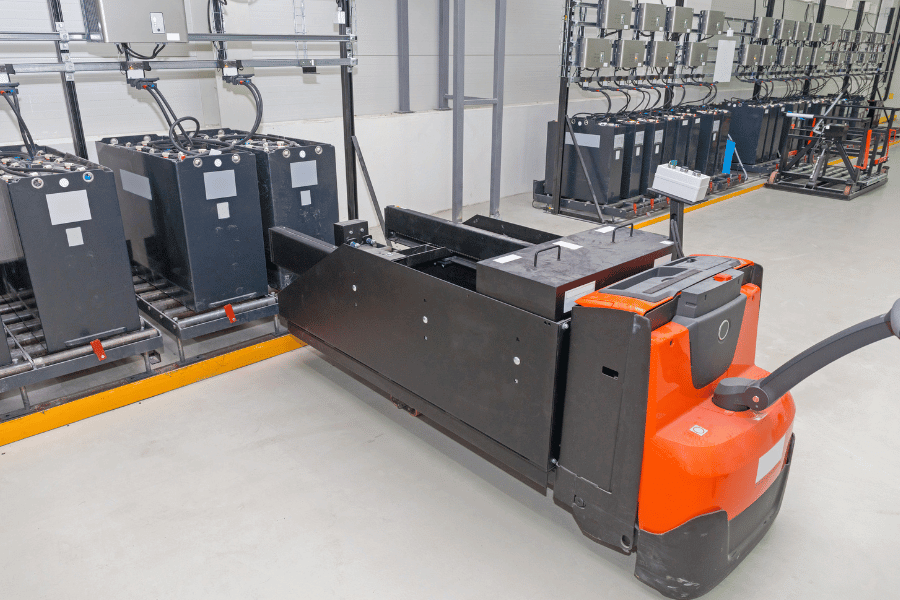
Peng explained that they are trying to determine the best approach and set of procedures for fast charge of a forklift – whether for a one-hour lunch break or overnight. This will help several companies more effectively utilize their motive and mobile fleets.
“We want to prove the best strategy for opportunity charging at 24/7 facilities, starting with a study on two different designs for a 2V battery to collect data and measure the KPIs.”
Specifically, the R&D department at C&D Technologies led by Peng, is initiating a 2V cell study to investigate and determine the proper charging current and voltage for a fast-charging protocol. The protocol will optimize the charging efficiency and reduce charging time through the life of batteries.
Then a third-party testing lab, Electric Applications Incorporated, will perform electrical testing of 8V batteries 48V packs using the optimized protocol. The 48V pack testing will be representative of what is used in motive power applications, like forklift traction batteries.
Peng added, “We want to see how far we can go with the technology to benefit the life and cost of lead acid batteries.”

CBI spoke to Marcus Young, an Associate Professor and Associate Department Chair for the Undergraduate Program at the University of North Texas (UNT) about a two-year project that kicked off in February 2023 to look at materials in low voltage (12V) batteries for electric vehicles in an effort to further improve performance of lead batteries.
Lead batteries are still used in virtually every car on the road-from combustion engine vehicles through to Electric vehicles. Working alongside UNT, East Penn Manufacturing Company, and ECOBAT, CBI will further study the 12V battery electrochemical processes for materials and duty cycles common for lead batteries used in electric vehicles. By understanding more of how these batteries function in different charge conditions, temperature, and climate, we can determine what changes will attain a longer life span and better performance.

Electric vehicles rely on lead batteries to provide safety functionality in the case of failure of the main propulsion battery. This application is referred to as low voltage or auxiliary battery functionality. The lead batteries used in low-voltage EV applications use advanced alloys with different metallic additives to achieve current levels of performance. The study will focus on two specific additives, Ba (barium) and Bi (bismuth), and how their grain structure and influences on corrosion rates and crystallization would affect grid performance in the conditions found in EVs Previous research has shown that grids with Ba additives have reduced oxide formation, while Bi facilitates faster recrystallization.
Using XRM – or X-ray microscopy, this project will investigate corrosion in batteries and look at the impact of Ba or Bi additives on battery life. The technique requires relatively thin samples to be used. Extremely thin pieces have been created and used on the nano scale, so that they can be x-rayed. As the x-ray penetrates through these panels, researchers will isolate areas of interest and study the impact of aging time to see a source(s) of potential problems.
Beyond lab-scale techniques, synchrotron experiments at the APS at Argonne National Laboratory will be used on large samples linking lab findings to real world lead battery products used in auxiliary applications.
“We’re making battery life better for everyone,” said Young. He explained that ultimately this research will impact daily users as the battery storage community creates faster, better, and more efficient sources.
Innovate UK Funding Malawi Trial of Low-Cost Tractor Featuring Lead Batteries and Solar Power for Deep Bed Farming
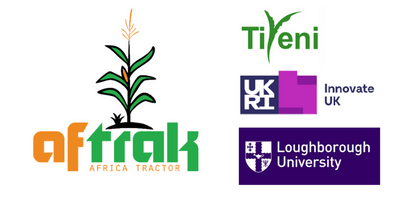
[LONDON, 20 April, 2023] AfTrak or Africa Tractor that will use solar and lead batteries, is both a prototype program and £270k project funded by Innovate UK as part of its Energy Catalyst Round 9 program, which officially kicked off in London today.
Innovate UK will fund a prototype and a sustainable business plan for a potentially revolutionary tractor design, featuring lead batteries. The UK program, which invests in innovative business ideas across all sectors, will support an African farming project created in collaboration between the Consortium for Battery Innovation (CBI), UK- & Malawi-based charity Tiyeni, and Loughborough University.
“The kick-off event exceeded expectations. We found it extremely valuable to network, not only with the Energy Catalyst team, but also with other innovators and stakeholders,” said AfTrak’s Project Manager, Dr. Carl Telford, a CBI’s senior research and innovation manager.
Across large areas of Malawi, under the few inches of topsoil, there is a heavily compacted layer of rock-hard earth through which plants cannot penetrate. Tiyeni has created an innovative agricultural method called Deep Bed Farming (DBF) through their extensive business experience and a network of agricultural advisers. The tractor, being developed at Loughborough University, will be a low-cost, hand-operated, solution for farming in this difficult soil.
Dr. Jonathan Wilson, a specialist in systems and mechanical engineering and leader of the Loughborough team notes, “We have a unique opportunity to take Tiyeni’s unique Deep Bed Farming technique and add Loughborough’s engineering & mechanization know-how to dramatically decrease upfront labor requirements.”
The proposed AfTrak system is a micro electric tractor capable of mechanizing land preparation in line with Tiyeni’s Deep Bed Farming to prepare the soil to a depth of 400mm.
Over 800 million people have no reliable access to electricity, primarily in sub-Saharan Africa, and rural regions of Asia. AfTrak also provides power for agricultural applications such as water irrigation and domestic applications such as phone charging, electric cooking, and lighting.
The AfTrak tractor will be trialed in Malawi by the Tiyeni team, with a focus on enabling an important agricultural technique, Deep Bed Farming.
Tiyeni’s Country Director, Isaac Chavula comments, “This is a breakthrough. Finally, I can see a solution through the AfTrak tractors to break the hardpan soil that has long challenged farmers. By adopting the Deep Bed Farming technique, farmers can now envision relief with the AfTrak tractors.”
In this initiative, AfTrak aims to:
Tiyeni Executive Director Alex Gerard added, “I am so excited that Innovate UK has funded our project to accelerate the end of food insecurity in Malawi. Combining our innovative Deep Bed Farming method with a sustainable solar tractor, we could speed up the support for millions of small-holder farmers.”
Telford added, “This is a perfect application and new opportunity area for utilizing lead batteries. Moreover, the anticipated outcomes are valuable. It’s an exciting time for renewable energy and lead battery storage, as this mechanization of the Deep Bed Farming technique could be a game changer.”
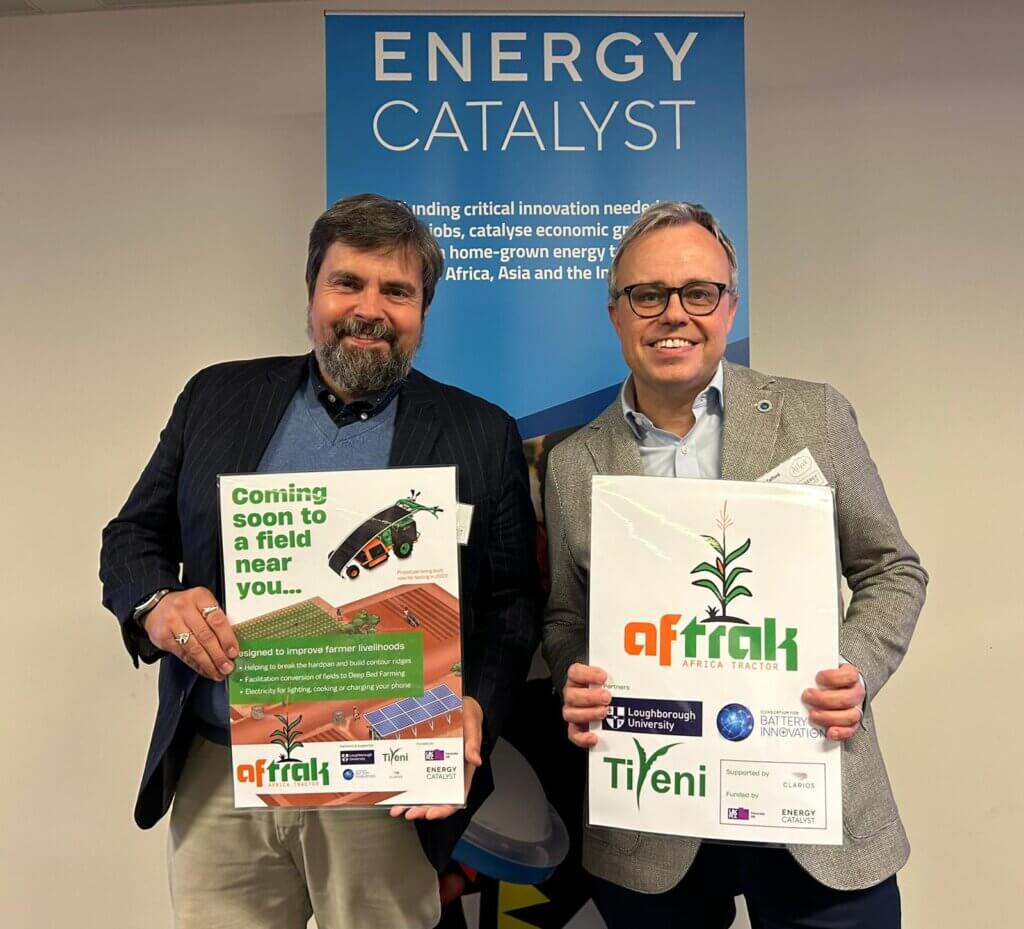
About Consortium for Battery Innovation
The Consortium for Battery Innovation (CBI) is the world’s only global pre-competitive research organization funding research into lead batteries for energy storage, motive, and automotive applications. For more than 25 years, with its global membership of battery manufacturers, industry suppliers, research institutes, and universities, CBI has delivered cutting-edge research pushing the boundaries of innovation in lead battery technology, setting the standard for advanced lead batteries and the next generation of energy storage. For more information, visit our website: batteryinnovation.org
AfTrak is the second bid application to be awarded to CBI in the past year after LoCEL-H2, a sustainable microgrid project using lead batteries and a novel, lead-battery-enabled funded by the European Commission under the Horizon Europe program.
About Loughborough University (LU)
The Wolfson School of Mechanical Electrical and Manufacturing Engineering is one of the biggest engineering schools of their kind in the UK with a research portfolio of around £52m. CREST (Centre for Renewable Energy Systems Technology) has a cohort of around 60 academics, researchers, and Ph.D. students and a good range of laboratory facilities for prototype manufacture and testing.
About Tiyeni UK (TU)
A UK based NGO who have funded the development of Deep Bed Farming (DBF) as a response to extreme food poverty within Malawi. The organization has grown year on year as support and demand for DBF has increased. Alex Gerard was appointed as a full-time Executive Director in 2021. Tiyeni’s board has extensive business experience and a network of agricultural advisers who have contributed to the development of DBF. Farmers adopting DBF can double their agricultural yields and all but eliminate requirements for expensive and environmentally damaging imported fertilizers.
Tiyeni Malawi (TM) is a Malawian company, funded by Tiyeni UK and operated at arm's length by a Malawian team, and led by an experienced Country Director, Isaac Monjo Chavula. Tiyeni continues to grow in size as DBF spreads across the country – especially since Malawi government approval. Historically the organization has focused on agriculture but is now diversifying into water management and carbon credits. Tiyeni is focused on ensuring all farmers in Malawi have access to training in DBF either through government extension workers, other NGOs, or through direct training for Tiyeni. The team is also developing the business model for smallholder deep bed farmers so they can leverage the other DBF benefits of carbon sequestration and water management.
The International Lead Association and Consortium for Battery Innovation have opened an office in Brussels to support the lead and lead battery value chains, and planned energy storage projects, as the EU strengthens its commitment to delivering net zero ambitions.
The decision to establish an EU base reinforces ILA’s long-term commitment to developing a sustainable lead value chain in Europe, as decision-makers focus on strengthening the EU’s strategic autonomy and embedding circular economy principles.
Dr Andy Bush, ILA’s Managing Director said: “The EU benefits from well-established lead and lead battery value chains and there is a need to nurture and develop the industry and the technologies we support on a much bigger scale to meet ambitious climate targets. While we have been working in Brussels for many years, our new office will act as a base for continued efforts to maximise support for the lead industry as well as continuing to engage in important regulatory discussions on a range of files.”
The move comes as the EU introduces new proposals designed to shore-up the supply of critical raw materials and boost low carbon industries in the shape of the Net-Zero Industry Act. Meanwhile, a proposal to include lead on the REACH authorisation list is being fiercely opposed by ILA, representing lead producers and downstream users who rely on lead to produce a wide range of economically and socially important products and applications.
The joint office will also act as a base for the Consortium for Battery Innovation’s energy storage work, with a focus on new projects working in collaboration with EU institutions, member companies and other partners. As lead batteries can be infinitely recycled, and are considered to be one of the top five most sustainable consumer products, CBI aims to support the work of the European Commission in strategically significant areas, such as the EU Industrial Strategy on energy autonomy and electric vehicles, and to play a pivotal role in the achievement of EU’s climate neutrality goals by 2050.
Dr Alistair Davidson, CBI Director, said the decision to open a Brussels office builds on the research group’s recent success winning a Horizon 2020 project to develop innovative microgrid technology for off-grid communities.
He said: “We are working with a wide range of partners in Europe to develop more energy storage projects which will help the EU meet net zero targets through innovative battery-based solutions. These include developing pre-competitive technical blueprints for applications such as EV charging stations and renewable energy storage facilities.”
Initially two CBI employees will be based in the Brussels office, on Avenue de Tervueren. Nicola Filizola joins as CBI Senior External Affairs Manager, and Dr. Athanasia-Maria Tompolidi as CBI Research and Innovation Manager.
Planning is Underway for LoCEL-H2, a Four-Year, €10million Sustainable Energy Storage Project, Co-funded by the European Union
[LE BOURGET-DU-LAC, February, 2023] – A recently won European Union project by the Consortium for Battery Innovation (CBI) will pair advanced lead batteries with green hydrogen to deliver a new source of clean, reliable, and sustainable energy storage for off-grid communities in Africa.Awarded through Horizon Europe, this collaborative, four-year project called LoCEL-H2, (or Low-cost, Circular, plug & play, Off-grid Energy for remote Locations including Hydrogen), combines the expertise of lead battery manufacturers, academia, national laboratories, component manufacturers, and companies who are focused on integration, microgrids and renewables.
LoCEL-H2 will generate renewable energy, storage, and fuel for deployment in isolated and remote regions of Africa, to support communities that cannot connect to an electricity grid.
“The excitement around this innovative project is reflected by everyone involved,” said Dr. Carl Telford, the senior research and innovation manager at CBI. “Energy poverty is a problem that affects millions of people worldwide because they lack consistent access to electricity.”
The majority of the world’s population living in energy poverty are in Sub-Saharan Africa and are dependent on traditional stoves and fuels for their cooking. As a result, most of the domestic chores are handled by the women in these households, who then develop an increased health risk from a constant exposure to biomass, kerosene and/or coal fuels used for cooking.

The LoCEL-H2 project will provide a sustainable energy source as well as access to clean fuels. Another benefit will result in the education levels within these communities being positively impacted since they will now have access to online information through a reliable energy connection.
“This project is important to help address the United Nations Sustainable Development Goal 7 (Affordable and Clean Energy), while having an impact on other areas such as health,” noted Dani Strictland, professor of electrical power engineering at Loughborough University and a member of the LoCEL-H2 partnership.
This project involves nine partner companies across western Europe who will develop new technology for a novel distributed microgrid, as well as a Battolyser. The Battolyser is a new solution for producing clean hydrogen technology to power cooking surfaces and would replace biomass fueled stoves.
Whether as a response to climate impacts or future energy storage needs, advanced lead batteries are often an overlooked and innovative technology that bring safe, reliable, low-cost solutions to pair with a renewable source.
By combining lead batteries with wind and solar power, this forward-looking energy storage project will deliver ongoing, affordable electricity to off-grid communities and become a deployable solution for other energy-deprived areas around the globe.
The two pilot areas for the project will be focused in Zambia and Ivory Coast. Angel Kirchev, a senior expert, Ph.D., HDR, at CEA Tech and LoCEL-H2’s project coordinator said, “CEA looks forward to coordinating this exciting and challenging 4-year project which will bring sustainable energy and green hydrogen to challenged communities.”
Watch our LoCEL-H2 Kick-Off Video here.
![]() Project Co-Funded by the European Union
Project Co-Funded by the European Union
The members of the partnership are CEA, Hoppecke, Hollingsworth & Vose, UNINA, Loughborough University, Sunkofa, University of Gabes, SAS Réseaux Hydrogène Décarboné RHYDE, and LUMS.
Contact: Lara Wilson
CBI Sr. Communications Manager
Lara.wilson@batteryinnovation.org
About Consortium for Battery Innovation
The Consortium for Battery Innovation (CBI) is the world’s only global pre-competitive research organization funding research into lead batteries for energy storage, motive, and automotive applications. For more than 25 years, with its global membership of battery manufacturers, industry suppliers, research institutes, and universities, CBI has delivered cutting-edge research pushing the boundaries of innovation in lead battery technology, setting the standard for advanced lead batteries and the next generation of energy storage.
For more information, visit our website: batteryinnovation.org
About Loughborough University
Loughborough University is the home of world leading engineering, with an international reputation for being at the forefront of technological innovation and for maintaining extensive links with industry. The Wolfson School of Mechanical, Electrical and Manufacturing Engineering is one of the biggest engineering schools of its kind in the UK. The school aims to provide international leadership in research and innovation with a focus on climate change and net zero and has an unrivalled educational experience. Loughborough University is consistently in the top 10 in many university ranking tables for student experience.
Learn more at lboro.ac.uk/departments/meme/.
###
In January, a few members of CBI’s team visited eastern Pennsylvania to tour part of East Penn Manufacturing’s facility which produces over 500 types of batteries, including a large number of lead battery designs. Indeed, East Penn produces gigawatt hours of batteries every year – and is a real-world, established gigafactory.
Norbert Maleschitz, East Penn’s Executive Vice President & Chief Operating Officer, shared his excitement about the future of lead batteries. With innovation as part of their DNA, he explained that East Penn is pushing its technology further through an ongoing investment into R&D and Engineering. As lead batteries’ role in meeting future energy demands grows, Maleschitz and East Penn support improvements in manufacturing because they are key for enhancing technical solutions to both customers and the industry.
Dr. Matt Raiford, CBI’s Senior Technical Manager, inquired about the projects and enhancements underway at East Penn. There are several activities focused on improving electrode design, material innovations, and overall battery designs. The results will be a key part in continued performance improvements for lead battery technology and vital for ensuring that these batteries can meet future energy storage requirements.
CBI also had the chance to discuss and view some ongoing project work at the Briedegam-Miksiewicz Innovation Center R & D Department. Dr. Carl Telford, CBI’s Senior Research and Innovation Manager, met with Perry Kramer, Director of Technology, Research and Development at the Center and was able to look at how they are working with New Zealand-based development partner, ArcActive, to fully take advantage of the development of this novel technology.
Perry explained how ArcActive Technology features a carbon felt that replaces the standard lead grid structure of the negative current collector, enabling significant increases in charge acceptance. A battery featuring this technology helps to lower emissions in micro hybrid vehicle applications, and also improves the charging characteristics of the traditional 12 V lead batteries used in electric vehicles (these ‘auxiliary’ batteries power a vehicle’s accessories and critical safety functions).
Perry shared an overview of another large project that is focused on increasing cycle life. Bi-polar battery technology offers the potential to increase cycle life by three times over standard Absorbed Glass Mat (AGM) products while also reducing weight. The applications of this technology could range from use in automotive to reserve power and motive power, as well as other energy storage applications.
Telford and the rest of the team were particularly interested in East Penn’s work related to future manufacturing processes for lead batteries. Manufacturing needs to be very precise and predictable to enable the construction of a commercially successful, reliable, and dependable lead-battery product. East Penn has a large capability in manufacturing engineering and automation. Further innovations in manufacturing will provide the right mechanisms for extending battery longevity in future applications.
Finally, the team toured East Penn’s smelter and recycling facility. Lead batteries are a fantastic example of a product designed for complete end of life recycling, and currently over 99% of lead batteries are collected and recycled in North America. Their facility recycles everything including the acid. The facility recycles 182 million pounds of lead on an annual basis. In addition, they have a process in place to remove nitrogen oxide exhaust or off-gases and use them to create other products that benefit an adjacent industry.
Overall, CBI greatly appreciated the tour of East Penn to learn how their facilities’ efforts and leadership truly make the lead battery such an important contributor to global energy storage and a model for a more circular economy.
Our members are vital for CBI’s ecosystem as they help us develop messages, interventions, roadmap, and our own call for projects. This helps CBI conduct pre-competitive research that benefits all CBI members, the battery industry in general and the wider research community.
As a large battery maker, Clarios are an invaluable member. Additionally, Clarios were instrumental in setting up and supporting the work of CBI’s Research and Innovation Manager, Dr Carl Telford, in developing public funding opportunities in Europe and deliver exciting, game-changing projects.
CBI team visited Clarios HQ in Hanover, Germany, to strengthen this collaboration and to learn more about their current R&D work.
« We have developed the Start-Stop technology in AGM to become the benchmark technology for premium cars with micro-hybrid functionalit. Innovation in process technology like the Clarios Power frame technology has been leading the way and is presently the standard in the industry. For the future, we see a lot of life left in Lead technology. We see further innovation potential in charge acceptance and cycle life to further improve the technology » (Dr Christian Rosenkranz - Vice President Industry and Governmental Relations EMEA at Clarios & Chairman at CBI)
Watch the first video from CBI's visit to Clarios:
The CBI team visited Castanheira do Ribatejo, in Portugal, to meet with Exide Technologies and to find out more about its facilities.
Exide operates two state-of-the-art solar installations at its battery production (in Castanheira do Ribatejo) and battery recycling facilities (in Azambuja), using lead batteries (see our case study here).
José Barreiros (Director Product Development Industrial EMEA at Exide) explained how it works in detail:
« We have a combined capacity of 4.5 MWp, with overall 11.250 solar panels installed. This is enough energy to supply more than 1.500 households. With these solar parks, we have reduced the carbon emission by more than 20% across both sites.
In our production plant, the PV installation is combined with our own battery energy storage system (BESS). It contains 70 inverters and 290 Sonnenschein Solar battery cells, with an available stored energy of around 500kWh. The battery storage system is part of a ‘Green Social Building’. It operates as an island for the factory workers, where the solar panels provide energy during the day and the batteries provide power at night ».
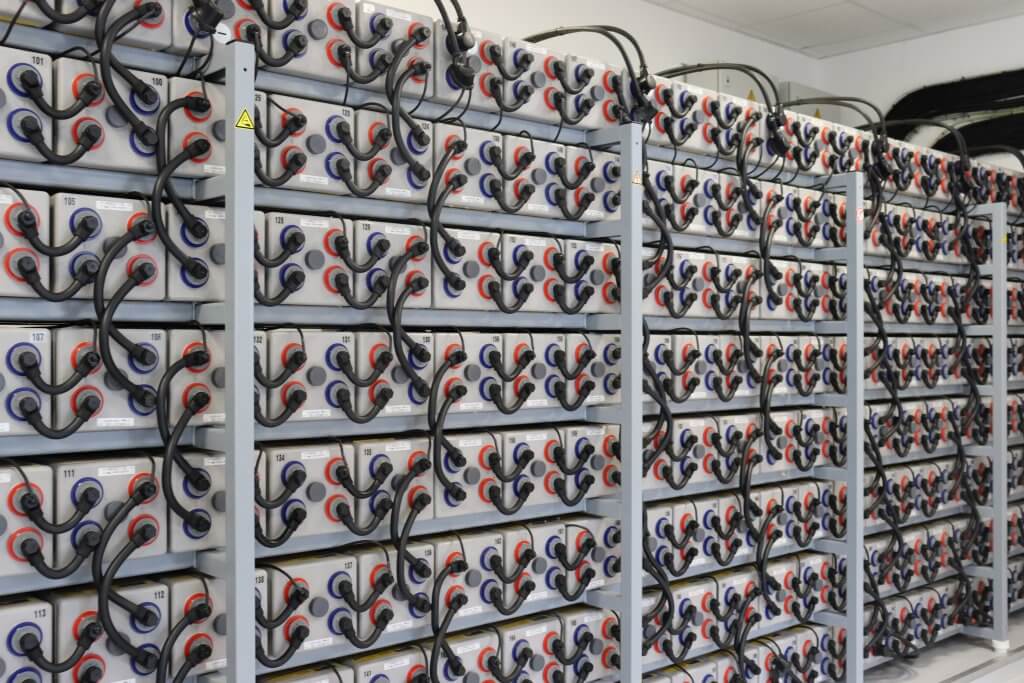
The type of lead batteries used in this Battey Energy Storage System (BESS) are Exide’s very own Sonnenschein Solar gel batteries. This battery range « has been used in complex, large-scale network power applications across the world for many decades », José continued:
« With their proven reliability, maintenance-free and first-class safety features, gel batteries offer a long service life and protection against deep discharge. Also, since lead batteries are fully recyclable at the end-of-life, our Sonnenschein Solar range provides added sustainability for renewable energy storage applications ».
For CBI, energy storage applications utilising battery technology is an increasingly important market-key to help governments around the world meet future electrification and decarbonisation targets and Exide’s Product Development Director agrees:
« As a global player of battery and energy systems, Exide Technologies is in prime position to inspire today’s and tomorrow’s generations with smart energy storage solutions, as we recognize the need to both preserve and energize the world. Exide Technologies offers smart energy storage solutions to support the transition from fossil energy to renewable energy sources. We focus on storage systems and solutions for greenhouse gas reduction and the optimization of TCO in energy-intensive industries.
Our energy storage solutions will enable businesses to become ‘greener’, more productive and in control of their energy usage and costs ».
Another benefit of this project is its unique and innovative Battery Management System (BMS) for lead batteries:
«Our installation is utilizing the battery management system to control the voltage of each cell and the temperature on each string, via four probes, assuring a tight control of the depth of discharge and charge on each string.
Taking into consideration that the battery operates on one cycle per day, this will allow deeper control of the state of health of the cells and act as soon as needed. It also predicts the available energy of the system depending on the power», concluded José.
This installation is one of many worldwide energy storage systems using lead batteries. If you’re interested in more projects like this one, please explore our Interactive Map.
NEWS RELEASE
The U.S. Army has chosen advanced lead battery energy storage systems to enhance its operational effectiveness in disaster zones and in combat.
A project led by Paragon Solutions, Inc., and the Consortium for Battery Innovation (CBI) is providing a new set of systems that can provide power for critical military operations anywhere in the world.
Paragon, a woman-owned engineering firm, and a member of the Consortium for Energy, Environment, and Demilitarization (CEED), partnered with CBI, a global lead battery research hub, to develop the winning proposal in response to a request issued to CEED members by the Consortium Management Group (CMG). The effort is sponsored by the U.S. Government under an Other Transaction Agreement between CMG and the U.S. Army Corps of Engineers.*
Paragon and CBI will develop transportable, robust, lead battery energy storage systems that can be integrated into tactical microgrids and demonstrated at the Contingency Basing Integration Training Evaluation Center (CBITEC) at Fort Leonard Wood, Missouri. The CBITEC site is managed by the U.S Army Engineer Research and Development Center, Construction Engineering Research Laboratory (ERDC-CERL).
The eighteen-month $3.5 million program also seeks to demonstrate how U.S. Army units can use lead batteries sourced from the Department of Defense supply system and from locally available sources such as vehicles, while increasing the lifecycle for certain battery types to meet battlefield energy demands.
Retired U.S. Army Captain and government technical lead for this project, Tom Decker, said: “This is an important project to the Army because in any type of contingency environment, while in combat situations or following a natural disaster, it all falls back on the Army Corps of Engineers to provide power to continue operations. And this is where lead batteries come in.”
“By being able to use lead batteries that are available on the ground and make an energy resource out of them, we have the ability to continue whatever mission we’re on, be it disaster relief or engaging in combat.”
“This just adds to our capabilities. The durability of lead batteries has been proven over many decades so we know what we’re getting when we use the technology. But then we get the added value of the advanced lead battery systems which the industry supplies, and this is the technology that makes the systems viable.”
“Lead batteries give us the ability to deploy energy storage systems anywhere in the world, enhancing our resiliency. And one of the current US administration’s priorities is reducing carbon footprint, so by decreasing our use of fuel and adopting more innovative energy storage systems, we’re reducing our carbon footprint too.”
Implementation of the systems will be done to NATO specifications, and if successful, would allow for deployment in many different countries. This solution aims to overcome issues with host nation power grids by designing an energy storage system that accepts host nation power, stores it, and then provides it in a form that is compatible with U.S. Army equipment.
The resiliency, safety and reliability of power supplies are priorities for military operations. Lead batteries have been chosen for the project as the technology of choice because of their inherent safety and robustness in extreme weather as well as their availability in the field. Using lead batteries would provide Army Commanders with local sources of batteries in vehicles and telecommunications towers around the world.
The Paragon/CBI team will develop energy storage systems providing between 125kWh to 250kWh of critical energy using three different lead battery technologies provided by US-based battery manufacturers, Advanced Battery Concepts (ABC), East Penn Manufacturing and EnerSys. These operational workhorses will be transportable, easy to operate by military personnel, and can be integrated into tactical microgrids to provide power for critical loads.
The project team will also develop a ‘plug-and-play’ 30 kWh energy storage system, which will give soldiers the ability to plug into an energy storage source made up of used lead batteries found in locally available sources, such as vehicles. Marcus Ferguson, ERDC-CERL project officer, and manager of the CBITEC site said: “After Hurricane Maria in Puerto Rico in 2017, approximately 130,000 damaged vehicles were lying unused with an untapped energy source: lead batteries. If this energy could be harvested, future disaster relief and other military operations, wherever they are in the world, could be provided with reliable, low-cost energy”.
The prototype lead battery energy storage systems will be constructed and tested in various simulated duty cycles to recreate typical field conditions for military operations. The aim is to develop systems that could be rolled out across the U.S. Army. Furthermore, when the lead battery ESS prototypes are connected to Army tactical quiet generators (TQGs) the systems will provide low heat signature and quiet energy assets - essential requirements for U.S. Army activities in the field.
Dr. Matt Raiford, CBI project manager, added: “Lead batteries have been chosen for this important project based on their resilience, consistent performance at all temperatures and their accessibility. This will set a benchmark for smaller microgrids providing essential power and security in a range of settings from remote rural areas to larger military installations.”
Raiford continued: “CBI is committed to developing advanced lead batteries for energy storage applications and the recognition that this mainstay technology has been chosen to support U.S. Army operations is testament to the inherent safety, reliability and sustainability of the technology.”
*Effort sponsored by the U.S. Government under Other Transaction number W9132T209D001 between the Consortium Management Group, Inc., and the Government. The U.S. Government is authorized to reproduce and distribute reprints for Governmental purposes notwithstanding any copyright notation thereon.
The views and conclusions contained herein are those of the authors and should not be interpreted as necessarily representing the official policies or endorsements, either expressed or implied, of the U.S. Government.
END
Notes to editors:
1: For more information please contact Hywel Jarman in the CBI media office on +44 7718 483887. Visit www.batteryinnovation.org.
They are the future of the lead battery industry: highly-educated, motivated and brimming with new ideas and ambition. CBI spoke to three talented scientists, new to the lead battery industry, to find out more about their perceptions of the workplace and to hear their suggestions about how the industry can continue to attract the brightest and the best.
Max Parker, a PhD Student at Warwick University (United Kingdom); Miguel Rodríguez Gómez, PhD Student at INMA (Spain) and Grace Rocha, a Scientist at ITEMM (Brazil). From industry’s first impressions, learning new areas for innovation and crucial for our future, to the industry’s urgent effort to attract more young talents, they are the voices of a new generation inside the lead battery industry and here’s how they feel about it.

CBI : Tell us a bit about when you first joined this industry. What were your expectations ?
Max : « Batteries are an exciting area with a lot of areas to look at and lots of different things to analyse. Before joining the industry I didn’t really know what made one battery better than the next, why this one can charge faster than the other or why this one lasts longer than the other. Lead batteries are interesting because they have been around for such a long time, but there is still so much more to look at, and still so much more to learn. »
Grace : « To be really honest I didn’t think very much about the whole Lead Battery industry. I just wanted to be part of a great industry with a great social impact, which everybody near around knows Moura does to the city and to the state. Now, I am truly surprised with how much I enjoy working on the field. I see that there is a excitingopportunity for progress learning and development in every area of lead battery technology. »
Miguel : « I had just finished my masters degree and I was looking for research into something related to the energy or climate crisis. Energy storage is essential to be able to cover the off-peak hours of renewable production, and to move away from fossil fuels (which also have rapidly diminishing reserves). So, I started to look for research lines related to batteries. The truth is that I knew almost nothing about lead batteries, I thought there were only in cars and little else, but when I learned a little more and discovered that they can be used for many things and above all that recycling is very high, I decided to go for it.”

CBI : And now that you’ve been working for the industry, what’s your current perception ?
Max : « I think that there are lots of challenges ahead for the world of lead batteries. I would like to see more innovation to meeting these challenges, especially in the energy storage sector, which will be a big part of the future of lead batteries. Innovation is constant, and constantly necessary, because the use cases of lead batteries are changing. We need to be providing the new and innovative batteries of not just today but also the future. »
Miguel : « There is still much to discover and improve, and I think that since the materials of the batteries are cheap and abundant (but also safe and resistant), it will be very important in the years to come. On the other hand I think that production is too focused on the automotive industry. There is less and less demand for cars worldwide and energy is becoming more and more expensive, so I am convinced that the future is energy storage and back up systems. »
CBI : What can you learn from working with professionals who have been in the industry for a long time? What do you learn from each other in your projects ?
Max : « Professionals with a lot of experience have a wealth of knowledge and, but it is up to them to pass that on. I started from zero knowledge and having an experienced professional to provide guidance would have been of great help to ensure that I wasn’t misunderstanding things. Since being involved with the CBI, it has enabled contact with battery experts within companies and other universities. Some of them can share knowledge that is not as well known or written about in technical literature. And this leads to better experiments, better understanding and better development. »
Grace : « One of my favorite things about my job is the opportunity to network with everybody in the global lead battery chain. I’ve noticed that there is so much contribution on the field. For example, every time I have a call with a supplier, a partner, a specialist, I learn something new. And I feel they are always willing to help, they are so welcoming to answer my questions (and I do have lots of questions !). The Lead battery is not a technology that you learn through on college here in Brazil. So everything I know so far, I’ve learned from their experience. I’m really glad to see how some of the ideas I’ve given actually worked and contributed with the development of the projects. »

CBI : What things would you like to happen in the industry to attract more talent ?
Miguel : « There are two main things to attract younger professionals. The first is to raise awareness of the lead battery industry, communicating its importance globally and showing that it is possible to have a fruitful career in it. The second is to communicate that it is a technology that can help with very important problems that especially (but not only) the younger generations are going to suffer, such as the climate crisis, the energy crisis and the resource crisis. For me personally, it is essential that 99% of the lead in batteries is recycled. I would not like to work with a polluting technology that ends up accumulating in landfills. I also believe that research lines focused on renewable energy storage and batteries for trains (which is the most efficient and less polluting transport, both for people and goods), should be encouraged. »
Max : « From my perspective in the world of academia, I would like to see more PhD funding, more internships, sponsorships and more university partnerships. Early career development and career paths can encourage people to join. Another option would be a summer job/internship/work experience in a battery company. Getting young people into the world of batteries requires investment in them, and guidance. With the right support and guidance a PhD student can produce some excellent research. But without the right funding they will go to do something else, or a PhD in another field. »
Grace : « I believe the answer is undergraduate students. Talking about the Brazil scenario, I would like to see the industry work more with universities. For example, investing in programs to develop new projects for undergraduate students. I think that would be a win/win situation : The students would have the opportunity to work on a real life problem and learn about the lead battery from experts ; and the company would have the opportunity to work with new researchers and a new university department. This is a great way for students to be more prepared before they join a lead battery company.
I think even quick programs like a “Battery Marathon”, something like a Hackathon, would make students curios about the area and starttheir development from college. Today, at ITEMM we are already making this approach. Recently we started the implementation of a research and innovation center in a technical college in the city, focused on developing young talent.»
CBI : Would you recommend the lead battery industry as a place to work for young scientists?
Miguel : « I recommend the lead battery industry to anyone interested in energy storage. It is a well-known technology but there is still a lot of room for improvement, and research is always interesting and fun. From my work I especially like the direct relationship with the industry, which is eager to generate more and more research projects. This year at ELBC, I have learned a lot and it has been a very rewarding experience to learn about the latest advances in research and also to see what the market trends are. »
Grace : « I do recommend. The more I work on the field the more I see there is still so much room for new ideas. It is a great time to be working in the battery field! Environmental care is one of the major concerns around the world, and batteries are key to this! One of the great things about the lead battery industry is that we are a safe technology, critical for energy storage, which helps reduce the global carbon footprint. Something people forget is that we are also an industry that has a true circular economy. »
Both Max and Miguel won this year’s CBI & EUROBAT Student Award, a great way to promote their work in the industry by bringing them to ELBC 2022 as speakers. In 2022, CBI also visited ITEMM in Brazil, where we had the chance to meet Grace and learn about her work at the Research and Development Department.
Interested about their work with CBI? Check out our blogs and videos:
This European research collaboration aims to optimise lead battery performance for micro-hybrids. Researchers from Fraunhofer ISC and Wroclaw University are investigating the effect of carbon surface chemistry on the battery performance, and the goal is to understand which kind of surface chemistry is beneficial for improved charging and discharging behaviour for lead batteries.
Research projects like this one are proving to be relevant for wider scientific topics, such as low-emission vehicles, electrification and decarbonisation, as well as for carbon additive research.
According to Expert Group Manager from Fraunhofer ISC, Jochen Settelein, to follow the energy transition, batteries play a central role and lead batteries are safe, highly recyclable, produced at a low cost and the entire value chain exists within single countries or regions. By undertaking research and innovation into the lead battery technology, researchers are finding their way to adapt this « well-established technology » to the needs and requirements of the current energy transition.
Through this specific project, CBI is bringing together leading European researchers, scientists, and institutions to work towards a common goal, achieving CBI’s Technical Roadmap goals for the automotive sector, such as improving DCA.
Watch full video about this project here:
A key goal of CBI’s Technical Roadmap to improve the DCA of lead batteries, a technical parameter highly relevant for the automotive industry which encompasses lower emission vehicles such as start-stop, micro-hybrids and electric vehicles.
The CBI-funded project "Best practice of cell testing for EFB regarding DCA and high-temperature durability" delivers a significant improvement of DCA while also delivering uncompromised water consumption and improved corrosion durability.
With project partners from across the European value chain – universities TU Berlin and Fraunhofer ISC, car company Ford and battery manufacturer Moll in– this project encompasses the diverse players involved in Europe’s innovative lead battery industry.
As the automotive industry continues to move towards decarbonisation and electrification, new functions are required to increase safety and comfort. “These trends impose growing demands on the energy storage devices used within automobiles. In order to take advantage of these opportunities and defend against competition from other technologies, the lead battery must continue to adapt and improve”, explains Sophia Bauknecht from TU Berlin.
This project in particular is essential for the growing start-stop and micro-hybrid market as “Dynamic Charge Acceptance (DCA) and water loss are critical factors for the efficiency and lifetime of start-stop batteries, and they need to be improved to stay competitive with other battery technologies”, says Prof. Dr Julia Kowal from TU Berlin.
“Changes in the material synthesis and preparation are needed for cost-efficient and faster material developments. Especially if it works to measure the DCA from a simple measurement of a reduced size cell, improvement of DCA can become much faster because only small cells are needed for material screening and then only the promising materials need to be scaled up to complete batteries”, she continued.
Lead batteries are a vital part of automotive applications, including SLI, start-stop and micro-hybrid applications. As the industry shifts towards electrification, this technology will continue to evolve and adapt in order to provide better safety and security features through secondary low-voltage EV batteries, EFB and AGM batteries.
Pre-competitive research projects underway through CBI’s Technical Program, like this one, not only help CBI to develop better practices for the industry, but also strengthen the collaborative work between automotive manufacturers and battery application specialists to continue the innovation push driven by CBI.
Watch Part II video of CBI's visit to TU Berlin
Interested in related topics ?
CBI Research and Innovation Manager Position
Location Durham, North Carolina preferred
Contract Initial contract 18 months
Hours 35 (full time)
Job Summary
The Consortium for Battery Innovation, a rapidly growing global battery research consortium, is seeking candidates for an 18-month position as CBI Research and Innovation to be based at its North American office in Durham, North Carolina.
The successful candidate will have excellent scientific knowledge, ideally including battery technologies, in addition to strong communications and interpersonal skills. The candidate is expected to efficiently manage a diverse portfolio of technical activities working independently.
Required Qualifications
Preferred Qualifications
Job Responsibilities
This role will involve regular North American, European and Asian travel.
Compensation
The salary and benefits package will be commensurate with education and experience.
About CBI
The Consortium for Battery Innovation is a global innovation hub which supports cutting-edge pre-competitive research and promotion of innovation in lead battery technology. The consortium includes more than 100 member companies and organizations worldwide, consisting of lead producers, battery manufacturers, battery users, materials suppliers and research institutions.
The candidate would be joining a vibrant and dedicated team, with offices in Brussels, North Carolina, and London. More information can be found here.
Application
Interested candidates should submit a CV and cover letter to info@batteryinnovation.org by October 16, 2022.
We are committed to equal opportunities and creating an inclusive environment for all our employees. We welcome applicants regardless of ethnic origin, national origin, gender, race, color, religious beliefs, disability, sexual orientation or age.
The Consortium for Battery Innovation, a rapidly growing global battery research consortium is looking to appoint an experienced communication manager to support our corporate communications programme, handling the full range of disciplines including external, digital and member/internal communications.
The role will report to the CBI Director, and is an opportunity to help deliver and influence a wide range of innovative communications projects and campaigns in Europe, the US, Asia and Africa. The post will be based from the CBI office in Durham, North Carolina.
Job Title Communications Manager
Location Durham, North Carolina preferred
Contract Initial contract 18 months
Hours 35 (full time)
Required Qualifications
Job Responsibilities
This role will involve regular North American travel and occasional European and Asian travel (15-25% time)
Compensation
The salary and benefits package will be commensurate with education and experience.
About CBI
The Consortium for Battery Innovation is a global innovation hub which supports cutting-edge pre-competitive research and promotion of innovation in lead battery technology. The consortium includes more than 100 member companies and organizations worldwide, consisting of lead producers, battery manufacturers, battery users, materials suppliers and research institutions.
The candidate would be joining a vibrant and dedicated team, with offices in North Carolina, and London. More information can be found here.
Application
Interested candidates should submit a CV and cover letter to info@batteryinnovation.org by October 21, 2022.
We are committed to equal opportunities and creating an inclusive environment for all our employees. We welcome applicants regardless of ethnic origin, national origin, gender, race, color, religious beliefs, disability, sexual orientation or age.
One of the highest priority goals set out in CBI’s Technical Roadmap is improving DCA –Dynamic Charge Acceptance for automotive lead batteries.
It’s a key area of work that CBI works with universities, research institutes, battery companies and car manufacturers around the world to tackle.
At TU Berlin, an ongoing research project has identified that on a battery level “single-pulse test for DCA and continuous overcharging for water consumption bear only weak correlation with results obtained under field conditions, particularly when most advanced (high DCA) battery technologies are addressed”, says Sophia Baucknecht, Graduate Research Scientist from TU Berlin.
As part of the research team made up of TU Berlin, Fraunhofer ISC, Ford and Moll, Sophia’s research aims for a better alignment and co-operation between car makers and battery application specialists.
With what aim? To establish best practice cell-testing for EFB regarding DCA and high-temperature durability.
These two metrics are vital for the enhanced performance of automotive lead batteries used across the global vehicle fleet, such as start-stop and micro-hybrids.
The research is increasing the efficiency of lead batteries by “finding out if lab-cell tests of DCA and water loss can be scaled up to a complete battery”, explains Prof. Dr Julia Kowal from TU Berlin.
If there’s higher efficiency and better charge acceptance, “less energy is lost during charging and braking and so the fuel consumption is reduced”, she continues. This is a critical step for automotive battery innovation towards decarbonisation and electrification for more fuel-efficient cars with a lower carbon footprint.
Watch the first video on CBI's visit to TU Berlin:
Interested in related topics?
The Global Lead Battery Innovation Conference and Expo (ELBC), co-organised for the first time by CBI, took place in Lyon, France (6-9 Sept).
As a warm-up to the main conference, CBI brought together lead battery industry experts from all over the world, to take part in:
On day one of ELBC, CBI’s Director (Dr Alistair Davison) set out a positive assessment of the opportunities for advanced lead batteries highlighting CBI’s roadmap, which charts a path to a new generation of batteries in a session dedicated to Markets and Trends.
And CBI technical experts, including Begüm Bozkaya, Technical Manager, outlined the CBI technical program with an insightful presentation focusing on improving energy storage systems and automotive batteries as key innovations in the industry.
To promote CBI’s Technical Roadmap and its work in driving innovation across the industry Dr Matthew Raiford, CBI’s Senior Technical Manager updated delegates. And in a major announcement, Dr Carl Telford impressed ELBC attendees with news of a 10 million Euro funding award for an innovative lead-battery powered microgrid project in Africa, brokered by CBI.
In his presentation entitled « Opportunities for Lead Batteries in Energy Storage Systems », Dr Telford spoke about the use of lead batteries for sustainable energy projects and presented for the first time this novel project funded by the European Commission that gathers lead batteries, renewables, and hydrogen.
As always at ELBC there were many networking opportunities, with delegates able to meet face to face for the first time in four years. The well-attended gala dinner took place at La Sucrière, and WGBI’s (Women in the Global Battery Industry) held its first meeting in Europe. This important initiative aims to bring more women to our industry and empower them through networking sessions, workshops, and mentoring opportunities.
CBI is very much looking forward to seeing all these fantastic attendees and delegates again at ELBC 2024 in Milan, Italy.
Watch the Event video:
The share of renewables for electricity generation by 2030 is expected to grow to 35%, and this global shift is relying on innovative technologies to harness this energy in clean, affordable and sustainable ways.
A big focus area for this shift is how to ensure that the clean energy transition fairly includes communities in parts of the world without reliable access to electricity or energy resources.
Responding to Europe’s Horizon call for funding proposals, a consortium of organizations spanning the energy, batteries, hydrogen academic and NGO sectors has joined together to develop a novel concept called LoCEL-H2.
Aiming to develop a sustainable, scalable, multi-vector energy solution to improve the lives of vulnerable communities, the project is based on renewables, battery storage and a novel hydrogen technology for cooking/fuel.
Low-cost, Circular, plug & play, off-grid Energy for remote Locations including Hydrogen, LoCEL-H2 is recognising the need for a fair energy transition across the globe and working to deploy pilots in two communities that have no access to reliable sources of energy.

This innovative concept includes battolyser hydrogen technology under development at Loughborough University, which will be used as cooking fuel for the communities where the modular off-grid energy solutions will be installed.
The future needs innovation. And it needs technologies to work together and complement each other to deliver innovative solutions for the clean energy transition. Bringing together different sectors, each with expertise in various technologies and energy solutions, LoCEL-H2 aims to ensure clean energy is paired with socioeconomic benefits for remote communities around the world.
See Press Release here.
Watch the first video about the project:
NEWS RELEASE
A project pairing advanced lead batteries with green hydrogen could transform the supply of clean, reliable energy storage in Africa and Asia, after the Consortium for Battery Innovation formed a partnership awarded Horizon Europe funding worth almost €10 million.
The collaboration between organisations in the project - called LoCEL-H2 (Low-cost, Circular, plug & play, off-grid Energy for remote Locations including Hydrogen) – includes battery-makers, academia, national laboratories, component manufacturers and companies with experience of integration, microgrids and renewables.
The project will generate clean, reliable, sustainable energy for deployment in off-grid communities in regions such as Africa and Asia, using a lead-battery electrolyser – known as the battolyser – to support isolated communities who cannot connect to an electricity grid.
The battolyser is a novel, low-cost solution for producing clean hydrogen-powered cookers replacing firewood stoves. The International Energy Agency predicts that 2.5 billion people globally rely on firewood and stove-based cooking, predominantly performed by women in low-income countries.
By installing battery energy storage, paired with renewable systems harnessing wind and solar power, this innovative project will enable reliable and low-cost electricity to be supplied to hard-to-reach communities.
Dr Carl Telford, Research and Innovation Manager at CBI, said: “We are delighted to win Horizon Europe funding for such an innovative project. CBI is fortunate to have an incredible team of partners, enabling us to develop a truly new concept, featuring not only a specially designed lead battery, and a novel distributed microgrid, as well as the battolyser hydrogen technology. It’ll also be developed with social-science and business experts to ensure we can make a positive difference to those communities using the technology.”
The members of the partnership are CEA, Hoppecke, Hollingsworth & Vose, UNINA, Loughborough University, Sunkofa, University of Gabes, SAS Réseaux Hydrogène Décarboné RHYDE, and LUMS.
LoCEL-H2 advisory-board member Patrick Clerens - Managing Director of the CLERENS team that worked with CBI to develop the bid - said: “Combining long and short-term storage as well as integrating different energy vectors is the beauty of this project. We at CLERENS are very happy to have written this winning proposal and are sure that the results will further the integration of renewable energy for energy-deprived communities and energy islands, and therefore a reduction of fossil fuel use.”
Committed to research and innovation, this new European Commission funded project recognizes the innovative potential of advanced lead batteries and related technologies to usher in the renewable energy ambitions of communities around the globe.
END
Notes to editors:
About Consortium for Battery Innovation:
The global market for electrified vehicles is expanding. To support this growth, robust vehicle charging infrastructure will be required. Indeed, recent studies suggest that between two and three million public chargers will be required in the European Union through 2030.
As part of an initial four-project funding push in Europe, CBI and members are developing a project concept focusing on the use of lead batteries in electric vehicle (EV) charging applications, primarily as a buffer solution.
Rapid chargers can charge a standard BEV from 20% to 80% state of charge in approximately 30 minutes at a 50kW output power. However, they are restricted to areas where the supply can sustain a sudden 50kW load. In some cases, grid reinforcement will be required to enable installation rapid chargers and guarantee sufficient power is available.
One solution to this significant issue is to deploy battery buffers. Battery buffered EV charging does not require disruptive and expensive grid reinforcement.
There are also other benefits – it is possible to charge the batteries with renewable energy (for instance, solar or wind) to either provide primary power or augment an existing grid connection
CBI with our project partners will develop and deploy a lead-battery-buffered BEV charging solution for one or more specific scenarios, for instance sites in remote or limited-grid-capability locations.
Lead batteries offer some interesting technical advantages in applications where charger use can be infrequent. They are excellent at high state of charge (SOC). In comparison to other battery technologies, lead batteries are safe to use, as they contain water-based electrolyte, which does not present significant risks to customers or the environment.
Lead batteries also have the potential to reduce overall system overhead cost—by eliminating the need for balancing electronics, air conditioning & thermal management. In addition, the global lead battery industry is well positioned to capitalize, due to its sustainability & circularity, mature regulation, robust supply chain, and strong safety record.
We are in currently in discussion with vehicle OEMs, charging station operators, and out network of battery experts to bring this project to reality.

Dr Paul Everill, Chief Technology Officer at Black Diamond Structures LLC, joins the ALBA mini blog series to share insight into the “Mechanisms and morphology limiting charge acceptance’ breakout session.
++
Battery development based on iterative component variation testing is the lead industry’s modus operandi. The tactic, however, is considered by some to be “foraging in the dark” since a company must be prepared to accept many wrong turns before a goal is met. That company must further accept that the process will need repeated every few years as new components hit the market.
An efficient development plan includes a portion of fundamental research; an element of deep science that develops strong structure/function relationships more reliant on true understanding of the system rather than a transitory “1 + 1 = 3, I don’t know why, but I’ll take it for now” mentality.
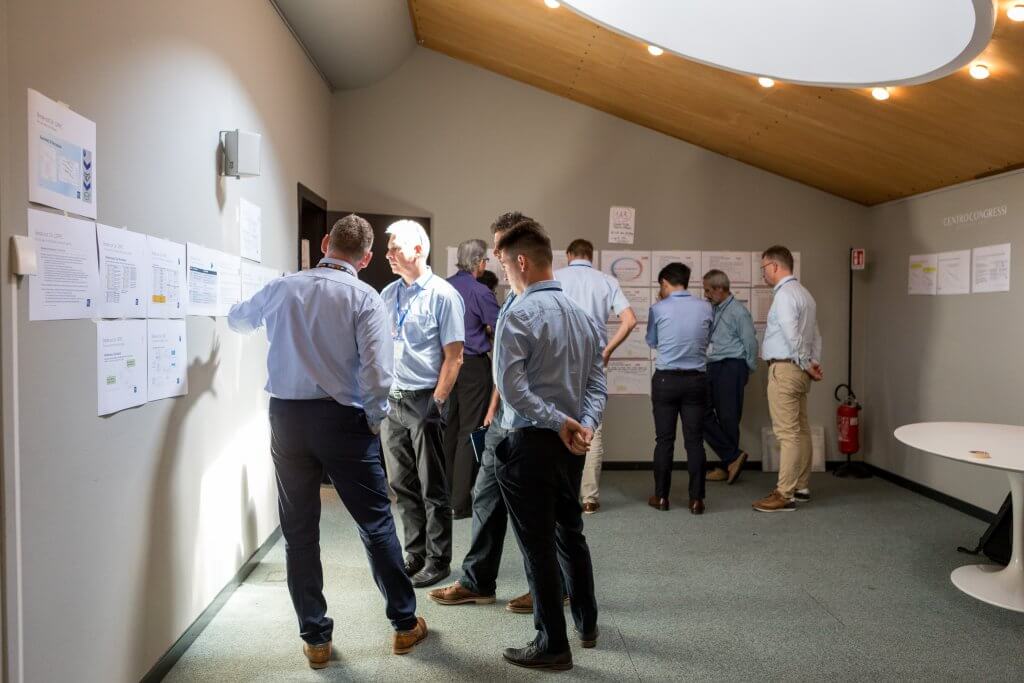
The Consortium for Battery Innovation encourages such understanding through precompetitive, collaborative research. One embodiment is the Automotive Lead Battery Advancement workshop (ALBA), conceived by Ford Motor Company’s Dr. Eckhard Karden, where some of the world’s leading battery scientists discuss lead’s deeper mechanistic and morphological questions:
Crucially, these topics are not academic novelties destined to be buried in the annals of an obscure journal. They are critical questions which, when answered, can direct battery developers to create the next generation of batteries smartly, “with the lights on”.

Interested in related topics? Read some more of CBI's blogs:
The Graphene Council organized the “Commercialization Conference” and invited CBI's Technical Manager, Begüm Bokaya to speak at the event.
Carbon additives like graphene can increase the cycle life and charge acceptance of advanced lead batteries, which are critical for energy storage and automotive applications.
Learn more about the event and carbon additives for lead batteries in the video from the event.
Do you know how to properly measure the cold crank amps (CCA) or dynamic charge acceptance (DCA) using bench-top cells?
I didn't until six years ago, not until the lead battery industry started a series of intensive workshops named DCA & Heat - now called the Automotive Lead Battery Advancements (ALBA) workshops.
The ALBA workshops serve as the key forum for developing know-how and advancing research in 12 V lead batteries for automotive applications. One of the most consistent topics of the breakout discussions for ALBA has been based around cell-level testing, how to properly perform high-throughput research in a laboratory using bench-top small lead battery cells.
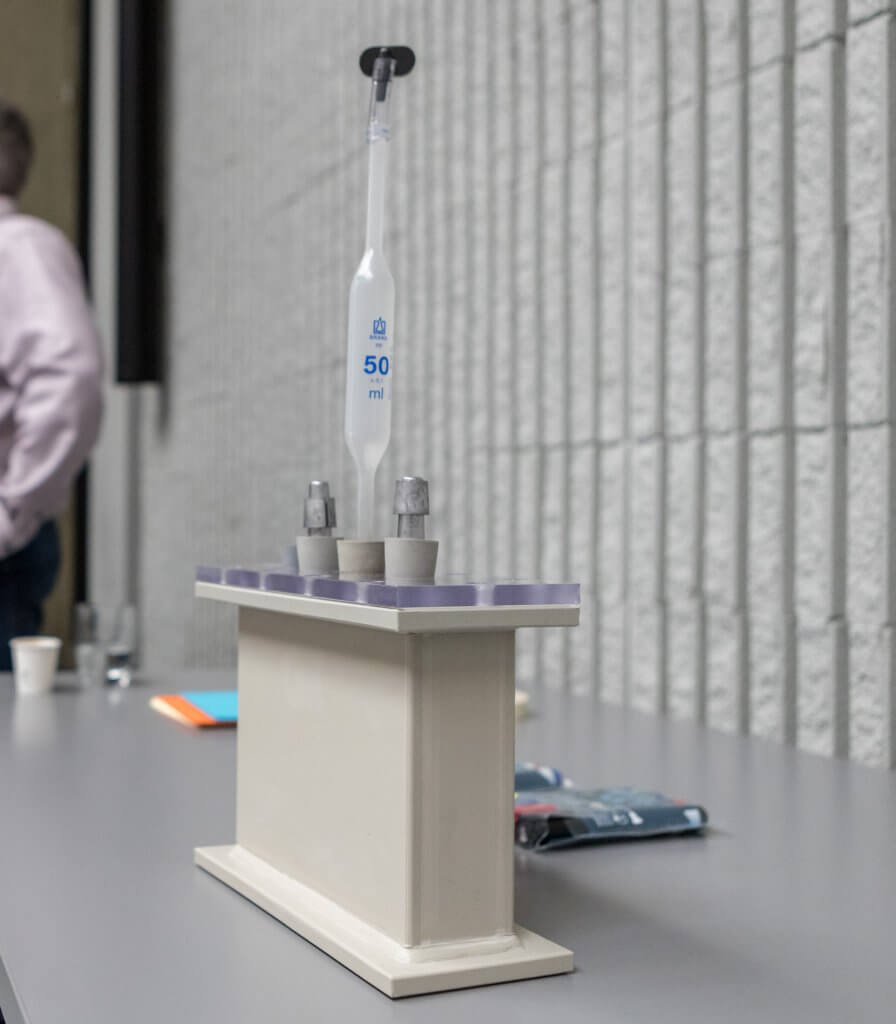
In the latest iteration of ALBA workshops held in Bergamo, Italy - organised by CBI in partnership with CENELEC and headed by Ford's Eckhard Karden - this specific breakout session on the evolution of cell testing and development was characterized by topics focused on:
Cell-level testing in laboratories is the fastest and highest throughput method for moving innovation in lead batteries, and this session pushed developments in DCA and high-temperature endurance, which are key performance indicators for micro-hybrid and auxiliary applications outlined in CBI's Technical Roadmap.
Keep an eye out for future blogs where colleagues from the global lead battery industry join CBI's blog to share insights from the other breakout sessions held during the ALBA workshops.

The role of battery energy storage in low and middle-income economies is increasingly important as a way to deliver clean, sustainable energy.
For many it means access to reliable power supporting everything from schools and education to cooking and refrigeration.
CBI is exploring opportunities to use lead batteries in energy storage systems such as microgrids, alongside a novel hydrogen-production technology (called The Battolyser) that also uses lead battery components.
Innovate UK invited CBI to visit Malawi, a country in Sub-Saharan East Africa, as part of its Energy Catalyst programme.
We joined start-ups, clean tech companies and connected with public and private energy organisations in Malawi, including the Malawi government, energy associations and the UK High Commission.
But, above all, we were able to learn first-hand the challenges and needs of local communities.
Designed to help companies find project partners who are applying for funding through Innovate-UK’s Energy Catalyst programme, the trip involved visiting existing microgrids and talking to local experts and communities.
CBI is now working with Loughborough University and two Malawi-based energy solutions providers to develop a strong bid for Energy Catalyst Round 9.
This £1 million project to develop an energy storage solution including electrical energy storage and renewable hydrogen, will be submitted in August 2022.

We are proud to have members highly committed to research and innovation, aiming to improve the role of lead batteries in applications for energy storage systems!
CBI visited Grupo Moura in Brazil to learn about the innovation underway happening there in battery technology and their research work building on the goals of CBI's Technical Roadmap.
Watch the project visit video below.
As Europe strives for carbon neutrality by 2050, batteries have become an essential part of the energy storage mix. Patrick Clerens, Secretary General of the European Association for Storage of Energy (EASE), shares a preview of his ELBC presentation taking place on Thursday 8 September.
The announcement made in July 2021 by the European Commission, aiming to make the EU carbon neutral by 2050 with a 55% emission reduction goal by 2030 raises several issues regarding the feasibility of such ambitious objectives. The subsequent rapid uptake of renewables requires a parallel deployment of energy storage solutions not only to provide critical grid services needed to integrate wind and solar, but also to cope with rising curtailment and to ensure energy security at moments of low renewables production. However, the current growth of energy storage solutions does not mirror that of renewables uptake today and urgently needs to be addressed.
A necessary solution to this is setting energy storage targets that go in hand with existing renewables targets in the broader frame of a European strategy for energy storage. Such targets would be in line with the EU best practices as climate targets already exist today in many sectors successfully driving the energy transition. Furthermore, energy storage targets are already in place in a number of regions including California in the USA and Greece and Spain in Europe.
Thus, EASE considers the implementation of targets at EU level to be a key driver for the boosted uptake of new storage solutions by fostering innovation and investment. Among the different storage solutions currently on the market, batteries can greatly benefit from this incentive as they provide grid services which are critical to integrating variable sources of energy like solar or wind but also play a key role in daily energy shifting for both front-of-meter and behind-the-meter applications.
A range of lithium-based batteries already provide critical grid services today in Europe and also bring an answer to the ever-growing need for daily energy shifting in the residential segment. The incredible demand for energy storage indicates other domestic battery technologies in the EU, such as lead batteries, could and should play an even greater role in the energy storage battery mix.
Finally, the case of flow batteries and other hybrid derivatives is particularly interesting as it allows for longer-duration storage, an extremely valuable application which minimises curtailment and can help meet inter-seasonal peak demand when renewable production is low.
In conclusion, energy storage targets have the potential to enable innovation and further accelerate uptake of batteries which remain a trusted, proven technology and an indispensable part of the energy transition.
CBI visited member company Advanced Battery Concepts, based in Clare, Michigan, to find out more about their innovative advanced bipolar batteries.
Active in the growing energy storage sector, ABC undertakes work focusing on advancing battery technologies to meet the technical needs of renewable energy such as wind and solar.
The facility in Clare, Michigan is where ABC do all of the engineering, equipment development and processes to make a better battery - an advanced bipolar lead battery. As the most recent winner of BCI's Innovation Award, ABC are being recognized for their work in contributing to advances in the global lead battery industry.
Advanced lead battery technologies are critical in the national and global shift to incorporating more renewables onto the grid and delivering affordable, reliable energy.
Working with researchers at the University of Warwick and Loughborough University, this project aims to gain more knowledge on the best use of lead batteries, particularly in the growing area of battery energy storage which is crucial to the greater adoption of low carbon generation.
In energy storage service batteries experience frequent charge and discharge cycles of varying depth. For a battery technology to be acceptable batteries must retain a substantial fraction of their initial charge storage capability over many cycles – hence the challenging target set by the CBI of 5,000 cycles.
Growing energy storage demand is driving increased need for batteries, and batteries with enhanced performance. CBI’s new Technical Roadmap is answering the call for better batteries by identifying key ways in which advanced lead batteries can maximize their performance for energy storage systems.
Lead batteries have the key benefits of safety and recyclability, and when you are talking about home storage units, fire safety becomes a huge concern. Lead batteries are far safer than many other chemistries and this project, using batteries with metal cases and ensuring that the correct operating window is maintained, adds extra confidence to the already excellent safety record of lead batteries.
The kind of collaborative research underway at the University of Warwick and Loughborough University is just what the lead battery industry needs to deliver higher-performing batteries and continue the innovation momentum of the technology.
Energy storage systems require safe, sustainable and reliable batteries, and lead batteries with higher cycle life and reduced system cost will be more attractive for all types of energy storage applications.
NEWS RELEASE
Supporting advanced lead battery research and innovation, the Consortium for Battery Innovation (CBI) has welcomed its newest member - and largest Indian battery manufacturer in membership - Amara Raja.
Headquarted in Tirupati, Andhra Pradesh, India, Amara Raja Batteries Limited (ARBL) is a technology leader that has been instrumental in the development and production of advanced lead battery technologies since it’s establishment in 1985.
Working in both the automotive and industrial sectors, Amara Raja is a leading supplier for industries including OEM, UPS, telecoms and solar energy storage in India as well as countries in the Indian Ocean rim. Demand is on the rise for batteries in India, forecast to grow to 260 GWh annually by 2030.
Partnering with industry, research institutes and universities across the globe, CBI drives pre-competitive research to deliver the next generation of advanced lead batteries with enhanced performance to meet future market demand.
Ambitious targets are underway in India’s renewable energy storage sector, with goals of adding 300 GW of renewables by 2030. The need for high-performing, sustainable and innovative lead batteries is more critical than ever to support this clean energy transition which will represent a 20% year-over-year growth in solar and wind capacity.
CBI’s Director, Dr Alistair Davidson, said: “We are excited to have Amara Raja on board as our newest and largest Indian lead battery manufacturer. This regional market is extremely important for lead batteries, particularly in energy storage, and we’re looking forward to working with them to really drive innovation in the technology.”
ARBL Chief Technology Officer, Mr. Jagadish M, said, “We are excited to be part of this consortium. We look forward to leveraging this opportunity to dominate the energy sector with innovative products. By working together, we can improve our technical capabilities and explore many energy-related applications.”
ARBL Executive Director, Mr. Harshavardhana Gourineni, said: “We are honored to be a part of this consortium, which brings together, and shares innovations and cutting-edge technology. We continue to be delighted to engage with businesses that complement our strengths and help generate value in our growth areas. This relationship will provide us with space for new generation energy storage and global corporate expansions.”
CBI organizes high-impact technical workshops for its membership throughout the year in North America, Europe, China and, for the first time this year, India. These events bring together leading global battery experts to stimulate technical discussion about the latest research and developments in the technology. The meetings also identify key innovation pathways for future advanced batteries to delve into the significant untapped potential of lead battery technology.
###
Notes to editors
About the Consortium for Battery Innovation
The Consortium for Battery Innovation is the world’s only global pre-competitive research organization funding research into lead batteries for energy storage, motive and automotive applications. For more than 25 years, with its global membership of battery manufacturers, industry suppliers, research institutes and universities, CBI has delivered cutting-edge research pushing the boundaries of innovation in lead battery technology, setting the standard for advanced lead batteries and the next generation of energy storage. For more information, visit our website: www.batteryinnovation.org
About Amara Raja
Amara Raja Batteries Limited is an Energy and Mobility enterprise and one of the largest manufacturers of energy storage products for both industrial and automotive applications in the Indian battery industry.
In India, Amara Raja is the preferred supplier to major telecom service providers, Telecom equipment manufacturers, the UPS sector (OEM & Replacement), Indian Railways and to the Power, Oil & Gas, among other industry segments. Amara Raja’s industrial battery brands comprise PowerStack®, AmaronVolt® and Quanta®. The Company is a leading manufacturer of automotive batteries under the brands Amaron® and PowerzoneTM, which are distributed through a large Pan-India sales & service retail network.
The Company supplies automotive batteries under OE relationships to Ashok Leyland, Ford India, Honda, Hyundai, Mahindra & Mahindra, Maruti Suzuki, and Tata Motors. The Company’s Industrial and Automotive Batteries are exported to countries in the Indian Ocean Rim.
There are clear goals from the EU to decarbonize and decrease the reliance on fossil fuels. Understanding the fundamental contributors to lead battery failure at a molecular level will enable stronger cycling performance of lead batteries in all applications, such as microhybrid and energy storage applications. Batteries in these applications serve as the main tool to decarbonize the European utility grid and automotive fleet, the most important areas underpinning the EU Green Deal.
The main objective of this project is to analyze the different electrochemical processes and reactions that take place inside the battery electrodes during operation. To this end, CBI, INMA, and Exide Group are using, for the first time, in-operando neutron scattering techniques by placing real operating cells, built using the same components as in the factories, in a neutron instrument and collecting diffraction patterns and images from inside the cell, with both spatial and time resolutions, during the charge and discharge processes.
Also using neutrons because its penetration capacity in matter is much higher than that of other particles, as X-rays or electrons, used until now for battery analyses. In this way, it's possible to study real thick cells, about one centimeter in thickness, in real operating conditions.
This is an approach never used before in lead cells.
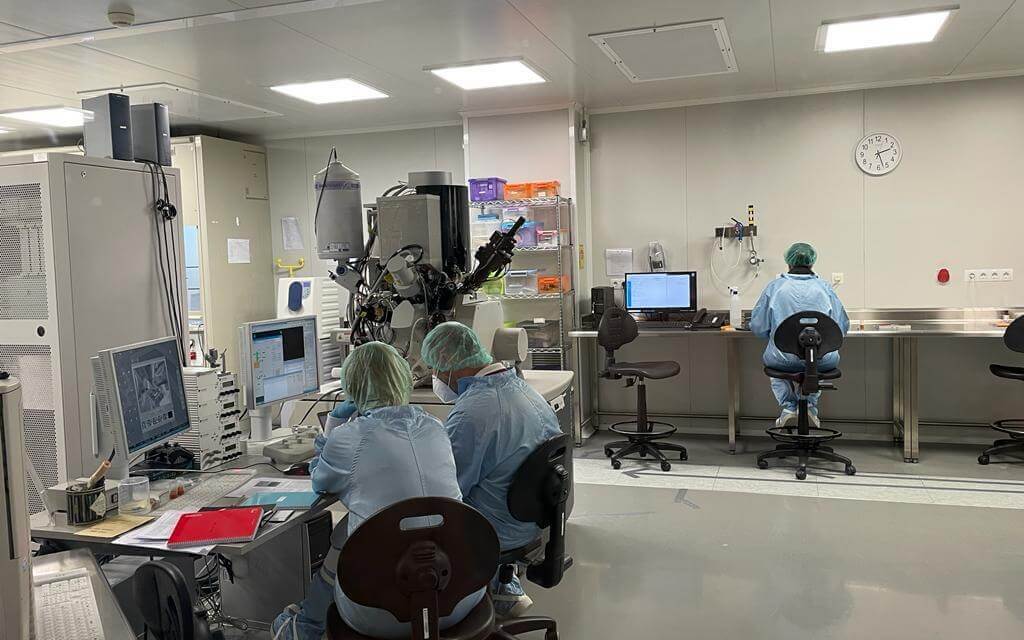
Learn more about this project through our project update video:
Every year since 1970 people all over the globe celebrate Earth Day to support the dialogue and actions taken towards the preservation of our planet, its environment, sustainability, and its future.
Today at CBI, we want to celebrate this day too by sharing some of the key ways in which the potential of our technology is being unlocked through research and innovation, to contribute to the goals of Earth Day.
Lead batteries are active in this space in two key ways: low-emission mobility and renewable energy storage.
One of our main research focuses at CBI is to expand the technology’s performance in the automotive industry, from start-stop technology to low voltage EV batteries.
We're working with leading research institutes, battery manufacturers, and car companies to drive forward this progress to improve dynamic charge acceptance (DCA). You can read more about these projects here.
Renewable energy storage also has a major role in the current energy transition across the globe, delivering clean, reliable power. Some of the recent examples we've added to our interactive map of energy storage projects, which showcases our members in all regions of the world providing advanced lead battery storage, are below:

This is just a snapshot of how the global lead battery industry is underpinning the clean energy transition in diverse sectors, from science and safari to manufacturing.
Innovation is key to sustainability. Technology progress is supported by fundamental scientific research into the chemistry, to help make better batteries, and CBI’s 2022 Request for Proposals is calling on industry, scientists, and researchers to join us on this innovation journey.
From energy storage systems using renewable energy to cutting-edge research developments, these are some of the highlights of our recognition of the importance of Earth Day, every day. As our mission to support the energy transition grows, CBI will continue to work with the global lead battery industry to ensure lead batteries are ready to meet future opportunities
NEWS RELEASE
Delegate registration is now open for ELBC in Lyon, France, between 6-9 September, with a packed technical program and pre-conference events.
The much-anticipated ‘Batteries for the Future’ conference program - with expert technical sessions on automotive and energy storage systems as well as market insights – also includes, for the first time, a workshop on Lead Batteries in Electric Vehicles and a Battery Academy.
Up to 1000 attendees are expected to visit the event, which takes place at the congress centre in Lyon, and is co-organised by the International Lead Association and Consortium for Battery Innovation.
Keynote speakers providing their business insights include East Penn President and CEO Chris Pruitt and Stefan Stübing, President and CEO at Exide Group. Leading analysts will survey the market landscape including Christophe Pillot (Avicenne Energy), Neil Hawkes (CRU), Nick Starita (Hollingsworth & Vose) and Ray Kubis (Gridtential). In addition, there is a strong technical program of 50+ speakers on all aspects of lead battery innovation.
Dr Andy Bush, Managing Director of ILA, said: “ELBC is organised by the industry, for the industry and we are delighted to once again hold this event in person. As well as the respected technical program, we have new sessions including a workshop on lead batteries in EVs. And we’re introducing a battery academy for the first time which is aimed at anyone who would like to know more about the wide range of lead battery applications and technologies available.
“Alongside the conference we will host a substantial expo with manufacturers and suppliers from across the industry. And as always at ELBC the networking and business opportunities go hand-in-hand with the impressive plenary sessions and technical program.”
Dr Alistair Davidson, Director of CBI, added: “Our technical program is always a highlight of ELBC, and this year more than ever we have a fantastic line-up of speakers and experts from across the world. The program will provide a deep dive into the latest innovation and developments across the industry.
“The program spans three days of interactive sessions and presentations, covering the diverse applications of advanced lead batteries, from the automotive sector and emerging EV applications, to renewable and utility energy storage, fundamental science and motive power sectors.”
The ELBC opening reception will take place in the conference’s amphitheatre, while the impressive surroundings of La Sucriere, a renovated sugar warehouse on the banks of the Rhone River, is the venue for the ELBC gala dinner.
To register for the conference, and find out more, visit www.elbcexpo.org.
ENDS
Note to editors:
About International Lead Association
ILA is the only association representing lead producers globally, working to create a sustainable future for lead. Members of the association produce lead from mining, smelting, refining and recycling. For more information visit https://www.ila-lead.org/; +44 207 833 8090.
To contact ILA’s media office:
About Consortium for Battery Innovation
The Consortium for Battery Innovation is the world’s only global pre-competitive research organization funding research into lead batteries for energy storage, motive and automotive applications. For more than 25 years, with its global membership of battery manufacturers, industry suppliers, research institutes and universities, CBI has delivered cutting-edge research pushing the boundaries of innovation in lead battery technology, setting the standard for advanced lead batteries and the next generation of energy storage. For more information, visit our website: www.batteryinnovation.org
To contact CBI's media office:
NEWS RELEASE
DURHAM, N.C. – March 23, 2022 - In a new research request for advanced batteries, the Consortium for Battery Innovation (CBI) has launched a call for proposals focused on innovative applications of the technology.
Targeting markets such as electric vehicles (EVs), energy storage systems (ESS) and motive power applications, CBI’s new RFP has identified key areas for growth opportunities for the advanced lead battery market.
Calling on the industry to submit research proposals to enhance batteries in critical ways such as cycle life, service life, charge efficiency and operational cost, the RFP will guide CBI’s new Technical Program and next round of funded projects.
With growth expected across all lead battery applications – 60% of the global rechargeable battery market is represented by lead batteries – the potential for innovation in the technology remains a significant drive for CBI and its research partnerships worldwide with members, governments and national laboratories.
Dr Matthew Raiford, Senior Technical Manager of CBI, said: “Last year, we launched our new Technical Roadmap and that document has predicted where we expect to see strong market growth in the next decade for lead battery technology. This is driving our research call to ensure advanced lead batteries can continue to develop and innovate to help societies meet ambitious decarbonization and electrification targets.”
For motive power applications, the focus is lowering the total cost of ownership by increasing cycle life, recharge time and producing maintenance-free batteries.
For energy storage, improving cycle life, calendar life and overall efficiency while reducing acquisition and operating costs are the priority.
And for the automotive sector, encompassing both conventional cars and electric vehicles, the key areas are improving high-temperature performance, charge efficiency and lifetime, while ensuring recent improvements in dynamic charge acceptance, cold crank amps and water loss are maintained.
CBI’s RFP is open for submissions until Friday 20 May with more information on the full list of topics and guidelines for proposals available here.
###
Notes to editors
About the Consortium for Battery Innovation
The Consortium for Battery Innovation is the world’s only global pre-competitive research organization funding research into lead batteries for energy storage, motive and automotive applications. For more than 25 years, with its global membership of battery manufacturers, industry suppliers, research institutes and universities, CBI has delivered cutting-edge research pushing the boundaries of innovation in lead battery technology, setting the standard for advanced lead batteries and the next generation of energy storage. For more information, visit our website: www.batteryinnovation.org
Following this year’s International Women’s Day, we’ve interviewed some of the faces behind the communication strategies of our industry. People who work daily to demonstrate the effort of an industry towards climate goals, such as decarbonisation and electrification, while sharing messages of the industry’s work to achieve sustainable targets, science progress and innovation.
These are the professionals who are responsible for the communications of a long-standing industry, so essential in the digital world. They deal with a considerable amount of daily information and they’re able to transform the complex world of science to policymakers, business people and citizens in dynamic and understandable ways. And guess what? Many of them are women!
But why is it that the role of comms has become more important than ever? And what can these experts in the field tell us about the relevance of “sci-comms”?
According to Tammy Stankey, Director of Communications at The Doe Run Company, innovation in comunication is key in order to be modern and relevant, whilst for Fareha Lasker, Communications Manager at the International Lead Association, these are very exciting times to work for the lead and lead battery industry:
"The industry presents a dream messaging scenario — huge market demand combined with a key role for our technologies in the clean future of the planet means it’s a time of obvious and great opportunity. We know that the next 10 years will see unprecedented growth in demand for battery energy storage to support a clean energy future and that advanced lead batteries have a key role to play in applications which will enable rapid electrification of our economy and society".
The group agreed that it’s "essential" for investment in the industry’s comms departments, and as Niamh Owen-McLaughlin, Communications and Digital Manager at CBI, explained, it’s about telling a story of an experienced industry that has witnessed not only evolution but also "innovation, progress and research" and it’s also important to share the "importance of the technology" for the future :
"Without comms, a lot of our stakeholders would never hear the story of innovation that we have to tell, and would never think of advanced lead batteries as a technology which is used all over the world for clean energy storage, for vehicles, for low-emission vehicles and in so many more applications".
Tammy gave an example on how a strong comms department brings even more success to the industry :
"When I first became involved in the industry I was invited to sit on the Public Affairs and Marketing committee of what was then the ALABC (now CBI). As a communications professional it was obvious to me that our industry was suffering from a lack of visibility. Our committee pushed hard to have demonstration projects promoted at high-profile events such as The Battery Show. The greater visibility that these projects received, the more interest was created among companies to fund basic science research and demonstration projects. The effort is paying off, as we now see government agencies (such as the U.S. Department of Energy) proactively reaching out to our industry to identify the greatest opportunities for research and technology development to support the Energy Storage Grand Challenge".

But how is comms driving innovation in the industry?
"The more that we can communicate the innovation underway in lead batteries, driven by the efforts of the global lead battery industry, the more we can increase funding and opportunities for further research and development. We are showing that our technology is not one of the past but instead one that is currently used all over the world in so many diverse and critical applications, and that we’re confident through continued research that the innovation journey lead batteries are on has only just begun", Niamh continued.
Considering the amount of legislative and regulatory proposals in the pipeline around the world designed to improve and accelerate sustainable technologies, "by communicating the innovation in lead and lead batteries across many of these – from lead cables enabling wind power to lead batteries supporting EVs – we are ensuring our industries stand out among those. Communicators across our industry are successfully bringing together the right influencers across policymakers, regulators and industry to understand and appreciate that we are part of the innovative solutions to achieving their low carbon goals. In keeping us at the front of their minds, we’re ensuring we remain at the heart of the energy transition", completed Fareha.
Progress in the industry should also target goals of diversity within the workforce, as Lisa Dry, Vice President of Strategic Communications - Battery Council International and Essential Energy Everyday, explained :
"BCI’s leadership has recognized that the lead battery and recycling industry needs to reflect a more diverse and inclusive culture. One step in that direction is the new Women in the Global Battery Industry professional organization to help women in the industry grow their careers. Studies show that women are better employees than men in several categories including organizational development and coaching talent. At a time when the competition for employees is fierce, it’s critically important to help current employees reach their maximum potential."
There’s clearly a common desire to see more women working for the industry and reaching leadership positions, but to attract and retain bright minds we must be willing to reach out to a more diverse audience, something that the industry is very open to do:
"I have seen firsthand how open and welcoming the industry is to others and I have personally benefited from the comradery of the industry by getting involved. This has allowed me access to participate in various committees and even the executive committees of associations. I encourage other woman to look for opportunities to share their expertise and build their network in this industry", added Tammy.
Sci-comms is critical to demonstrate the innovation underway in our industry, and these communicators are responsible for sharing accurate messages in times where misinformation is a trend. This is our tribute to each and every professional behind a strategic comms role in the scientific field, where diversity is still not a reality.
Best practices of cell testing for EFB regarding DCA and high-temperature durability
Automotive
24 months
The automotive industry understands that advanced lead batteries have much improved dynamic charge acceptance (DCA), a key technical parameter for hybrid vehicles. However there have been concerns about side-effects caused by high DCA. Research has demonstrated that these side-effects are related to the way batteries are tested, and not how they actually perform in the car when on the road, in 'real-world' conditions.
This research project with Ford, TU Berlin, Fraunhofer ISC and Moll Batterien aims to create synergy between cell-level testing and ‘real-world’ field tests, to demonstrate that advanced lead batteries can meet all the OEM requirements for current and future micro-hybrids. This growing market is predicted to represent 80% of new cars in Europe by 2030, and provides higher fuel efficiency combined with reduced CO2 emissions in vehicles.
By improving cell-level test methods, this project will allow material developers and battery manufacturers to improve the performance of automotive lead batteries.
This collaboration involving Ford, a leading automotive company, means that the most innovative and highest-performing lead batteries will be available for future vehicles.
At Fraunhofer ISC, the work in the last six months involved weight loss and gas flow measurements on 2 V laboratory cells by applying different overcharge tests under various conditions. It is very crucial to determine accurate weight losses in small laboratory cells to perform high temperature tests, as these cells differentiate significantly from commercial automotive batteries.
At TU Berlin, 2 V laboratory cells containing different cell layouts were extracted from selected 12 V automotive batteries (EFB type) to perform DCA and water consumption tests. Both static overcharge test and new key life test (nKLT) were scaled down to 2 V cell-level. Important findings including correlation between charge balance and weight loss were concluded.
This project gives a comprehensive picture of water loss, corrosion and dynamic charge acceptance. These best practice cell-level evaluation methods can possibly be utilized by material developers and battery manufacturers to improve the performance of lead batteries. By doing this, a significant acceleration of R&D towards the challenging KPIs stated in the CBI technical roadmap can be facilitated.
Renewable energy is a cornerstone of Europe’s shift to a decarbonised future. And one of the technologies acting as a driving force for the increasing deployment of renewable energy projects is advanced lead batteries.
Batteries are key for storing energy generated through renewable sources such as wind and solar, a critical part of making this new energy mix more reliable. In Norway, electrification efforts are intensifying particularly around the use of renewables energy, and CBI member WaveTech Group, Inc. has recently announced their partnership with OneCo’s efforts to streamline the process.
Advanced lead batteries have been innovating in new ways in recent years, driven by the work of the global industry and CBI to ensure the technology continues to play a significant role in decarbonisation and electrification aims. Some of the key ways outlined in CBI’s Technical Roadmap specifically focused on the energy storage sector is for increased cycle life and energy efficiency for advanced lead batteries.
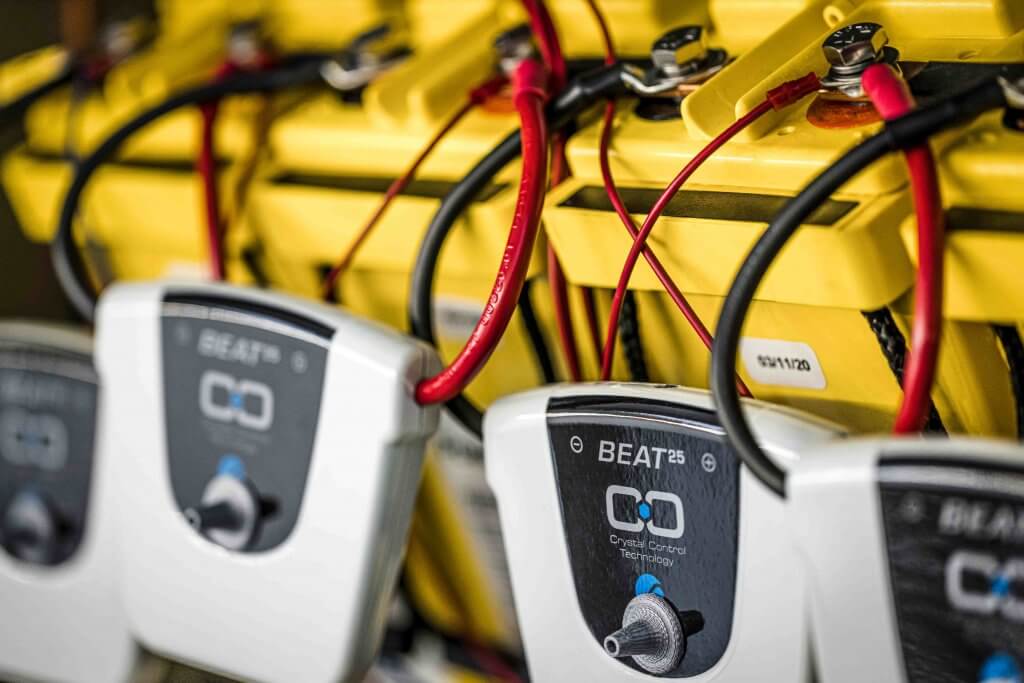
The partnership with OneCo is based on WaveTech’s unique solutions, offering Crystal Control Technology (CCT) for lead batteries resulting in enhanced performance and longer lifetime for use in the energy storage sector. The technology is based on applying a specifically modulated periodic signal during charge, and closely monitoring the state of charge and state of health of the battery. The innovation is used currently in the telecoms sector, where lead batteries globally represent the majority of battery demand. WaveTech’s R&D department is currently optimizing the technology for doubling the lifetime and tripling the energy throughput of the batteries for this and other stationary energy storage applications.
The benefits of Crystal Control Technology help WaveTech to charge the batteries faster and more efficiently. The power pulses sent to the battery enhance the mobility of ions in the electrolyte and optimize crystallization in the positive and negative plates of the battery. The surface of the plates remains active, sulfation is slowed down, and the highly porous microstructure of the lead and lead dioxide crystals formed in the active materials is kept sustainable. This results in a range of benefits including better battery power performance and longer life, reduction in charge energy consumption and hence lower CO2 footprint of battery operation.
For most EVs, low-voltage lead batteries (also known as auxiliary batteries) are a key component of the multi-battery system present in the vehicle. In combination with the high-voltage battery system, low-voltage EV lead batteries ensure the vehicle can function and provide power for critical safety features.
In 2021, a CBI blog on the critical role of lead batteries for EV safety was published by the World Economic Forum(WEF), demonstrating the importance of the technology for this application which is driving policy changes across Europe and the globe.
You can read about the various ways that 12 V lead batteries are powering critical safety functions on-board EVs here, but I want to look at some of the ways this market is proving so important for the global lead battery industry and how our industry is innovating to meet evolving technical demand.
Across Europe’s 27 member states, it is predicted that 50% of newly registered vehicles by 2030 will be plug-in hybrid EVs and full EVs, and the importance of lead batteries for these vehicles to provide safe and reliable baseline of power will only grow in significance.

As a battery technology, lead batteries provide a reliable storage device with an inherent safe chemistry and a sustainable closed-loop raw material cycle, with almost 100% recycled at end-of-life in Europe and North America. The unique benefits of the technology will be important to meet growing consumer expectations for safety, comfort and connectivity.
The advanced lead batteries used for these low-emission vehicles are continuing to innovate and develop based on the evolving needs of the market.
As more advanced driver assist sensor systems like lidar-, radar- and optical AI- systems are added to vehicles with the goal to enable autonomous vehicle functionality at level 3 and above, there will be an even greater reliance and predictability on the low-voltage battery.
An integrated part of the power train, the storage system needs to self-diagnose potential issues in the battery before they happen and anticipate required maintenance or replacement. The storage system also needs to provide emergency power critical for EV and autonomous vehicles and to be capable of communicating this capability to the drive train.
So the role of the lead battery in an EV is changing from an engine-starting application, to the new low-voltage storage systems for the specific duty cycle of an auxiliary battery system.
All of these elements are driving the innovation underway in low-voltage lead batteries to ensure the highest performing lead batteries are provided for the automotive industry.
Clarios, a global leader in advanced lead battery technology, has announced a smart AGM battery system which will sense, diagnose and communicate in real-time the condition of the battery in an electric vehicle. This functionality will be combined with the ability to support safety critical functions as well as anticipating required maintenance or replacement.
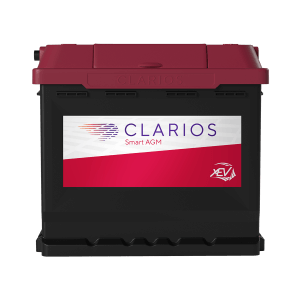
Clarios’ newest innovation is seizing the opportunities present in the growing global market for electric vehicles and is due to debut in the next two to three years.
This innovative battery is just one example of the way in which our industry is innovating to meet future market opportunities based on the global shift to a cleaner, low-carbon future.

By Dr Christian Rosenkranz, Chair of CBI and Vice President Industry and Governmental Relations EMEA at Clarios
As Europe stives for energy independence and a transition to a low-carbon future, the role of batteries underpinning this shift continues to grow in importance.
Following on from the wide-ranging innovation featured in part 1 of Europe’s innovation blog series, part 2 begins with insight into the collaborative “AddESun” project. Launched in 2017, researchers led by the Fraunhofer Institute and part funded by the German Federal Ministry of Education and Research, aim to safeguard the future of lead batteries.
With goals including more sustainable production, improved charging behaviour, longer service life and higher power density, the research focused on researching new additives and their effect on battery properties. Fundamental research such as this complements the work underway on the industry driven by CBI’s Technical Roadmap to ensure the role of lead battery technology in contributing to Europe’s strong battery industry.
Moving to the University of Brno in the Czech Republic, scientists have been active for many years in researching advanced lead batteries through additives, the influence of temperature on impedance changes and effects on lead electrodes.
Battery monitoring during operation is a key area of research underway within the lead battery industry, aiming to uncover new insights into the technology with the ultimate aim of enhancing various battery performance metrics such as state-of-charge and state-of-health to ensure longer service life.
Published last year, innovative work underway at the Bulgarian Academy of Sciences, led by Dr Boris Shirov and Dr Iliyan Popov, features a lead-air battery aiming to improve energy performance. The technology shows that the positive electrode in a conventional lead battery can be replaced with a gas diffusion electrode (GDE), increasing the specific energy of the system by up to 52%.
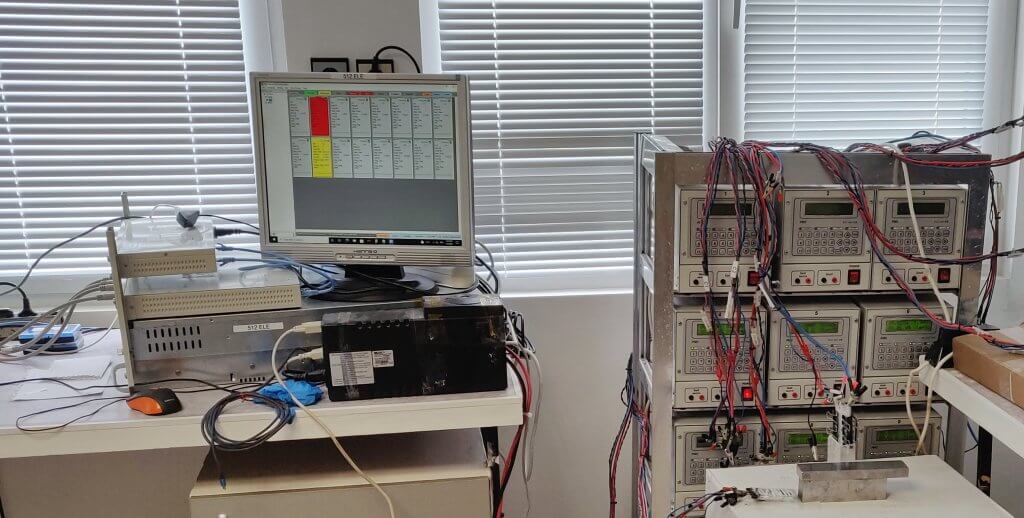
At the French research institute of CEA-Liten, a new non-destructive and non-intrusive characterization techniques was proposed by researchers for lead batteries. Consisting of installing two piezoelectric transducers on the surface of a battery and studying the transport of ultrasonic acoustic waves, the research obtained an accurate and direct estimation of the state of charge and could be used for better management of advanced lead batteries.
In the University of Southampton, the advancement of lead batteries has been a key topic for researchers, particularly focused on redox flow lead technology. Relevant to utility-scale energy storage and load levelling applications, this research demonstrates the continued need for innovation amongst all battery technologies to meet heightened demand for reliable energy storage.
With the aim to accelerate the transition to sustainability and decarbonisation, the FAAM Research Center, the R&D aim of Seri Industrial S.p.A. in Italy, this collaborative program focuses on the development of lead technologies, amongst other types of batteries.
A multi-disciplinary project led at Imperial College London looks to the end-of-life stage of lead batteries, focusing on the design of energy-reducing, economically competitive, electro-hydrometallurgical strategies for recycling. One of the biggest advantages of lead batteries is the end-of-life recycling rate of almost 100% in Europe, and Imperial’s work is focusing on new ways to enhance the sustainability of the process.
Lead battery research is far-reaching in Europe, both in scope and results. But there always remains room for more innovation, so keep an eye out for the release of CBI’s new Request for Proposals that will outline the areas of research we’re looking for to drive our next Technical Program.
In the words of the United Nations, both science progress and gender equality are fundamental achievements to reach the SDG Goals as part of the 2030 Agenda for Sustainable Development.
For this to become a reality, it is crucial to demonstrate the importance of having more women working in fields of science, and most of all to create conditions that empower and facilitate women to work in a sector traditionally dominated by men.
In 2015, the UN General Assembly declared February 11 as the “International Day of Women and Girls in Science”, as a way of fostering change in this field and turning these below stats around:
UN data from 2021
In this case, and like in any other sector, combining the strengths of all genders in the workplace can only create more space for better ideas, innovation, and progress in science.

Why is it so important to value women in science, but also in our industry in particular?
To better understand these issues and to see how they can be applied in our own industry, CBI spoke to four women who work in the global lead battery industry as researchers: Sibel Eserdağ (R&D Division Manager in Inci GS Yuasa), Sophia Bauknecht (Engineer at Technische Universität Berlin), Begüm Bozkaya (Technical Manager at CBI) and Maria Penafrancia Roma (Technical Collaboration Leader at Advanced Battery Concepts).
The idea was to show their perspectives, as women who work in mostly male environments, but more than that, to demonstrate why they are still working for the industry, why they believe their talent is crucial for it and why do they invite more women to join them in this challenging world.
According to the previously mentioned data, “women represent only 33.3% of all researchers” but considering the technological growth and the urge for progress and innovation in science and research, our group of four women agreed that is absolutely “crucial” to have more female researchers. Not only because of gender equality issues, but also due to the fact that it can bring more diversity of thinking which can only enrich the working groups, their talents and potential to do better things for the industry.
Sophia shared her thought:“that only with a higher number of female researchers it is possible to fully use the existing innovation and talent potential within a research area” and Maria noted that an “increased number of female researchers worldwide means that women with equal or even better capabilities are being given more opportunities now than in the past”. This will hopefully have a significant impact on other areas of the world, she continued: “this will mean that low and middle-income countries will see more women working on scientific and technological issues that can uplift their quality of life. Diversity and statistics will always lead to more revolutionary ideas that can change the world”.
What do women bring to science and to our industry?
According to Begüm, in many research areas “women face new challenges to meet the goals and targets in all levels of science”. Therefore, there’s a common “need” to provide a broader range of understanding and creativity:
“Encouraging the participation of women is essential, as men and women bring different perspectives to research and innovation. The diverse research groups in both academic and industry should combine various skills and abilities”.
But let’s be clear, “women can generate the same ideas and deliver similar results as any other gender in the room”, continues Maria. However, “there is a dearth of examples of this happening in the lead battery industry right now”. As Sibel highlights “like men, women bring their passion, patience, hard work and energy to the science and industry. But the important thing that women bring to science and industry is “diversity”:
“The lead battery industry seems to be a male-dominant industry from the outside however, it is proven by many articles and researches that diversity leads to innovation, so for innovation, industry and science we need more gender-balanced workforce.”
One thing is for sure, there’s a lot of admiration amongst women within the industry as they bring not only the obvious empowerment to each other, but also their perspectives, different backgrounds, skills and visions that add “a considerable value” to the industry, according to Sophia.
So, what advice would you give to a young female researcher starting/considering a career in the lead battery industry now?
We could not end this article without mentioning and promoting other women who are relevant references for our interviewees such as Dr. Kathryn R. Bullock, “whose vision, research and leadership led to revolutionary changes in the lead battery industry. She was a giant among men and the only female recognized by the Gaston Plante Award Committee in its 32 years of existence” (mentioned Maria) and Dr. Julia Kowal, a professor at TU Berlin who is “highly engaged in many committees to represent women in every aspect. She is carrying this additional workload to support other women in their academic career” (stated Sophia).
It's February 2022 when the “International Day of Women and Girls in Science” happens and CBI would like to celebrate every talent who is aiming to be a part of this exciting future for research and innovation, especially in the lead battery industry!
A 2021 White Paper commissioned by CBI indicates that using lead batteries for high-rate DC to DC electric vehicle charging will be technically and commercially viable. This project has caught the attention of the State of Missouri, Missouri Gas & Electric and the Missouri University of Science & Technology. Their plan is to install several prototype systems in local Missouri gasoline stations. An RFP has been issued to for companies willing to design and build these first prototypes.
Fueling these plans is the need to provide accessible charging for EV buyers. The US auto industry has determined that a “hypothetical barrier” stands in the way of increased EV sales. The industry believes that greater EV adoption depends on an improved charging infrastructure in order to alleviate car-buyers' drive-range anxiety. And unlike the network of “super charging stations that Tesla had the foresight to install all around the world, other EVs are lacking in their ability for fast-charging. A Tesla super charger can take a discharged Tesla to about 80% state-of-charge (SoC) in less than 30 minutes. This “super charging” ability gives the Tesla driver a secure feeling when embarking on a long trip.
Other EV drivers are relegated to using lower power charging stations at hotels and parking structures, but these lower power chargers can take upwards of 4 hours to get the vehicle battery to 80% SoC. Not a good situation.
In a recent announcement, California governor Gavin Newsom is not only proposing that every new car sold in California by 2035 be electric or zero emission but is also supporting legislature that new homes be equipped with EV charging capabilities. The article by Plastics Today also quotes a Reuters report that fast chargers are very expensive and typically cost ~$100,000. Such systems are also expensive to operate due to high cost of electric power and demand charges.

CBI has written about the critical role of advanced lead batteries for the electric vehicle revolution by powering safety features on-board EVs. The potential for the technology to be the battery powering EV charging stations is another significant opportunity.
The time is ripe in California, and indeed the rest of the world, to adopt and install High-Rate lead battery-backed DC to DC charging systems as proposed by the CBI White Paper. As countries and their auto industries scramble to expand their BEV charging infrastructures and advance electrification and decarbonization agendas, lead battery industry has a huge opportunity to play a key role in this charging infrastructure expansion.
The window of opportunity for lead battery manufacturers to form partnerships, design prototypes and submit proposals to be a part of this electrification expansion is open now. Change is coming and our industry should be part of it!

By Dr George Brilmyer, Batt-Tek Consulting, LLC and member of CBI's Expert Panel
The shift to a low carbon future is heavily invested in both renewable energy and low-emission vehicles such as EVs. And in an exciting partnership announced by CBI member Advanced Battery Concepts, they’re bringing both solar energy and EV charging together.
Chosen to supply their innovative, bipolar lead batteries for GreenCore’s charging plazas across the US, ABC will manufacture and supply the energy storage systems using their patented GreenSeal® technology for an estimated 10,000 Solar EV Charging Plazas by the end of the decade.
Enabling GreenCore to harness solar energy generated on site, ABC’s lead storage batteries provide faster recharge, higher power and increased cycle life compared to conventional storage batteries. Combined with high recycling rates and domestic manufacturing, the technology is tapping into the greater demand for domestic energy independence in the US.
As the growth of the EV market continues, with global sales increasing by 39% in 2020 alone, the demand for reliable, renewable, and widespread fast-charging infrastructure is booming.
Read more about the exciting partnership between ABC and GreenCore here. Originally published by Advanced Battery Concepts, LLC.
From CBI-funded projects to university collaborations, advanced lead batteries are a technology embodying Europe’s drive for innovative technologies to deliver ambitious decarbonisation and electrification targets.
Creating synergy between academia and industry through battery research has been a cornerstone of CBI’s technical programs. In a project underway at Fraunhofer ISC, they’re working with Ford’s Research and Innovation Center, TU Berlin and Moll Batterien to improve regenerative braking performance in hybrid cars.
This critical market, including micro-hybrids which are predicted to represent over 80% of new vehicles in Europe by 2030, relies on advanced lead batteries to deliver greater fuel efficiency and reduced carbon emissions. Specifically targeting Dynamic Charge Acceptance (DCA), the research is ensuring the most advanced lead batteries are used in vehicles, to support the transition to a low-carbon future.
In another project with Fraunhofer ISC partnering with Poland-based Wroclaw University, a research team is using tailor-made carbons and utilizing advanced physical and electrochemical techniques to study key performance indicators for lead battery technology. Specifically for micro-hybrid vehicles, this research is an important step in responding to market demand from Europe’s automotive sector.
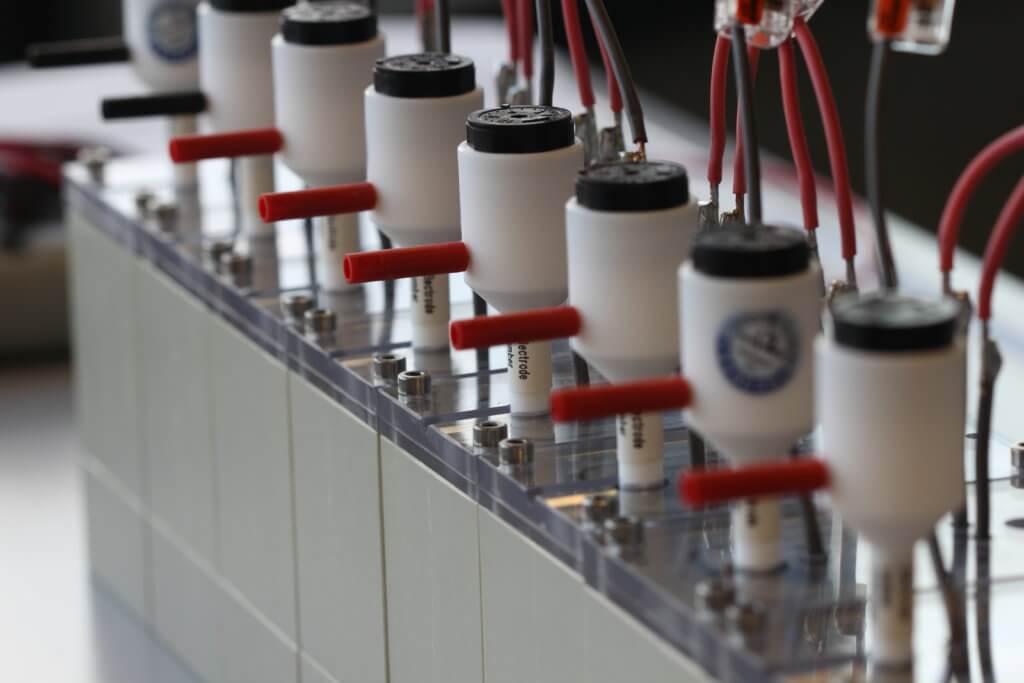
Transitioning now to the buzz words ‘energy storage’, CBI’s latest technical research program funded a suite of projects dedicated to the driving innovation in advanced lead batteries for this growing market. As the world shifts to cleaner sources of energy and the need for more reliable grids, battery energy storage research is essential.
In an ongoing project with Spanish research institute INMA and battery manufacturer Exide, high-tech neutron diffraction techniques are being used by scientists to gain a deeper understanding of the charge/discharge processes occurring in a lead battery. In a first-of-its-kind approach used to study the technology, the research will improve energy efficiency and the Partial State-of-Charge (PSoC) cycle life of batteries for energy storage systems (ESS).
Tapping directly into the new goals set out in CBI’s Technical Roadmap, this energy storage research is paving the way for advanced lead batteries to enhance their performance for renewable and utility energy storage.
A new university research partnership between the University of Warwick and Loughborough University will show how advanced lead batteries can support electricity grid energy storage and important low-carbon systems facilitated by renewable solar and wind energy.
Funded under CBI’s 2021 research program, the university collaboration is developing more advanced levels of modelling and prediction of lead battery behaviour for utility grid storage. The aim is to facilitate better battery management and higher uptake of lead batteries to support the energy grid.
This is just a snapshot of the innovation underway across Europe, all focused on advanced lead batteries. Europe’s climate change goals are driving enhanced research for battery technologies, and CBI with the EU lead battery industry and other university and research institutes partners are striving to ensure lead batteries remain one of the central players in this shift to a low-carbon future.
Stayed tuned for Part 2!
As the US shifts to greater levels of energy security, the role of batteries becomes ever-more important to underpin this transition. Used in a wide range of applications from vehicles to renewable energy, advanced lead batteries offer an advantage through the high rates of domestic manufacture and recycling. Combined with a big industry push for research and innovation into the technology outlined in CBI’s Technical Roadmap - to deliver enhanced performance across key technical parameters such as cycle life, energy efficiency and dynamic charge acceptance - advanced lead batteries are critical for powering the future.
CBI member Stryten Energy joins CBI’s guest blog to share insight into the unique blend of extensive domestic manufacturing infrastructure and unparalleled sustainability that advanced lead batteries have to offer.
Lead Batteries Will Help Power the Future
Renewable energy has many benefits, such as energy security through diversification of energy supply and reduced reliance on imported fuel. Energy generated by wind, solar and hydropower doesn’t produce greenhouse gas emissions, helping reduce air pollution.
As we consider the significant benefits of renewable energy, we also have to consider the current limitations. The sun may shine and the wind may blow today, but the next day may be overcast and calm. Continuous availability is the key, and reliable energy storage with advanced battery technology is the answer.
Proven History
Lead batteries have been in use for over 160 years. Their reliability has made them the most commonly used rechargeable battery technology for numerous applications.
Because of their relatively large power-to-weight ratio, lead batteries are preferred for starting, lighting and ignition (SLI) applications. Advanced lead batteries such as Enhanced Flooded Batteries (EFB) and Absorbed Glass Mat (AGM) enable start-stop technology in today’s vehicles and provide the additional power required by advanced safety features and modern conveniences.
In electric vehicle (EV) applications, lithium batteries are used as the propulsion source for the vehicle, replacing gasoline. However, almost every auto also carries a lead battery to power critical safety functions such as power steering and braking systems. Components like the lights, entertainment system and heating/cooling system also run on a 12-volt system, powered by lead batteries.
Lead batteries are also widely used for backup power supplies for microgrids, residential solar, telecommunications and utilities, for network operation centers and data centers, and even as backup power on nuclear submarines.
Domestic Manufacturing
Compared to newer battery technologies, lead batteries are inexpensive to manufacture. According to the Department of Energy, lead batteries have a lower capital cost of $260 per kilowatt hour (kWh) compared to lithium at $271 per kWh. Lead batteries also require three times less energy to produce. Lithium needs 450 kWh per 1 kWh, while lead is 150 kWh per 1 kWh. In other words, the energy generated to produce a lithium battery likely costs more due to its energy density.
Another important consideration is sourcing. While the U.S. is one of the leading producers of lead in the world, most of the lead and alloy materials necessary for manufacturing lead batteries come from recycling. Lead batteries manufactured in the U.S. typically contain more than 80 percent recycled material. Because of this domestic sourcing, lead battery manufacturers have a reliable supply chain minimally impacted by foreign trade disruptions.
Domestic manufacturing related to lead batteries has a significant impact on the economy. The U.S. lead battery industry enables more than 92,000 jobs. The salaries for these manufacturing workers are 28 percent higher than many other private industry sectors. Overall, the lead battery industry contributes $2.4 billion in government revenue, $6 billion in labor income, $10.9 billion in gross domestic product and $26.3 billion in total economic output to the national economy.
Looking Ahead
Major battery manufacturers and suppliers collaborate with researchers to reach the full potential of lead batteries and enhance battery performance efficiency. Battery life has increased 30 to 35 percent in the last 20 years. Lead batteries have a lifespan of up to 18 years, and some have demonstrated lives up to 30 years in standby applications.
A current goal is to reduce the weight of the batteries while increasing energy density. By doing so, lead batteries will become much more competitive with lithium. Research led by The Consortium for Battery Innovation is aimed at increasing the cycle life of lead batteries from 1,000 to 5,000, compared to lithium batteries at around 2,500 to 4,000.
Safety and sustainability are two important aspects as we consider the future of lead batteries. For the telecommunications and uninterruptible power supply (UPS) markets, the lower shipping costs of lead batteries will be an advantage. Lithium is considered a Class 9 Hazardous Material because it can overheat and ignite under certain conditions. Once ignited, the fire can be difficult to extinguish. For that same reason, lead is also preferable for energy storage in areas where the use of lithium batteries is restricted by fire marshals.
Lead batteries also have the advantage of a well-established recycling process. The recycling rate for lead batteries in the U.S. is 99 percent. Nearly 100 percent of lead can be recycled and infinitely reused with any loss of future performance capacity. By comparison, lithium batteries have a recycling rate of about 5 percent.
Conclusion
The transition from fossil fuels to clean energy will take time, much like we have seen with the automotive industry’s move toward electric vehicles. But there is also considerable opportunity. The renewable energy industry is becoming a major employer in the U.S, and the median hourly pay for these jobs is about 25 percent higher than the national average. By reaching a majority renewable energy grid, nearly 1 million direct development, construction, installation, operations, manufacturing, and supply chain jobs will be created.
While some companies are focused solely on newer technologies as a replacement for lead batteries, we believe that a wide variety of battery technologies are necessary to ensure that the power generated by wind, sun and water is readily available. Advanced lead batteries also have a role in the growing demand for energy storage solutions. Lead batteries offer a unique blend of extensive domestic manufacturing infrastructure and unparalleled sustainability.

Originally published by Stryten Energy
NEWS RELEASE
ELBC, the global lead battery innovation conference which takes place in Lyon, France, 6-9 September 2022, has opened a call for papers, expo bookings and sponsorship packages.
The conference, jointly organised by the International Lead Association and the Consortium for Battery Innovation, is encouraging papers on lead battery energy storage systems, automotive and industrial batteries, and updates on technical developments and new research.
More than 120 expo stands plus silver and bronze sponsorship packages are available to book on the conference website at www.elbcexpo.org.

In Lyon, south-west France, the conference takes place at the impressive Centre de Congrès, with easy links to international airports including Paris and Nice. The food capital of France, Lyon’s culinary gems offer a diverse experience for visitors.
Dr Andy Bush of ILA said: “We are delighted to be planning ELBC again, a unique conference which is organised by the industry for the industry. It’s been a long wait to
get back together and discuss in person all aspects of the market as well as innovation and lead battery research. ELBC brings together the whole industry from manufacturers to suppliers, researchers and analysts. We will be hosting a major expo and look forward to seeing partners from across the industry and the world.”
Dr Alistair Davidson of CBI said: “We’re co-organising ELBC for the first time and as interest in lead battery innovation continues to grow, ELBC is a great opportunity to hear all of the latest developments in research as well as technical updates. We will also be holding a pre-conference workshop in Lyon on low-voltage EV batteries – a significant future application for the technology.”
With submissions open for 6 weeks, submit an abstract to join ELBC’s technical program via the ELBC website.
Companies can also reserve an expo stand and enhance their visibility with sponsorship packages.
Keep an eye on the conference website and our social channels for further details on the program, speakers, gala dinner and delegate registration.
Get involved on social: #ELBC
ENDS
Note to editors:
About International Lead Association
ILA is the only association representing lead producers globally, working to create a sustainable future for lead. Members of the association produce lead from mining, smelting, refining and recycling. For more information visit https://www.ila-lead.org/; +44 207 833 8090.
To contact ILA’s media office:
About Consortium for Battery Innovation
The Consortium for Battery Innovation is the world’s only global pre-competitive research organization funding research into lead batteries for energy storage, motive and automotive applications. For more than 25 years, with its global membership of battery manufacturers, industry suppliers, research institutes and universities, CBI has delivered cutting-edge research pushing the boundaries of innovation in lead battery technology, setting the standard for advanced lead batteries and the next generation of energy storage. For more information, visit our website: www.batteryinnovation.org
To contact CBI's media office:

As part of CBI’s technical team, we’ve recently welcomed Begüm Bozkaya. With a BSc degree in Chemistry from the Middle East Technical University and an MSc degree in Materials Science from the Technical University of Munich, she gained extensive knowledge on the effects of carbon additives on negative plates for lead batteries, after using this as a Ph.D. research topic.
After working on several industrial projects for the past 6 years, Begüm joined CBI to gain a broader perspective on lead battery research as her role involves directly working with CBI’s global members from different companies and stages of the supply chain. She will be managing all of CBI’s European Technical projects as well as supporting CBI’s standards program.
According to her, CBI is doing what no one else in the industry is by “combining the knowledge from the industry and research institutes and collecting them in a non-competitive environment”. This means it’s possible to pool knowledge from a range of battery experts in order to advance lead battery technology for all applications, from energy storage systems to automotive.
As part of CBI’s team based in Europe, it is also important to look at the role of EU industry-research-academia partnerships in driving innovation. “We need to strongly defend the place of lead batteries. This is a well-established technology: we are cost-effective, recyclable, we have innovative research initiatives underway, and we’re committed to contributing to a cleaner future in the energy sector, especially to facilitate decarbonisation and support climate goals. It is vital that the EU includes all batteries in their future work plans”.
In that sense, the work developed by CBI through its Technical Roadmap has been essential to collect relevant information for lead battery applications and to help educate the audience regarding the future of this technology that has an enormous potential:
“If we can open new research topics and innovative ideas that can cover what we have in the roadmap, I’m sure lead batteries can still be considered a key player in the efforts to decarbonise, and developed further as a result. Research is the key point.”

When mentioning the new year and the developments that we can expect from advanced lead batteries, Bozkaya said that bipolar or advanced PbC batteries “can bring new research topics” for the industry and that these are “great candidates for EU initiatives”:
“There’s a bright future for advanced lead batteries and a lot of great research projects being developed as a result of CBI’s work, so I believe that in the near future we will be able to show even more how committed the industry is to Europe’s climate goals and, therefore be more involved with EU initiatives through lead battery research projects”.
For more information on CBI’s innovative technical program, click here.
2021 has been a highly successful year for CBI, with expansion across our research projects, membership, and team. CBI launched a new Technical Roadmap for lead battery innovation, secured substantial government funding for lead battery research and added several new projects to its core research program. There was also a significant increase in activities to improve the awareness of lead battery performance and innovation to stakeholders including end-users.
This year we welcomed 3 new staff members, strengthening our global team with additions for both Communications and Technical Program. Joana Coimbra, based in Brussels, has been a welcome addition in supporting the communications work underway in Europe. Dr Carl Telford, Research and Innovation Manager and Begüm Bozkaya, Technical Manager, joined later in the year and are working to support CBI’s extensive research program and drive for government and stakeholder funding.
These important appointments came during a busy time where CBI launched its new Technical Roadmap, dedicated to advanced lead battery innovation and research.
With the launch of new projects this year focused on energy storage, a significantly growing market for lead batteries and of critical importance on a global stage, CBI’s new Technical Roadmap built on the goals and targets set out during our launch in 2019.
The new Roadmap is extensive and covers every application space for lead batteries and demonstrates the key pathways for innovation and development for the technology to continue solidifying its path to deliver on the world’s electrification and decarbonization goals.
CBI didn’t just grow in team members this year. We welcomed 9 new members including Hyundai’s North American Technical Center, Stryten Manufacturing, Inbatec GmbH, Sorfin Yoshimura and ENTEK International.
Through the work of CBI in demonstrating the critical role of advanced lead batteries and the vast innovation potential for the technology, these are key drivers for our membership increase across the globe and we’re proud to work with our diverse members and partners to demonstrate the benefits of working with CBI.
With the end of the year came the return of some in-person events, with the team visiting Lyon, Brussels, San Diego and Phoenix for conferences and expos, and our North American Technical Workshop held in Raleigh, North Carolina
But one of the biggest events back on the schedule for next year, and co-organised by CBI with ILA, will be ELBC, the global lead battery innovation conference. Taking place next year on 6-9 September, this event will be the premier technical conference dedicated to lead battery innovation, bringing together 1000+ attendees from across the world.
With a world-class technical program, featuring experts and topics relevant to every part of the lead battery application space and value chain, look out for the launch of our Call for Papers, expo reservations and sponsorship opportunities early next year.
We see a strong future for advanced lead batteries. The work of our members is critical in this and we’re proud to support their work through our technical and communications initiatives. Next year will no doubt be even busier than this year, so keep an eye out for our new research Request for Proposals, updated lead battery market data and energy storage case studies, just to name a few.
CBI is pleased to announce the latest member to join the research consortium, ENTEK International.
For more than 30 years, ENTEK has been an innovator and leading world-wide designer and producer of highly reliable microporous polyethylene battery separators for lead batteries.
CBI is excited to work together with ENTEK and our global membership to accelerate the future of global energy storage.
For more information, read ENTEK's press release.
The ESA Annual Energy Storage Conference and Expo (ESACon21) took place last week from December 1 – 3 in Phoenix, Arizona with manufacturers, storage developers, investors, policymakers and many others from the energy sector gathered to discuss the latest trends and developments within this industry.
With the current US climate goals centered on reducing 50% of carbon emissions by 2030, the focus relies on the economy’s decarbonisation and sustainability creating opportunities for innovation and sustainable growth.
This was a great occasion for CBI to share its work towards innovation for advanced lead batteries, but also to discuss the future role of this technology in energy storage as the demand for batteries will only increase, according to the latest data from the US Department of Energy. This growth will offer significant opportunities for advanced lead batteries to provide battery energy storage on a mass-market scale and to help achieve climate goals.
Advanced lead batteries are already a critical technology used in a range of energy storage applications. From supporting smart grids and remote area power supplies to ESS for residential, commercial, and industrial applications, the high safety and reliability profile of the technology means there’s also great potential for transmission and distribution reserves and investment deferral with smaller systems.

CBI’s case studies, available on our interactive map, demonstrate this technology’s value and effectiveness across the globe. For instance, in Nigeria, local communities now have access to electricity thanks to solar microgrid installations powered by advanced lead batteries. In New York City a building’s power infrastructure is more reliable and better prepared for extreme weather events while reducing its carbon footprint, after being provided with a solar + storage solution using this technology. In Pennsylvania, lead batteries are being used for scale services to balance and smooth USA’s largest energy grid.
By sharing a range of these case studies and the Technical Roadmap, CBI was able to share with ESACon21 attendees the fantastic work and effort made by the global industry towards innovation, as well as the significant benefits of this technology for energy storage systems.
Watch our event video:
Beamline meets battery: scientists collaborate to study advanced batteries using neutron diffraction
Energy storage systems (ESS)
24 months
The project aims to gain a deeper understanding of the charge/discharge processes occurring in a lead battery using neutron-scattering experiments, to directly enhance the performance of ESS lead batteries.
This is a new approach which has never been used before to study lead batteries.
If successful, it will be able to be extended to explore other parts and processes of lead batteries.
Exide Technologies, INMA.
INMA have designed the first prototypes of a new lead battery, specifically intended for neutron experiments.
A range of characterization work and feasibility studies have been undertaken to optimize the prototype of neutron-scattering work.
The next step of the project is to conduct extensive neutron diffraction work to probe the fundamentals of lead batteries.
Using neutron diffraction and tomography, the growth and dissolution mechanisms of different active material species will be studied and evaluated under charge regimes relevant for ESS.
The new understanding is expected to improve the energy efficiency and the Partial State-of-Charge (PSoC) cycle life of batteries for ESS:
- This encompasses renewable energy applications such as wind and solar ESS, which typically require excellent PSoC performance.
The research underway ties directly into the new research goals of CBI’s Technical Roadmap, where improving cycle life and energy efficiency have been identified as a key priority research goals for ESS lead batteries.
NEWS RELEASE
DURHAM, N.C. – November 15, 2021 - As automotive lead batteries are set to receive an energy boost through new research unveiled in their new Technical Roadmap, the Consortium for Battery Innovation (CBI) announce their newest member, Hyundai Motor Group.
One of the world’s leading car companies, Hyundai Motor Group, joins through its North American design, technology and engineering arm, Hyundai America Technical Center, Inc. (HATCI). Headquartered in Michigan with operations in California and production facilities in Alabama and Georgia, HATCI supports development activities for the Hyundai, Kia, and Genesis brands.
The exciting partnership which brings together innovation on both sides of the automotive sector – research and development – comes at a pivotal time for the global lead battery industry.
Ramping up research efforts to deliver next-generation advanced lead batteries, CBI’s new Technical Roadmap has identified key research pathways for the technology, widely used in start-stop and micro-hybrids. Another growing automotive application identified in the Roadmap is the use of low-voltage lead batteries in electric vehicles (EVs).
“As Hyundai Motor Group and HATCI continues to strive for an eco-friendly mobility future, we see significant value in joining the Consortium for Battery Innovation,” said John Robb, president, HATCI. “Combining resources, knowledge and testing scenarios will positively influence our industry efforts during a pivotal time in moving towards world-class electric vehicle propulsions.”

Director of CBI, Dr. Alistair Davidson, said: “Having Hyundai’s Technical Center on board is a giant step forward for the industry in collaborating with the biggest market for advanced lead batteries: the automotive sector.
“By working together with CBI’s global membership, which spans the entire lead battery value chain, Hyundai can really benefit from the latest in technology advancements and be able to integrate the technology into their products.”
Working with the automotive industry is a key pillar of CBI’s work and covers the entire automotive application space, from 12V batteries used in conventional, start-stop and micro-hybrid vehicles to low-voltage EV batteries. Micro-hybrids are predicted to represent 60% of new car sales globally by 2030.
Each year, CBI holds workshops bringing together global lead battery experts and automotive OEMs to create synergies between pioneering research and automotive developments.
New goals identified in the Roadmap by the CBI membership for automotive applications are building on the targets set out for Dynamic Charge Acceptance (DCA) in 2019. These targets have witnessed industry successes in the last two years, and have been expanded to include:
These goals are critical for the continued role of advanced lead batteries in supporting the global shift to electrification through cleaner forms of transport and e-mobility.
Involving car manufacturers like Hyundai in CBI’s automotive lead battery efforts is vital, providing clear avenues for accelerating innovation and developing a harmonized perspective of how lead batteries can meet the increasing demand for energy storage in future vehicles.
###
Notes to editors
About the Consortium for Battery Innovation
The Consortium for Battery Innovation is the world’s only global pre-competitive research organization funding research into lead batteries for energy storage, motive and automotive applications. For more than 25 years, with its global membership of battery manufacturers, industry suppliers, research institutes and universities, CBI has delivered cutting-edge research pushing the boundaries of innovation in lead battery technology, setting the standard for advanced lead batteries and the next generation of energy storage. For more information, visit our website: www.batteryinnovation.org
Dr. Alistair Davidson, Director of CBI, is available for interview. For more information, please contact CBI’s media contact: Niamh Owen-McLaughlin, +1 425 223 7499; Niamh.mclaughlin@batteryinnovation.org
About Hyundai America Technical Center, Inc.
As one of Hyundai Motor Group's (HMG) seven global centers focused on research and development (R&D), HATCI was established in 1986 in Ann Arbor, Michigan. HATCI is HMG's design, technology and engineering division for North America. As HMG solidified its position as one of the top global OEMs, HATCI has grown to include a strong network of engineering disciplines and increased business-focused activities to support North America's Voice of the Customer.
HATCI supports new model development for HMG's North American operations and global programs from our dedicated engineering facilities and support staff at affiliate sites located throughout the United States. HATCI's success in satisfying the demands of increasingly sophisticated consumers is a direct result of HMG's commitment to the future of American automotive engineering. HATCI upholds a strong R&D philosophy hinged on the creative and passionate input of all team members. This philosophy is paramount to HMG's North American strategy and serves as the foundation for engineering excellence and technological advancement.
Power Technology, a leading energy publication, includes CBI on shortlist for Sector Excellence Awards – Batteries & Storage

For the first time, CBI has been nominated for a 2021 Excellence Award, announced by a leading global energy publication, Power Technology.
Included in the Batteries & Storage shortlist as part of the Sector Excellence category, CBI’s work in battery research and innovation has placed us alongside other battery and storage leaders such as Tesla, Hitachi and Engie.
With our recently launched Technical Roadmap, CBI is a driving force for global innovation for advanced lead batteries, a critical technology underpinning the global shift to greater levels of decarbonization and electrification.
Recognizing the soaring demand for battery energy storage worldwide – from use in clean energy projects to e-mobility – CBI is paving the way for the next generation of advanced lead batteries through our scientific research program.
Find out more about our work here, and about this year’s Power Technology Excellence Awards.
The 4th edition of EASE’s Energy Storage Global Conference took place last week (19 – 21 October) in Brussels and online. With the support of the European Commission, the event provided three days of talks and discussions around the future of energy storage, its current market, policy frameworks and the latest trends in technology.
For the opening session, Maroš Šefčovič, Vice-President of the European Commission for Interinstitutional Relations and Foresight, spoke about the key role of energy storage and batteries to achieve climate neutrality by 2050, while highlighting its increasing demand to answer the new targets for renewable energy and carbon emission standards.
Šefčovič mentioned the importance of innovation and competition to keep investing in current technologies, improving performance and using advanced materials: “Europe must invest, not only in improving existing solutions but also in developing next generation breakthrough technologies”.
EASE’s President, David Post, also predicted battery storage of 7.7TWh by 2030 and highlighted the importance of supporting all technologies.
The last day of the conference was focused on discovering the latest cutting-edge energy storage technologies and CBI’s Research and Innovation Manager, Dr Carl Telford, spoke in a session dedicated to “Electrochemical and Electrical Energy Storage”, presenting the work that CBI has been developing through research and innovation for advanced lead batteries.
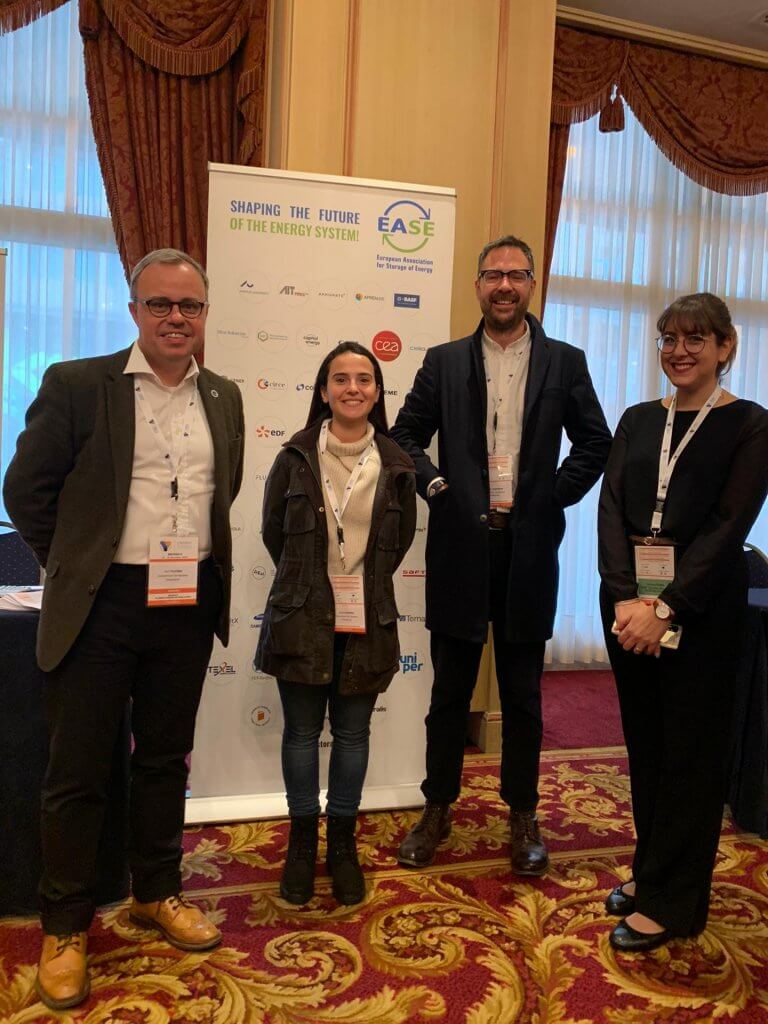
CBI's 2021 Technical Roadmap was presented to illustrate how constant performance improvement and technological advances can create limitless opportunities for the lead battery industry to help achieve global electrification and decarbonization targets.
While navigating through Europe’s funding landscape and showcasing European energy storage case studies using lead batteries (with Exide Group and Systems Sunlight SA), Dr Telford explained the challenges that the industry might face when applying through a “very complex” funding system, but also concluded with an optimistic note on the amount of opportunities that exist for energy storage and batteries in terms of public funding, proving that these are indeed necessary for the future:
“When considering the EU’s high-level goals, the speed of action required to mitigate the climate crisis, it is crucial that all energy storage solutions are not only available for deployment, but also encouraged”.

During a two-day workshop sponsored by CBI, a group of experts from car manufacturers, sensor and software suppliers and battery companies met to discuss future safety-relevant applications of automotive batteries. Whenever safe operation of a vehicle relies on 12V power supply, for example in steering, braking, driver-assistance or autonomous-driving functions, battery diagnostics is essential for Functional Safety (FuSa). The workshop focused on physical verification methods for Safety State-of-Function (SSOF) battery diagnostics.
Following a series of virtual meetings in the last several months, the in-person meeting held in Paris on 5-7 October began by identifying several key focus areas:
Over the past six months, members of the SSOF group have shared their perspective on the industry allowing for a common perspective on the current state-of-the-art for 12V auxiliary batteries not only in conventional vehicles, but also in battery-electric vehicles.
The use of lead batteries in electric vehicles is a key application with significant future opportunities, as identified by the recently launched CBI Technical Roadmap.
A major step in this collaborative effort, the meeting in Paris represented a milestone in recovery from the restrictions imposed by Covid-19. For all of the participants, it was the first time they had met in person outside their own organizations since lockdowns were imposed, and the first time many had met each other in person.
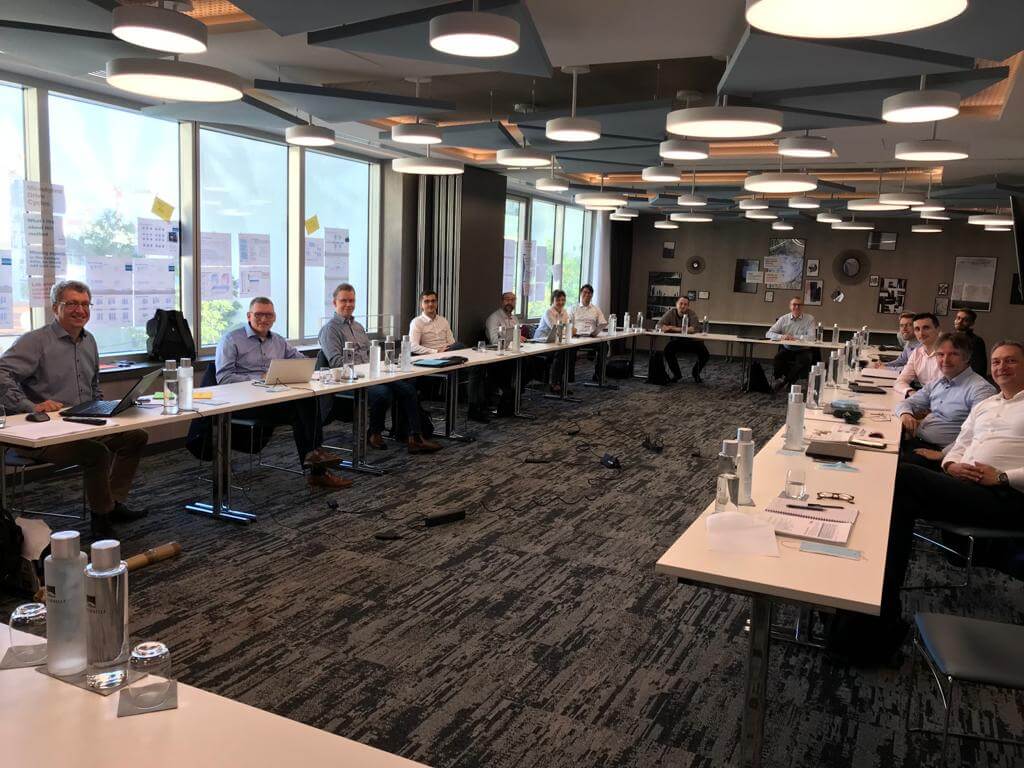
The meeting was chaired by Dr Eckhard Karden of Ford and attended by 18 experts from car manufacturers, sensor and software suppliers to the car manufacturers, and battery companies, with others joining virtually. So far, subject matter experts from 4 car manufacturers, 4 electronics suppliers, and 6 battery companies have been actively contributing to the group.
The purpose of this working group is to facilitate pre-competitive collaboration to harmonize the diagnostics for 12 V lead battery systems. This work is relevant for both for 12V main batteries which provide safety critical functions for vehicles and for auxiliary batteries (also known as low-voltage EV batteries) which provide secure power supplies for all types of vehicles including hybrid and pure electric vehicles.
The in-person meeting helped accelerate the continued harmonization effort, allowing for productive planning for key topics. The discussions covered the methods of diagnosis and the relevant fault conditions that need to be considered in order to ensure the battery is always able to meet the required duty cycle in a critical incident.
Furthermore, it was considered that an industry-wide database should be created with measured raw data from batteries in different conditions and with different ages for use in SSOF verification.
The workshop was successful in bringing together an important group to ensure batteries and the associated diagnostics are correctly specified for these automotive applications.
Interested in finding out more about CBI’s work in the automotive sector?

Read our guest blog featured on the World Economic Forum (WEF), covering the essential role of lead batteries for the safety of the world's electric vehicles (EVs).
CBI's Chairman, Dr Christian Rosenkranz from Clarios, shared his thoughts on low-voltage EV batteries with a special focus on Europe, as a critical technology for Europe's Green Deal ambitions.
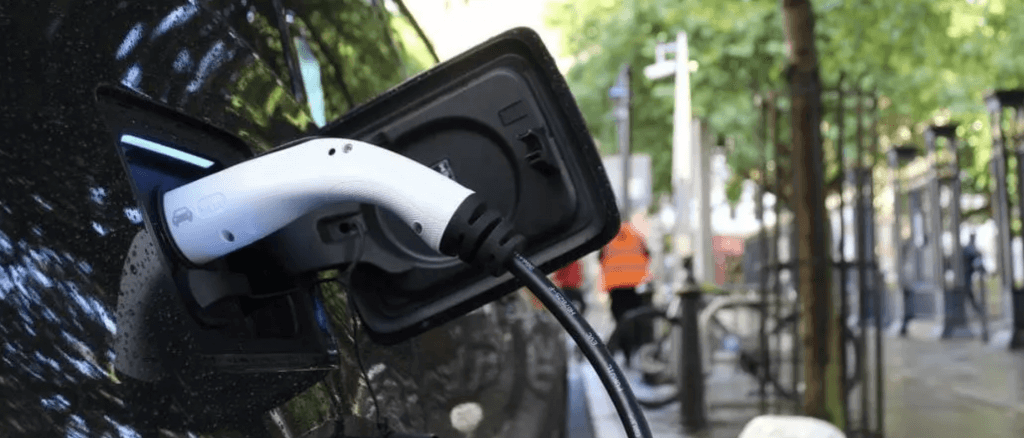
On October 4, CBI brought together a digital panel to discuss the critical role of batteries for Europe’s sustainable transition. As part of Europe's Sustainable Energy Week, supported by the EU Commission, the virtual event provided an open discussion around the importance of a level playing field amongst technologies in Europe and featured European case studies where advanced lead batteries are providing reliable, recyclable and safe energy storage.
CBI’s Research and Innovation Manager, Dr Carl Telford, opened the event by showcasing our recently launched Technical Roadmap, to illustrate that “sustainable economies need batteries”. If policy makers want to solve the problems of climate change and pollution, while moving from a linear to a circular economy, then industries will “need a proper deployment of battery technologies and energy storage”, and this is where Europe’s lead battery industry plays a key role.
From Exide Europe, Holger Fricke, Director Basic Research R&D EMEA, presented the benefits of Exide’s “on-site solar installation in Portugal”, that combines lead battery energy storage with renewable energy. Carbon emissions were reduced by more than 20% and energy management was improved, turning this case study into a real-world example of decarbonisation, with the installation facilities now being used as a showcase.
Peter Stevenson, Senior Technical Co-ordinator at GS Yuasa, joined the event to discuss the importance of hybrid solutions for Europe’s sustainable energy future. Using an example of the “world’s first container of dual chemistry energy storage system”, he highlighted the “complementarity and flexibility” between lead and lithium battery technologies.
While moderating the panel, Patrick Clerens, Secretary-General at EASE, reflected on the need of a level playing field between different technologies and stated that “no one can pick a technology winner”. Europe needs more batteries and new battery technologies, including hybrid ones, and through this it is possible to have “the best of both worlds”.

There are already some EU industrial and research initiatives going on to demonstrate how batteries can work together to reach the energy demands, such as the European Battery Alliance, Batteries Europe, Batteries 2030+ or IPCEI's. However, it remains important to share the message that a wide array of energy storage and battery technologies are needed to address the flexibility requirements and support the energy transition and the EU green goals, including lead batteries.
By the end of the discussion, it was clear that other industries can learn from the lead battery experience since it’s a well-established industry that represents a major example of circularity in Europe. Through research and innovation, enhancing the performance of lead-based technologies will be essential for Europe’s sustainable energy future and create further opportunities for synergies with other chemistries.
Watch the video of the event:
Download the presentations from the event below:
NEWS RELEASE
DURHAM, N.C. – September 20, 2021 - The Consortium for Battery Innovation (CBI) has launched its latest Technical Roadmap dedicated to delivering high-performance batteries supporting green growth and decarbonization goals across the globe.
Combining the latest market analysis with a scientific vision setting out how batteries can enhance performance to deliver a clean and sustainable future, CBI – the global battery research organization - has unveiled new research plans for advanced lead battery research.
Demand continues to soar for battery energy storage across the world as the switch is made to vehicles with greater levels of electrification and energy grids enhance their resilience and flexibility. The U.S. Department of Energy (DOE) predicts global growth of energy storage systems to triple to reach 160 GWh by 2030.
Sectors such as telecoms, the shift to 5G networks and the need for reliable power for data centres also feature batteries as central to maintaining communications.
Dr Christian Rosenkranz, Chair of CBI and Vice President Industry and Governmental Relations EMEA at Clarios, said: “We are spearheading research collaborations with governments, universities, end-users and lead battery manufacturers to ensure we fully tap the innovation potential of the technology. This is the age of the battery, and our roadmap is helping us deliver next-generation lead batteries to meet the challenges of making a clean future a reality.”
CBI’s Director, Dr Alistair Davidson, added: “Analysts predict a huge increase in global demand for lead batteries, estimated to be around 490,000 MWh by 2030. Our Technical Roadmap sets a clear path to achieving enhanced high performing and resilient advanced lead batteries through our new research.”
The roadmap highlights the huge potential to increase lead battery performance and sets targets in each application area, from mobility to renewable energy storage – to increase the lifetime and efficiency of batteries in each sector.
In addition, the superior circularity, safety and reliability of lead batteries is adding further credibility to the nationwide push to be a centre for sustainable battery technology.
Targets in the roadmap include:
The new roadmap builds on the progress made in the first edition published in 2019 and expands its coverage of key application areas including motive power, industrial, UPS and e-bikes.
###
Notes to editors
On September 15, the EU Commission’s President made a State of the Union speech highly focused on the future: from investing in 5G, to improving research and innovation and making sure that Europe will reach the EU Green Deal goals. Ursula Von der Leyen pointed out some of the key aspects that rule our work at CBI and our dialogue with our members and companies from the industry.
Through NextGenerationEU, the Commission is committed to “invest in 5G and digital skills” as the demand for faster and more efficient networks increases, along with the explosion of AI, EVs and many other real-time autonomous applications.
“To ensure uninterrupted access to these services, telecoms and data centre back-up demand will increase exponentially” and this is where lead batteries have an important role. As the main option for the “uninterruptible power supply (UPS) energy storage needed for data centres and network rooms” representing 90% of global demand, lead batteries are a critical player for Europe’s digital transition.
But let’s not forget about the role of this technology for hospital back-up applications, incredibly relevant during the COVID-19 pandemic, by “ensuring uninterrupted power supplies”. In Italy and in the UK, FIAMM’s provided safe and reliable lead batteries to support hospital power.
Another wish from Von der Leyen is to achieve “European tech sovereignty”, which also includes the ability to supply the entire value chain in many highly demanded technologies, such as EVs, hybrid vehicles or renewable energy storage systems. CBI recognizes that all batteries are needed to give Europe the faculty to attain green goals and, as we invest in research and innovation for advanced lead batteries and work with world-class institutes, we are here to say that this technology is a critical player in the green transition by offering “high-performance, reliability, safety and a sustainability profile including almost 100% recycling at end-of-life in Europe”.
We are demonstrating that lead batteries can make EVs safer, that our members are involved in clean energy storage projects contributing to decarbonization and that this technology is a great team player when collaborating with other batteries and using the best of both chemistries for a more efficient outcome.
As the urge for a fair green transition and a cleaner energy society increases, CBI believes that the actions to reach 2030 goals must be taken now and that the potential and opportunities for advanced lead batteries are limitless:

This year is set to be the Year of Rail in Europe and the EU is also currently celebrating its Mobility Week.
In fact, there are many reasons to keep investing and improving this sustainable, innovative and fast transport mode. Not only does it add value from an economic perspective by contributing to the EU Green goals for 2050 while creating jobs and growth (note that: only in 2015, the rail sector employed directly 577,000 people according to an EU Commission's report ), but it also has a social impact by connecting people from all member states through seamless rail networks and reducing distance when it comes to commuting.
Therefore, thinking about the future of Europe’s Rail industry also leads to the future of its sustainability in our society - possible to develop through research and innovation.
In a recent article by Dr. Bernhard Riegel, Director of Research Development at battery systems provider for train operating companies, HOPPECKE Batterien GmbH & Co. KG, he notes that lead batteries are still the most widely used technology in Central Europe for supplying power to the onboard electrical systems of trains.

In the article featured on Charge the Future, Dr. Riegel discusses the unique blend of benefits offering by lead batteries for rail applications. At moderate temperatures they combine low maintenance requirements, reliability and low lifecycle costs. In many European trains, lead batteries are used to protect onboard power supply systems. Whether they provide emergency power supply for passenger cars, start the diesel engine for diesel locomotives or are used for direct drive, lead batteries play an essential role for rail.
CBI’s « rail road » to keep supporting research and innovation for lead batteries in order to significantly contribute to the EU green goals and future climate objectives of our planet, is linked to the knowledge that lead batteries have a tremendous potential to innovate and be used in many different applications in a highly sustainable, economic and safer way.
Dr. Riegel, also highlighted the growth potential of lead batteries in this and other sectors, from providing uninterrupted power to hospitals and back-up to telecoms and stabilise grids, to backing up renewable energy supplies and supporting hybrid and electric vehicles.
As we celebrate the EU’s mobility week, we recognize the many ways lead batteries are powering low-emission mobility and contribute to Europe’s low carbon future.
Wim De Vos, CEO of Campine, joins CBI's guest blog to share his thoughts about the importance of lead batteries and research to reach the EU's green goals.
We are currently in times where many raw materials are scarce and logistics from other parts of the globe are expensive. The only battery technology material that gives Europe security is lead.
When discussing Europe’s energy transition goals - involving the electrification of vehicles and generating more energy from renewable solar and wind power - we cannot avoid talking about batteries. Demand for all types of batteries during the next decades is growing rapidly as we are using more and more electric devices, including electric vehicles (EVs), and increasing the level of energy storage for utilities and renewable projects.
Europe will need metals to produce all these different batteries, however, many of them are becoming scarce and more expensive to import, with the cost of container shipping from Asia to Europe increasing by 4x compared to 2020.
In the end, we will have to make sure that we have enough materials to fuel both battery production, and our path towards a greener society. So where do lead batteries fit in to providing the solution?
Lead remains the main battery technology for automotive applications, such as start-stop and micro-hybrid vehicles. Lithium-ion batteries are the primary batteries for EVs, increasing the demand for the metals needed to produce these, but lead continues to play a critical role as low-voltage EV batteries. When it comes to choosing the best technology to achieve the EU’s decarbonisation goals, there is a clear role for all battery technologies to play their part based on their strengths, such as weight, cost, and the performance of the battery.
Nevertheless, if we focus on sustainability and circular economy goals, lead is the only battery technology that is truly “circular”. A new lead battery in Europe is made using 80% recycled content, with nearly 100% of lead batteries collected and recycled at end-of-life. This circularity is far ahead of other battery technologies.
To really consider sustainability, we need to look at the complete supply chain.

The importance of research and innovation
To make sure that the clean energy transition is achieved, Europe should use as many lead batteries as possible, and increase investment in research and innovation for this technology.
The lead battery has been the mainstream technology for many years and for the past two decades a lot of things have changed for the industry, especially with the rise of alternative chemistries like lithium.
CBI has been an important driver for industry research and innovation, to continue the development and advancement of lead battery technology to meet the demands of the EU’s green transition and need for batteries, underpinned by a mature and circular industrial base.
Therefore, it’s extremely vital to invest money, time, people and “brains” into the work of CBI to develop advanced lead batteries that can compete in the evolving market, by being cost-effective, more efficient, more sustainable and, especially by contributing to the circular model.

National labs remain a critical player through which the U.S. lead battery industry is leading the way in battery innovation. Through the first-of-its-kind Lead Battery Research Science Program (LBSRP) at ANL, this program has been a key catalyst for improving understanding of lead battery technology.
For over five years, a complement of scientists from the Chemical Sciences and Engineering Division (CSE), Materials Science Division (MSD) and Advanced Photo Source (APS) have been actively studying lead battery fundamental processes governing DCA, lead sulfate mechanistics, and failure modes under representative duty cycles.
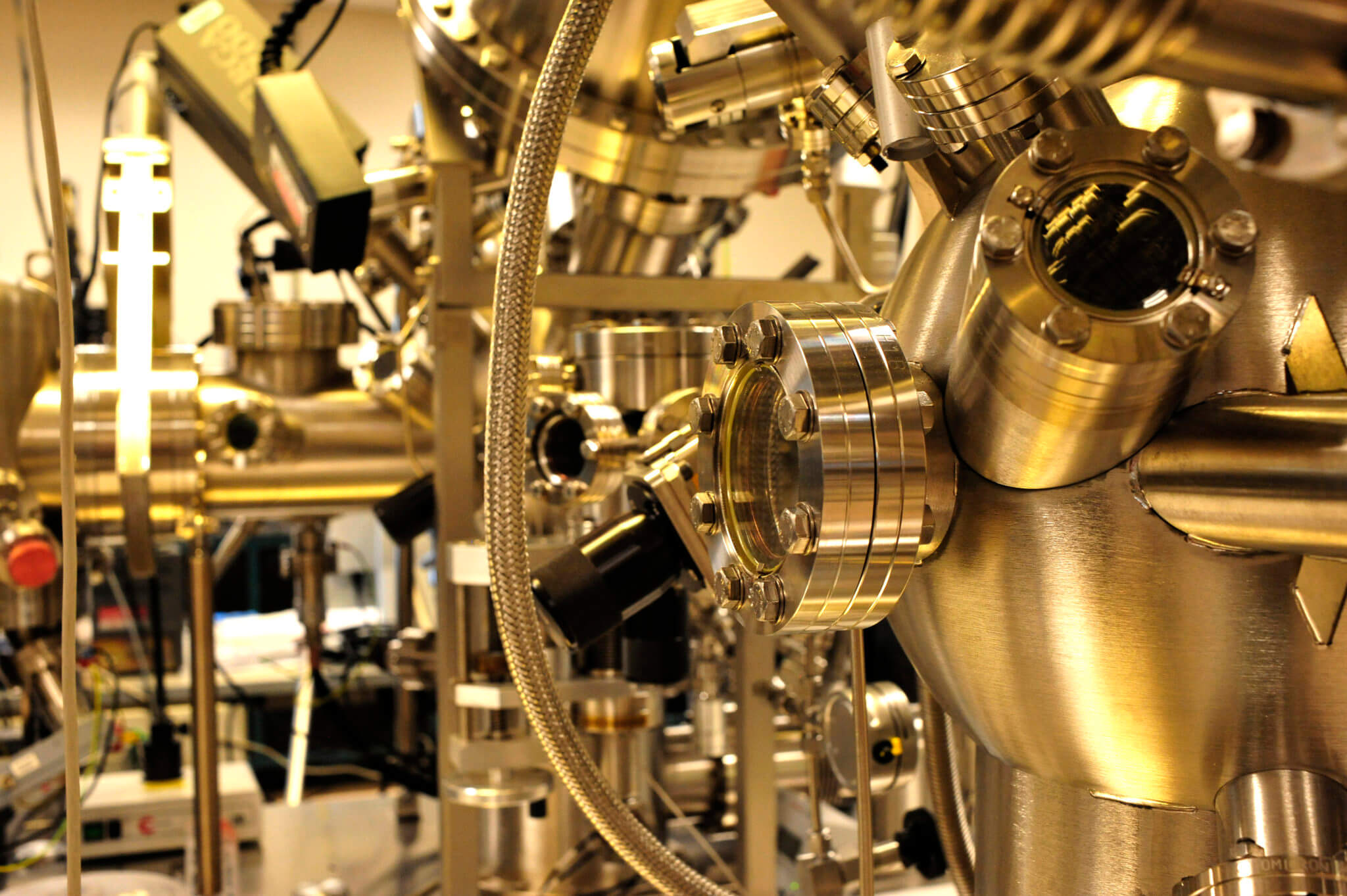
The research program, which involves 90% of the North American lead battery industry, has capitalized on the scientific excellence of both the industry and the national lab structure, demonstrating a great model of how productive these collaborations can be and the opportunities to engage with government labs to deliver next-generation batteries.
Under the umbrella of the U.S. Department of Energy (DOE), several different testing and application-specific efforts are underway at different national laboratories. At the Pacific Northwest National Laboratory (PNNL) there are twin testing efforts underway: one focused on the safety and reliability of batteries in energy storage systems (ESS) applications and another testing innovative new battery type performance.
In both projects, advanced lead batteries using bipolar configurations, novel electrodes and other innovations are currently being studied.
In addition, a PNNL team is currently studying a new electrolyte system in conjunction with lead-based electrodes, probing how alternative electrolyte chemistries can maximize the inherent electrochemistry in acidic lead systems.
In Golden, Colorado, the National Renewable Energy Laboratory (NREL) is conducting novel testing and evaluation for five different lead battery systems in behind-the-meter storage (BTMS) for EV fast-charging.
The spectrum of advanced lead batteries tested in this study are serving as a benchmark group with the ongoing data collection paving the way for demonstrating how these systems would be used in the future.
Specifically geared towards EV fast-charging demand reduction, this unique application is presenting exciting future opportunities for lead batteries to play a pivotal role in the transition to e-mobility.
The role of universities and national labs are critical for the cutting-edge research underway in advanced lead batteries. These partnerships open up future market opportunities for the technology to be a central player in the move to a low carbon future with higher levels of electrification.

There is an innovation wave underway in lead battery technology. In universities and national laboratories across the U.S., research projects are opening up new pathways for understanding and enhancing the performance of lead batteries.
As the current administration moves steadily towards a low-carbon future, through ambitious programs accelerating new energy storage technology development, and demonstrated through the pledge to cut carbon emissions in half by 2030, lead batteries have a vital role to play.
In a CBI project with UCLA, in-situ TEM of lead battery electrodes is depicting expansion and growth processes of the active material via real-time imaging. This kind of scientific insight is shedding new light into failure modes of lead batteries, working towards providing a deeper understanding for how to optimize the battery for grid energy storage and low-emission vehicles.

In Minnesota’s University of St. Thomas, pioneering research is underway into microgrids utilizing lead batteries. A critical application in the shift to reliable and renewable energy, microgrids are booming in demand across the U.S. and further afield.
With studies taking place in the dedicated St. Thomas Center for Microgrid Research, the microgrid features a 125 kW/396 kWh lead battery system, a 48 kW solar array and the capability to emulate different electrical sources or loads using state-of-the-art electrical power research equipment. With its connection to the grid, the facility is helping to both develop technology and train new engineers to shape the future of energy.
Battery improvement from a systems level is being studied by the CALCE Battery Team at the University of Maryland, focusing on lead batteries utilizing a complement of modelling techniques and battery management research. The aim is to improve the lifetime of lead batteries and other forms of electrochemical storage, a key technical parameter for utility, renewable energy storage and automotive applications.
A cross-disciplinary team at Columbia University are studying smart charging algorithms and machine learning methodologies in lead battery packs. This kind of research is invaluable, and the improvements are being applied directly through a CBI research collaboration with Electric Applications Incorporated (EAI) using novel charge control methods to maximize lead battery string life.
Over the last three decades, CBI’s research program has focused on many different components in lead battery electrodes, including expanders, which are vital for performance. In the newest project to be launched between U.S.-based research teams and the lead battery industry is a collaborative effort with the University of Toledo and Argonne National Laboratory (ANL).
Organized by the American Battery Research Group in an effort geared towards maximizing energy throughput and charge acceptance in lead battery electrodes, it will involve designing, producing and testing new organic expander molecules.
Universities are just one of the scientific sectors to be focusing their research efforts of advancing lead batteries for the evolving technical demand of booming industries such as energy storage and low-emission mobility.
Our next blog in the innovation series will feature the pioneering scientific research underway in collaboration with U.S. national laboratories.

When the French inventor Gaston Plante discovered in 1869 that two lead plates immersed in sulfuric acid solution can reversibly store electricity, he probably did not imagine that he had given the world one of the most widely used and stable battery systems.
Today, 160 years later, the lead battery dominates more than 60% of the market for secondary power sources, with a market worth more than $30 billion annually.
Globally, there is a huge infrastructure and economy that supports the production and development of lead batteries including thousands of jobs and factories around the world.
What are the reasons for the success of the lead battery? First of all, it is safe, the terminal voltage is relatively high and it can deliver high power at discharge high currents. Another advantage is the low cost of production and the low total cost of ownership and operation. Last but not least, the lead battery is the most recycled consumer product globally. More than 97% of the components of the used lead batteries are reused, making this electrochemical system an integral part of the circular economy.
But innovation is necessary all technologies. And for lead batteries, an area of development is to tackle the low specific energy of the system.
Our research team at the Institute of Electrochemistry and Energy Systems at the Bulgarian Academy of Sciences (IEES-BAS) is exploring how to improve the energy and environmental performance of lead batteries. By enhancing these aspects, the lead battery will continue to be a core technology for the decarbonization aims of governments across the globe.

In a recently published paper by our research team at IEES-BAS, we look at the possibility to design a lead-air electrochemical system. The purpose of the study was to prove that the positive electrode in a conventional lead battery can be replaced with a gas diffusion electrode (GDE).
The main advantages of this approach are that the GDE increases the specific energy of the system by up to 52% while reducing the amount of lead used, thus making the battery lighter and more cost-effective.
Another advantage which makes the adoption of the new system easier is that the negative electrode is the same as the one used in conventional lead batteries. This means that the main current generation reactions remain the same.
Research and innovation are integral to the lead battery industry, and our work on this system will continue in order to improve the stability and reversibility of the GDE. We believe that this new reincarnation of the lead battery will open new possibilities for lead batteries to remain an important part of the energy storage landscape as well as to remain a leader in the circular economy.


The much-anticipated “Fit for 55” package released by the European Commission is the latest in a set of ambitious targets designed to ensure Europe achieves carbon-neutrality by 2050.
In a move designed to accelerate the reduction of greenhouse gas emissions, the package aims for a 55% reduction by 2030 through interconnected policies including those targeting energy and transport.
That’s where batteries come in. This is a unique opportunity for batteries to play a significant role in one of the most ambitious decarbonisation frameworks in the world.
The shift to focusing on more renewable energy generation and the grid resiliency and flexibility required as a result presents a chance for advanced lead batteries to directly support these energy needs.
To tackle climate change, energy storage is needed yesterday, not just by 2030. With existing supply chain and mature manufacturing capability, lead batteries can be deployed in large numbers, fast and sustainably.
Research underway led by CBI in Europe is already driving innovation in the technology directly focused on this area: plugging-in renewables and facilitating grid storage. With some of the leading universities in Europe and with partnerships in the US, this research will feed in to the next-generation advanced lead batteries needed to support Europe’s climate-neutral future.

With the ever-increasing move to hybrids and electric vehicles, advanced lead batteries continue to provide an essential on-board element for Europe’s e-mobility fleet. They’re also live and online across Europe providing reliable, sustainable energy for installations spanning community microgrids, solar farms for manufacturing plants, and utility grid frequency regulation.
A message that needs to resound in Europe is that all batteries will be critical for this shift. With different advantages for different applications, battery technologies are vast and diverse. And advanced lead batteries are one of the critical players offering high-performance, reliability, safety and a sustainability profile including almost 100% recycling at end-of-life in Europe.
Combining these attributes with the dedication to innovation from the European, and indeed the global lead battery industry, is setting this technology apart.
From enhancing cycle life, an essential parameter for renewable and utility energy storage, to improving dynamic charge acceptance, a vital part of what makes hybrid and electric vehicles cleaner, is where the industry is focusing their efforts for lead battery improvements.
The lead battery will be a significant player in enabling the EU Green Deal by making climate and circularity targets a reality, supported by research, innovation and collaboration across Europe to ensure the future has all the batteries it needs to succeed in the green transition.

With the energy storage landscape at a turning point in the U.S., the lead battery industry is stepping up to the challenge to meet the call by the Department of Energy (DOE) to accelerate the development and utilization of next-generation energy storage technologies.
This effort, part of a series of programs focused on energy storage innovation for utility services, is offering a unique opportunity for the lead battery industry to double down on research efforts to continue enhancing technology performance to support domestic energy storage demand.
The industry is already a step ahead with its domestic manufacturing and recycling capability – a $26.3 billion industry with battery end-of-life recycling rates of 99% - but innovation remains a driving force for lead batteries as future energy demand continues to soar.
The effort announced by the DOE represents a renewed focus on energy storage research and development and the Lead Battery Grand Challenge innovation roadmap, developed by CBI and Battery Council International (BCI), is answering the call.
Offering the opportunity for the lead battery industry to collaborate with the scientific excellence of the DOE, through national labs partnerships and research collaborations, our industry aims to deliver innovative, next-generation lead batteries for key energy storage markets.

From residential and commercial demand reduction to load response for solar generation, the opportunities are vast for lead batteries to provide a unique blend of benefits – safety, recyclability, reliability and sustainability – whilst delving into the untapped potential of the technology through specific research areas.
Increasing total energy throughput related to cycle life is a key area of improvement identified for lead batteries, building on existing efforts underway by CBI to enhance battery performance, such as the existing Argonne National Laboratory project.
Alongside other innovative developments such as new battery architectures used in next-generation bipolar lead batteries, the research areas identified in the Lead Battery Grand Challenge are poising the industry for collaborative projects with DOE stakeholders.
As the future of energy calls for high-performing, sustainable technologies, lead batteries are set to play to a critical role in delivering a technology vital to achieving the technoeconomic and decarbonization goals for the U.S. energy grid.
Download the Lead Battery Grand Challenge innovation roadmap.

Manufacturers and Research Consortium Name 13 Areas to Improve Battery Performance, Deployment and Manufacturing to Meet Demand for Advanced Battery Technology
WASHINGTON – JULY 13, 2021 – As lawmakers work to strengthen infrastructure within the energy sector, batteries have emerged as a critical area that requires additional investment to ensure a reliable source of energy storage to safeguard a secure supply chain to power the electrical grid, as well as essential industries like transportation, telecommunications, data security, aerospace and defense.
The pandemic revealed the nation’s reliance on imports of products and materials used in critical manufacturing sectors to produce energy storage. In response, the U.S. Department of Energy (DOE) publicly committed to further investment to create and sustain American leadership in energy storage.
The lead battery industry, with its reliable and proven domestic infrastructure has developed an innovation roadmap to demonstrate its role in helping DOE meet that challenge. Battery Council International (BCI) and the Consortium for Battery Innovation (CBI) jointly produced the report.
“This roadmap identifies key research areas which offer opportunities for the next generation of advanced lead batteries to deliver significant performance gains and to play and even greater role in the diverse energy mix that will power the nation’s grid. It’s a call to arms for lead battery manufacturers, DOE, and the national laboratories to partner on collaborative research that takes science from the laboratory to the marketplace,” said Roger Miksad, executive vice president of BCI.
The lead battery industry believes that by using the experience of the lead battery industry in combination with the scientific skill and expertise of the DOE’s national lab system can yield significant performance gains that could double, or provide even greater advances to cycle life and energy density. This would further cement lead batteries as the only energy storage solution with intrinsic safety measures, that is highly sustainable, manufactured domestically and meets the technoeconomic needs of the U.S. utility sector for decarbonization and distribution of the U.S. grid.
“DOE’s renewed focus on energy storage R&D represents a unique opportunity for demonstrable gains in the U.S. battery industry. A high-performing and sustainable energy storage solution is key, and this is possible through a collaboration between the U.S. lead battery industry and the scientific excellence of the DOE,” says Dr. Matt Raiford, senior technical manager, CBI, an author of the roadmap.
In February, President Biden issued an Executive Order to ensure resilient and diverse supply chains which put the spotlight on the need for the U.S. to assert global leadership with home-grown technology to assist in the transition to an electric and low carbon future. High capacity batteries will help to enable that process. Advanced lead batteries hold the promise of a truly sustainable, U.S. battery energy storage industry.
The roadmap’s thirteen research work areas identified to aid DOE in meeting the challenge include:
The U.S. lead battery industry has an annual economic impact of $26.3 billion with more than 92,000 direct and indirect jobs across 38 states. Lead batteries are a baseline energy storage technology used in automotive, telecommunications, electric power, mining, agriculture, marine, and data centers. They are the most recycled product in the world, boasting a 99% recycling rate. Lead batteries provide 60% of the global rechargeable energy storage market, and have significant potential for even better performance to serve increasingly demanding requirements for vehicle electrification and the integration of renewable power to the electric grid.
ENDS
Battery Council International (BCI) is the North American trade association representing the lead-based battery manufacturing, supply, recycling and distribution companies. For more information on the association, visit www.batterycouncil.org.
The Consortium for Battery Innovation (CBI) is a pre-competitive research organization funding research into lead batteries for energy storage, motive and automotive applications.
For more than 25 years, with its membership of battery manufacturers, industry suppliers, research institutes and universities, CBI has delivered cutting-edge research pushing the boundaries of innovation in lead battery technology. Our membership comprises the majority of US-based companies from the entire lead battery value chain.
Through research partnerships with scientific institutions including Argonne National Laboratory and UCLA, CBI is setting the standard for advanced lead batteries and the next generation of energy storage.
As the most widely used battery technology globally, lead batteries are used extensively in a number of applications, including data centers. CBI has invited FIAMM to join our guest blog to share their insight into the critical role of lead batteries for the growing data center market – with demand for the technology predicted to grow by 5 GWh by 2030 - and their key advantages in terms of safety, reliability, cost and recyclability.
Lead batteries are the most widely used of all the battery chemistry families today. Worldwide there are around $35 billion produced every year. They are used extensively from engine starting in cars and trucks, powering industrial equipment, and for providing critical backup power in many applications – including data centers.
A debate is taking place in the market about the role of the latest battery chemistry, lithium, and how it compares to lead. The argument is valid and one that is important for the customer to understand. Each system has its merits.
At FIAMM, an international producer of batteries for industrial and automotive, and part of the global Japanese Showa Denko Group, we have chosen to maintain our focus on lead.
Like most major international battery producers, we continually research new technologies in our effort to provide value for our customers. We evaluated Lithium as a battery chemistry and concluded that we want to keep lead as our core chemistry. This is why.
A modern lead battery is the culmination of years of experience. In the data center world, FIAMM makes batteries that provide the vital link to protect power continuity. We have supplied thousands of applications, supplying big-name customers across the world.
Every data center power requirement is unique. Our experience indicates that valve regulated, maintenance free lead batteries will continue to be the major choice for years to come.
A modern UPS system in a data center is complex. There are many factors to be considered, such as its location in the world, power quality and the unique nature of the application itself. FIAMM approaches each project as unique. We examine all the factors that the customer requests and advise on best practices, such as layout and how to improve an environment that maximizes the life of the system. There are no standard off-the-shelf solutions.

Data centers are energy-hungry and, without power, they fail. The quality of their service is critical. A major push in the data center industry, at the moment, is to ensure that data centers use ‘greener’ power. The industry is setting an impressive record and some of the major operators already operate on 100 percent renewable energy.
All FIAMM batteries are recyclable. Lead, which is to say that the core of the battery can be reclaimed, reprocessed, and recycled. This fits well with the growing concern to protect and re-use precious resources. In Europe, in particular, there is a major push towards products that fit a circular economy. Lead batteries meet this requirement well as they can be 99 percent recycled. All lead batteries have a residual end-of-life value…usually between ten and 15 percent of the initial cost.
Lead batteries are also safe and offer good life. Like all products, they must be used within the guidelines provided by producers. FIAMM batteries operate in a temperature range of 25-30 Celsius.
In the end, the deciding factor often comes down to money. The focus is on operating costs and payback. FIAMM batteries fit well on these criteria. Lead batteries cost considerably less than a lithium solution. An equivalent lithium solution can cost 300 percent more than lead. This represents a significant premium. Furthermore, there is still no effective solution for recycling lithium batteries, and disposal can be costly.

Article originally posted on Data Center Dynamics.
Pairing renewable energy with a dual-chemistry battery energy storage system is the latest innovative project underway by GS Yuasa. Based at their Ebbw Vale factory in Wales, the installation featuring nearly 3,000 solar panels and a combined lead and lithium battery system is forming part of Wales' first dual-chemistry energy centre. Part funded by the European Regional Development Fund (ERDF), the unique integrated energy centre is showcasing the benefits of using complementary battery technologies to drive Europe's green energy ambitions.
The installation of nearly 3,000 solar panels, forming part of Wales’ first dual-chemistry energy centre has been successfully completed at GS Yuasa’s Ebbw Vale factory.
The battery manufacturer announced their partnership with the innovative renewable energy company, Infinite, late last year. Both Infinite and GS Yuasa, along with their partners Albion Capital, are set to launch their first Energy Centre at the Rassau industrial estate in South Wales.
The combination of wind turbines, solar photovoltaics and battery storage will provide reliable, cost efficient and greener power directly to the customer.
Work at the site is moving on apace with the first phase of the unique integrated energy centre – the installation of a 1MWh rooftop solar system at GS Yuasa’s factory, already completed. Approval has also been granted for the building of a wind turbine which will supply electricity directly to the site. The Energy Centre will be linked to an energy storage scheme with its ADEPT battery container bringing together the use of GS Yuasa’s lead acid and lithium batteries, thus offering optimum efficiency and flexibility when managing power across a micro-grid.

Andrew Crossman, Director, Infinite says: “The GSCS Energy Centre represents a step-change in the de-centralised distribution of low carbon and renewable energy. The Rassau scheme aims to share the benefits of multi technology generation within the immediate community, providing discounted renewable power and reducing the CO2 emissions in the area.”
Shaun Gardner, Managing Director, GS Yuasa Manufacturing UK Ltd added: “The project brings a number of benefits to our Ebbw Vale factory and the wider Rassau industrial estate. The unique combination of our lithium and lead-acid batteries, the latter of which are produced on site in South Wales, allows for the storage of greener energy, generated by either solar or wind, to be used at a later date.”
The centre is part of the Generation Storage Consumption Supply project (GSCS) and is one of up to seven local energy centre schemes in South and West Wales to be grant funded by The European Regional Development Fund (ERDF). Match funding of £5.5m has been provided by Infinite’s funding partner, Albion Community Power. The total CAPEX for the schemes is £14.4m with £8.9m provided by the ERDF.
Welsh Government Minister for Climate Change, Julie James said: “Climate Change is at the heart of our decision making and we are committed to accelerating the transition to a low carbon energy system in Wales. The GSCS Energy Centre, alongside the other EU funded local energy schemes, will play an important role in driving action towards our ambition for a more sustainable future for Wales, by providing the benefits of cost-effective, more reliable green energy to local businesses and communities across South and West Wales.”
Marco Yu, Investment Director, Albion Community Power, says: “Albion has over 20 years’ experience funding sustainable energy projects across the UK. We backed the Infinite team in the early stages of its growth and are thrilled to be part of its latest pioneering, multi-technology projects that are leading the way in helping local businesses to decarbonise and reduce energy cost while alleviating the electricity load of the electricity grid network.”

Battery innovation is what drives us at CBI. And it’s what unites our members based across the globe.
The last decade has seen a boom in innovation in advanced lead batteries, using novel design and new architectures to enhance the performance of traditional lead batteries for a range of applications.
Progressing from benchtop prototypes to mature products, these novel advanced lead batteries are poised for the mass market.
The unique electrodes offered by New Zealand’s ArcActive and the different bipolar technologies offered by US-based Advanced Battery Concepts (ABC) and Gridtential are just some of the examples of recent lead battery innovation.
For these developments to be stemming from our member companies is encouraging for CBI and helps us to showcase our core messages about the innovation underway in lead batteries, directly feeding into the needs of society for high-performing, reliable and sustainable lead batteries.
Beginning as a garage start-up, ABC is based in Clare, Michigan and quickly developed into a state-of-the-art manufacturing and development center. ABC's GreenSeal® bipolar technology, which delivers increased performance, more efficient charging, longer life and reduced weight, is now licensed by seven battery manufacturing companies located across the world in the US, Europe, India and China.
The technology touts the highest energy density (65 Wh per kg) on the market and GreenSeal® batteries also provide high power and charge acceptance. As ABC’s Chief Operating Officer, Mike Everett, said at the European Lead Battery Conference in 2020, they plan to add a medium volume production line, able to build 250,000 GreenSeal batteries annually to their facility. ABC has also been awarded a contract with the Defense Logistics Agency to develop advanced lead batteries for US military vehicles.
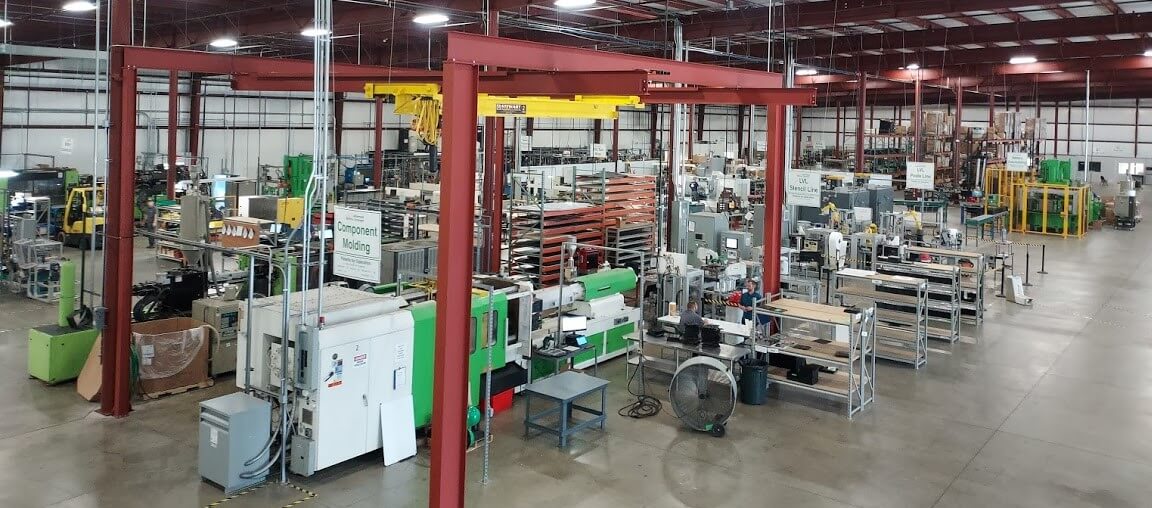
Founded in 2007, ArcActive is based in Christchurch, New Zealand and recently won the BCI Innovation Award for their AACarbon™ technology. Their novel carbon felt electrodes have demonstrated unparalleled recharge capability with some of the highest dynamic charge acceptance (DCA) values recorded for any advanced lead battery.
At the Advanced Automotive Battery Conference in 2020 and during BCI’s 2020 Virtual Convention, ArcActive’s presentations showed DCA values of +1.4 A/Ah at the 12 V level and close to 9 A/Ah at the 48 V level.
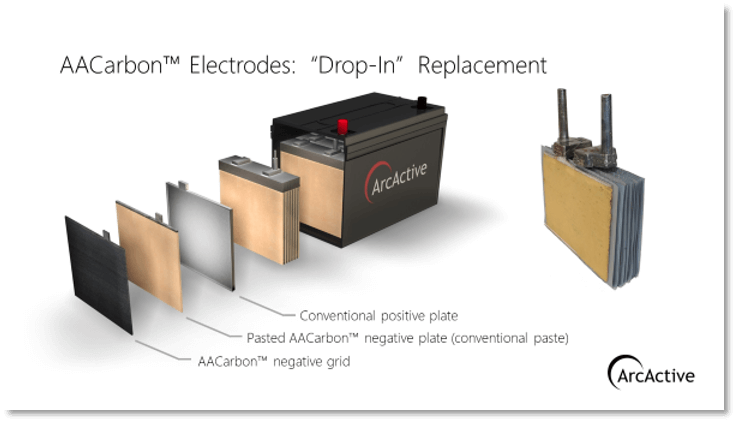
DCA is one of the critical work areas for CBI’s research to ensure lead batteries continue to innovate in their area to meet evolving technical demand in the increasingly hybridised automotive market.
ArcActive’s DCA performance is quickly approaching CBI’s research goal of 2.0 A/Ah and they have developed a suite of manufacturing equipment to translate their electrode technology directly into AGM and EFB products.
Since 2010, Gridtential has made major strides in developing their flagship Silicon Joule® technology. The innovative silicon wafer substrate combined with the bipolar technology has helped to enhance lead batteries across almost every performance metric.
The Silicon Joule technology provides improvements in energy density, power density, recharge efficiency, and cycle life, especially at deep depth of discharge (DOD).

The silicon wafer electrodes utilize common semiconductor high-throughput manufacturing processes to generate high quality battery current collectors. Silicon Joule batteries can be manufactured leveraging existing production equipment, so they're ready today to meet the worldwide demand for safe and sustainable energy storage.
With 12 battery partners, Gridtential have just announced a series of groundbreaking AGM reference batteries produced on East Penn Manufacturing’s prototype line, beginning with a single-block 24V lead battery optimized for deep-cycle applications.
Combined with a CBI research project looking to develop plug-and-play systems for the solar residential market, Gridtential is a leading player for lead battery innovation.
This is just a snapshot of the innovation underway in the global lead battery industry. Combining the expertise of industry partners with universities and research institutes is the basis for CBI’s research program to deliver the next generation of advanced lead batteries.
Find out how we’re propelling innovation with a range of ground-breaking research projects here.
NEWS RELEASE
A new university research partnership will show how advanced lead batteries can support electricity grid energy storage and plug-in to more renewable and other storage requirements for low carbon energy systems.
The project is being led by the University of Warwick and Loughborough University, supported by the Consortium for Battery Innovation (CBI).
Demand for batteries as a storage technology is steadily growing across the globe in order to support greater levels of grid flexibility, reliability and decarbonization as more renewables are integrated into the grid and in the face of extreme weather events.
By developing more advanced levels of modelling and prediction of lead battery behaviour for utility grid storage, the research is geared towards facilitating higher uptake of lead batteries to support the energy grid.
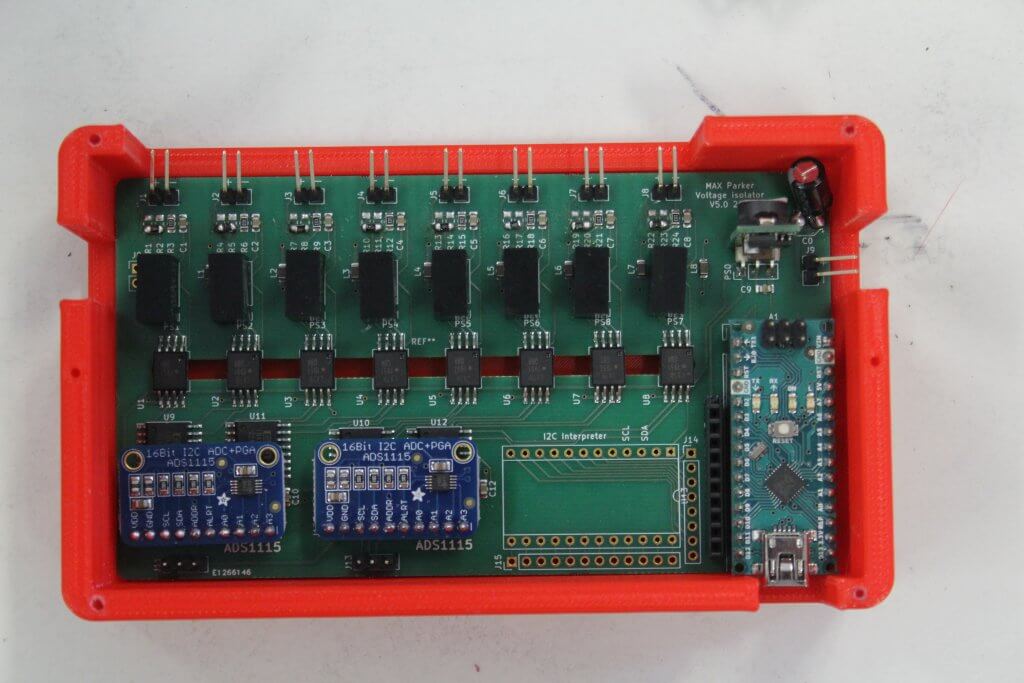
Europe’s energy storage transition over the last few years has witnessed tremendous growth, increasing from 0.55 GWh 2016 to 5.26 GWh by the end of 2020, with front-of-the-meter deployments such as utilities leading the way, representing more than 50% of installed capacity.
These energy storage systems require high-performing, reliable and affordable batteries to ensure the smooth generation and storage of energy for regional and national electrical grids.
Prof Richard McMahon from the University of Warwick said: “We are really pleased to be working with the CBI on the use of lead batteries in energy storage applications. Lead batteries have key benefits of safety and recyclability but there is work to be done to understand how best to manage lead batteries in energy storage service to optimize efficiency and prolong life.”
He added: “This knowledge will show owners and operators of storage facilities that lead-based systems provide a safe and cost-effective solution.”
By combining innovative research techniques such as electrochemical impedance spectroscopy, researchers will study and predict the performance and lifetime of lead batteries in various utility duty cycles.
"The availability of low-cost powerful microprocessors is fuelling an explosion in our capability to monitor, understand and impact battery degradation in real world situations at low cost,” said Prof Dani Strickland from Loughborough University.
“This project is exciting because it will use expertise in the partner organisations to transition lead batteries to the world of big data and smart energy storage," she continued.
The model developed by researchers will be compared to data gathered from actual lead batteries in the field, significantly aiding the understanding of how the technology is used in utility grid applications and how these factors impact battery lifetime.
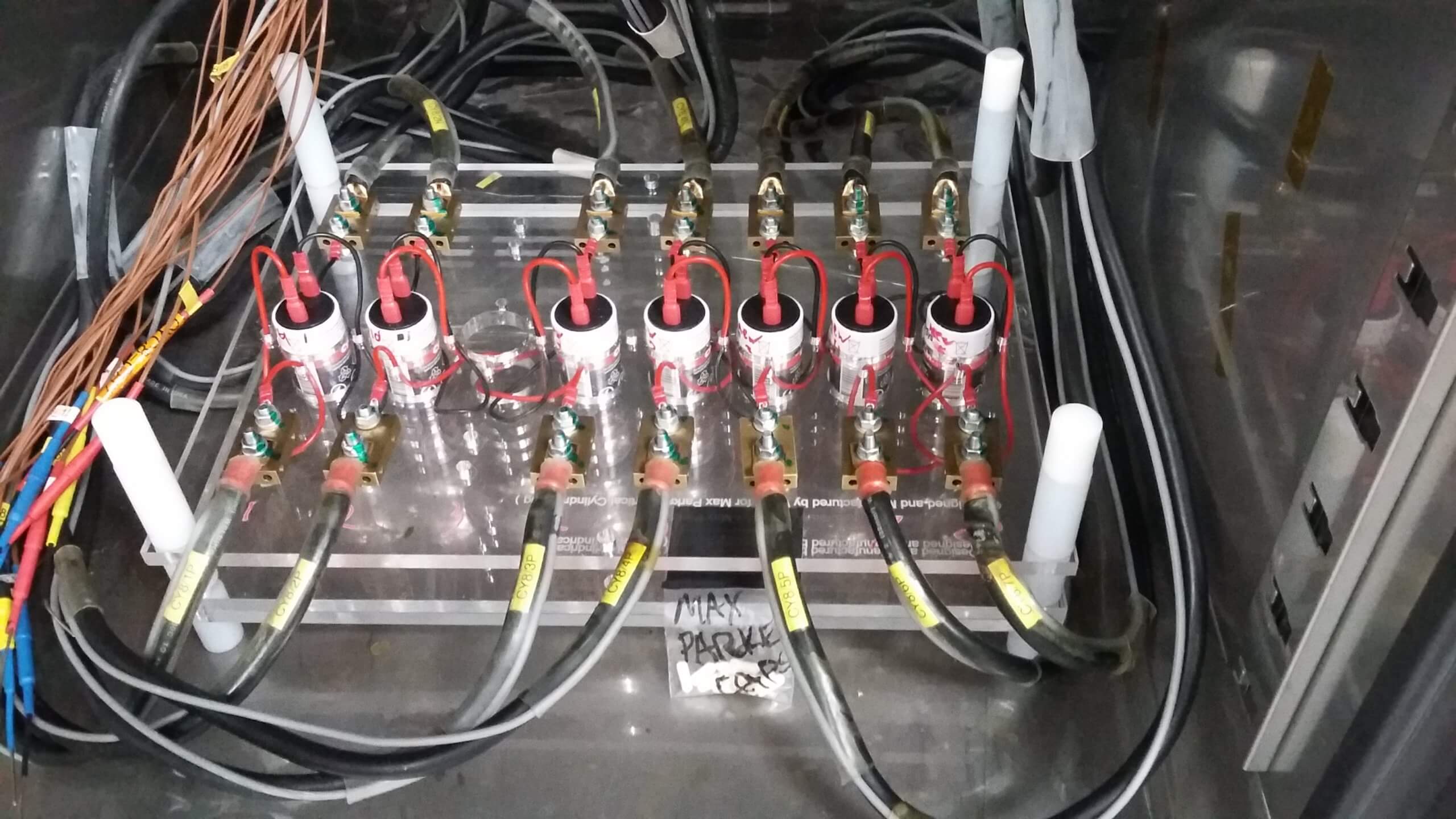
The research will be a critical part of the Consortium’s drive to achieve the technical performance goals for lead batteries set out in its technical roadmap by generating insights into how to control to maximize battery life in real-world energy storage installations.
CBI’s Technical Manager, Dr Matt Raiford, said: “This kind of collaborative research with universities is exactly what the lead battery industry needs. Working with leading institutions to deliver new insights and modelling techniques for lead battery energy storage is critical for the wider industry to continue their foray into the utility grid storage market.”
END
Notes to editors:
Each year that EU Green Week is celebrated, Europe gets closer to its ambitious goal of being the first climate-neutral continent.
As a key action of the EU Green Deal, this strive towards climate neutrality by 2050 will be underpinned by many technologies and the transition of industries to low carbon practices.
And this is where advanced lead batteries come in. As a battery technology engaged in delivering clean energy projects and enabling the electric vehicle revolution, Europe’s lead battery value chain is also supported by an industry which is a model for the circular economy.
This combination of sustainability principles, where the industry recycles almost 100% of its batteries in Europe to produce new batteries with 80% recycled material, sets advanced lead batteries apart.
As we enter EU Green Week, we hear from Exide in Portugal who have slashed their carbon emissions at their manufacturing and recycling plants by an average of 20% through the innovative use of solar energy and advanced lead batteries.
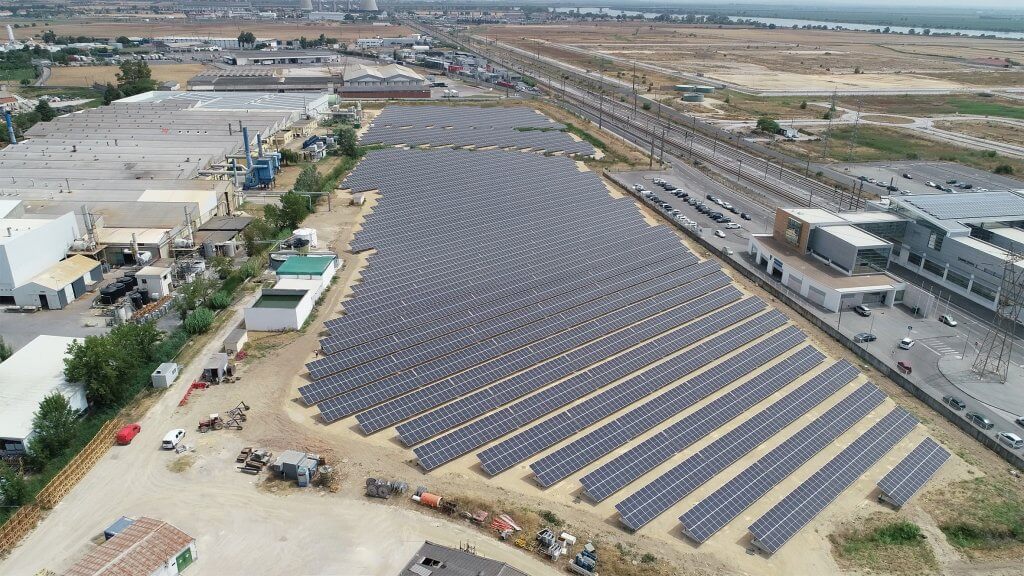
We’ll be taking a look at the range of European energy storage projects, from small-scale community microgrids bringing 24-hour power for the first time, to large-scale frequency regulation installations delivering reliable and flexible power to regional electricity grids. All powered by advanced lead batteries.
The clean energy initiatives ushered in by the EU Green Deal will need all energy storage technologies to step up to the plate. Batteries will be a central part of Europe’s transition to a low-carbon future as more and more societies, industries and consumers turn to batteries for affordable, clean and renewable energy.
And the Consortium for Battery Innovation (CBI) has recognised this need and the continued demand for innovation in batteries to meet the evolving technical requirements of storage systems, and to explore the potential for other applications.
That’s why a large portion of our technical program is dedicated to energy storage. With European projects bringing together universities and battery manufacturers to tackle the highest priority developments for the technology, CBI is driving innovation in lead batteries to ensure performance enhancements are continually increasing. All whilst maintaining the circular economy successes of the technology.
The other central pillar upon which the EU is aiming for a climate-neutral 2050 is low-emission mobility. The role of the established lead battery which ushered in emission-reducing start-stop vehicles continues to be important for the increasing electrification of vehicles. As a critical on-board component of virtually all EVs, powering essential safety features, lead batteries are enabling the shift to an e-mobility future.
This EU Green Week, find out more about the interesting and innovative ways advanced lead batteries are powering the transition to a greener future for Europe.
Dr Christian Rosenkranz, Chair of CBI and Vice President Industry and Governmental Relations EMEA at Clarios, sets out how lead batteries supporting safety systems in electric vehicles are integral to low-carbon mobility.
Europe is at a critical crossroads in its ambitious goals of achieving a climate-neutral EU by 2050. With initiatives driven through the EU Green Deal to decarbonize Europe, one of the central ways in which this will be achieved is through low-emission mobility.
Electric vehicles are at the forefront of discussions around Europe’s low-emission vehicle fleet and the future of the automotive industry.
Batteries are critical for electric vehicles, but not just the ones you hear most often about: lithium-ion batteries. The other critical on-board component for electric vehicles, and indeed the range of lower emission vehicles such hybrid vehicles, are 12V lead auxiliary batteries.
These auxiliary batteries play an essential function for hybrid and electric vehicles and lead batteries offer a number of key strengths in this application in comparison to other technologies.
The 12V auxiliary lead battery provides back up power for safety relevant features such as power steering and brake boosting. But they’re also essential for a vehicle’s comfort features such as radio and sound systems.
In the event of the failure of the high-voltage propulsion lithium-ion battery, the auxiliary lead battery takes over and powers the safety features of the vehicle to enable the car to safety pull over.
As a technology, lead batteries are highly safe and reliable, and it is vital that the safest technology is used in this application.
Current European investments in batteries has focused on the development of new battery technologies that can provide increasing system voltage levels of up to 800V. But this ignores the established 12V lead battery which is backed by an industry with 90 GWh installed production capacity located in Europe.
This mature industry, which collects lead batteries at end-of-life at rates of almost 100% in Europe, is one of the leading examples of circular economy in Europe.
From a production and supply standpoint, lead batteries are domestically produced in Europe for all of the target markets. This independence from global supply structures exists due to the established and well-maintained recycling industry, where almost 80% of material in a new lead battery comes from recycling.
With recent lifecycle analysis of the environmental impact of a vehicle over its lifetime, lead batteries as a technology were shown to have a lower impact compared to other technologies.
Backed by a strong reliability and affordability profile, lead batteries also have wide operational temperature windows compared to li-ion batteries, which intrinsically enhances the operational robustness of the entire system.
The safety record of lead batteries sets it apart from other chemistries and makes it an invaluable technology for Europe’s future low-emission mobility sector.
Through a long history of co-operation with the automotive industry, both the performance and the geometrical dimensions of the 12V lead battery are designed according to well established industry standards. This makes the automotive integration easy for the layout of new xEV platforms.
We are in the age of the battery, and recognition should be given to the essential role different chemistries will play for Europe’s green ambitions. Recognizing and utilizing the strengths of 12V lead batteries, based on their performance, sustainability and safety profiles, will ensure Europe is a leader in the shift to an electric vehicle future.

NEWS RELEASE - 15 March 2021
DURHAM, N.C. – March 15, 2021 - As part of the new suite of energy storage research projects launched by the Consortium for Battery Innovation (CBI), Hammond Group Inc. and East Penn Manufacturing have teamed up to meet the needs of the utility storage market.
Increased demand for energy storage in the utility sector has resulted in a broad spectrum of application developments for advanced batteries, with the global grid-scale stationary battery market predicted to exceed $40 Billion by 2030.
We are in the age of the battery. From frequency regulation where electricity grids are provided with higher levels of stability, to residential demand reduction to manage the cost of energy use, there is an extraordinary demand for batteries. By increasing flexibility in power systems, energy storage batteries are fundamental for the integration of renewable energy into the grid.
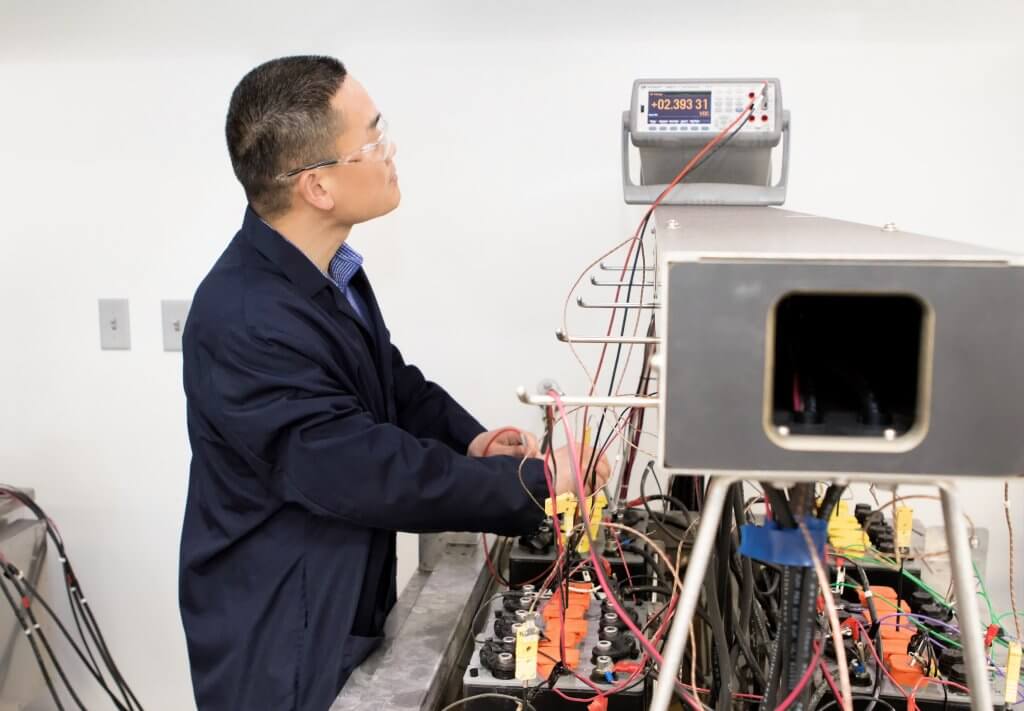
From North America and Europe to Asia, advanced lead batteries are being used by utilities to provide critical energy storage needs. And as a technology always innovating, the ground-breaking research collaboration with Hammond and East Penn will directly feed into market demand by studying vital electrode components in lead batteries to explore how they impact new performance needs.
For utility companies switching to batteries for storage, the key technical parameters required are enhanced cycle life and high performance at energy storage system duty cycles. For energy storage system applications, lead batteries are utilized at both partial-state-of-charge (PSoC) and in high depth-of-discharge (DOD), a demanding profile for any battery technology.
One of the key ways lead battery performance has been enhanced over its 150-year history to meet enhanced technical demand is through the use of expander additives in the electrode, such as barium sulfate. Hammond and East Penn’s research will explore how the additive size, treatment and morphology can be adapted to benefit duty cycles in a typical energy storage system.
Dr. Matt Raiford, Technical Manager at CBI, said: “This exciting research will be critical to increasing the cycle life of batteries developed to match those commonly used in energy storage systems. By studying the impact of different barium sulfate expander additives on electrode behaviour, new insights will be delivered into maximizing the performance of energy storage lead batteries.
“This will be critical for the expansion of lead battery uptake by utilities and renewable energy companies across the globe looking to add battery storage to their systems.”
As a global Consortium, the work of CBI is dedicated to fostering innovation in advanced lead batteries for the benefit of its membership and for wider market needs as identified in our technical roadmap. This novel research will deliver the best expander for energy storage applications, with a direct ripple-effect in contributing to the enhanced product performance for CBI’s membership.
Through synergy between research and manufacturing, the lead battery industry is innovating to adapt to evolving market demand and technical needs of societies across the globe. With rising demand for utility energy storage, the role of advanced lead batteries continues to be central for the global shift to a low carbon future by supporting the decarbonisation of the energy sector.
###
Notes to editors:
Watch the project video:
NEWS RELEASE - 8 March 2021
As the EU prepares to become a world-leader in sustainable battery technology and manufacturing, the Consortium for Battery Innovation (CBI) has launched a new European research project using neutron diffraction in a bid to improve the lifetime of energy storage batteries.
The hi-tech process, which images the entire crystal structure of the battery as it operates, allows battery experts to observe and control the processes impacting battery life and performance.
The project is being conducted in collaboration with the Instituto de Nanociencia y Materiales de Aragón (INMA) and EU-based battery company Exide Technologies. It is one of a range of advanced battery innovation studies underway funded by CBI.
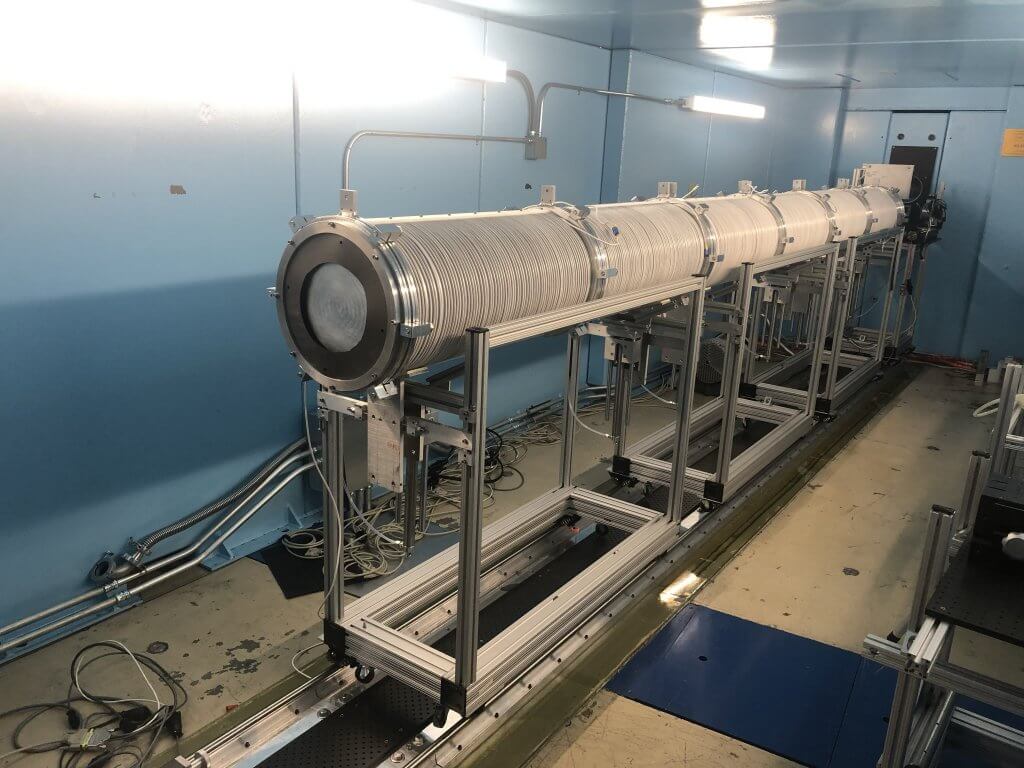
As countries target rapid carbon reduction in the battle to halt climate change, battery energy storage is set to be one of the defining technologies of the century, with demand predicted to grow to 20,000 MWh by 2025. Advanced lead batteries are a critical part of this landscape, with Europe home to leading manufacturing, recycling and research capability.
Scientists will be joining forces from INMA, a joint institute between one of Spain’s oldest universities, the University of Zaragoza, and the largest public research institution in Spain and third largest in Europe, the Spanish National Research Council (CSIC) and Exide Technologies, a global battery company through one of its R&D centres based near Madrid. They will study the fundamental processes that govern recharge efficiency and battery electrode failure using a suite of neutron beamline experiments.
Through a specific focus on battery electrodes, which transfer energy to and from the electrolyte in order to power the polarized device to which they connect, neutron diffraction will be used to study the batteries in operation across different duty cycles.
For energy storage applications, many of which incorporate renewable energy elements, advanced lead batteries operate at partial-state-of-charge (PSoC) and in high depth-of-discharge (DoD), both demanding duty cycles.
Director of CBI, Dr Alistair Davidson, said: “The ability to probe battery electrodes in real-time under typical energy storage duty cycles will deliver vital insights into how to enhance performance and the overall lifetime of the battery.
“This information is a critical part of our advanced battery research program which aims to ensure advanced lead batteries continue to innovate to meet heightened demand for clean, renewable energy storage across the globe”.
Neutron diffraction is capable of not only mapping the activity of the surface of the electrodes, but the entire electrode and electrolyte present in the battery. This provides a complete picture of how battery electrodes are changing at the micro-level, something never-before done in lead battery research.
By describing the electrode phenomena that govern battery lifetime, the research is generating new information on how to control the active material and maximize battery life in all applications for advanced lead batteries, a key goal in CBI’s technical roadmap.
Demand for clean energy storage continues to soar across Europe and further afield, and pioneering research will be significant in ensuring advanced lead batteries continue to innovate to meet the future technical requirements of these systems.
END
Notes to editors:
About Consortium for Battery Innovation:
About Exide Technologies:
Exide Technologies, (www.exidegroup.com), headquartered near Paris, France, is a leading provider of advanced energy storage solutions for the automotive and industrial markets. It designs, manufactures and markets today´s and next-generation battery technologies used across a wide range of applications, from automotive and off-road to material handling, stationary, rail and defense. Exide Technologies serves the global markets with top-notch battery technologies, know-how & added-value services under many well-known brands. As an original equipment manufacturer to leading automotive and industrial equipment manufacturers, Exide Technologies has been involved in many of the significant breakthrough energy-storage developments that are enabling innovation across the markets. With two R&D facilities, nine production plants and three recycling plants in Europe, Exide is committed to high-quality engineering, manufacturing and recycling, and continues to power the world with the most efficient energy solutions and helping customers maximize productivity and performance. In the fiscal year 2020, Exide achieved a turnover of 1.4 billion EUR.
About Instituto de Nanociencia y Materiales de Aragón (INMA):
The Aragon Nanoscience and Materials Institute is a Joint Research Centre created in 2020 by the Universidad de Zaragoza and the Spanish National Research Council (CSIC) as a result of the merging of the Instituto de Ciencia de Materiales de Aragón (founded in 1985) and the Instituto de Nanociencia de Aragón (founded in 2003). Hosting around 300 members, INMA covers four key research topics (materials for energy and environment, materials for biomedicine, materials for ICT, and new nanoscale phenomena) and two enabling research areas (synthesis, processing and scaling-up of functional materials, and advanced experimental technologies). INMA has wide experience in participating and managing national and international research projects (more than 30 ongoing EU projects) and works closely with industry through private contracts. INMA researchers and Exide have been working in collaboration since 2015 to improve the efficiency of the charge-discharge cycles in order to extend the cycle life of the batteries.
Watch the project video:
NEWS RELEASE - 25 February 2021
DURHAM, N.C. – February 25, 2021 - Engineers at Gridtential Energy, Inc. and Electric Applications Incorporated (EAI), supported by the Consortium for Battery Innovation (CBI), are working to further develop quick and safe ‘plug and play’ solar powered energy storage systems to meet the boom in demand for renewable, and secure, energy in U.S. homes.
Gridtential Energy is the pioneer of Silicon Joule™, an innovative bipolar battery technology, which uses silicon wafers (similar to those in solar cells) in traditional lead batteries to reduce weight and achieve performance competitive with lithium-ion at a lower cost. The new research project will combine Silicon Joule technology with the testing expertise of EAI to develop high voltage reference batteries specifically for so-called behind-the-meter energy storage applications.
The advanced batteries developed by Gridtential and EAI could accelerate the move to greener power in homes across the nation as the new U.S. president drives forward climate change policies and the low carbon transformation of the economy.
Behind-the-meter (BTM) energy storage is a critical piece for the decarbonization landscape with systems booming in demand. In the U.S. alone, Wood Mackenzie predicted 430 MW installed in 2020, reflecting an increase of more than 100% over 2019.
This is driving the need for affordable, safe, high-performing batteries in easy-to-connect packages that incorporate renewable energy for the residential market.
John Barton, CEO of Gridtential, said: “Integrated PV-battery backup system is a fantastic application for Silicon Joule technology due to its superior cycle life, low cost, safety, and recyclability; all of which are of utmost importance to residential consumers and small business owners and set this technology apart from other batteries.”
The research collaboration will involve constructing mini-systems using Silicon Joule bipolar batteries for testing, with EAI developing an optimized charge scheme to replicate real-life energy storage systems.
Building on CBI’s technical roadmap goals to maximize cycle life and energy throughput - two key technical parameters for renewable energy storage - this project is critical for delivering insights to enhance lead battery performance.
Dr. Matt Raiford, Technical Manager of CBI, said: “This exciting partnership will delve into the performance of bipolar lead battery packs using sizing commonly seen in residential energy storage systems.”
“Demand reduction and renewable energy storage applications are a booming market for advanced lead batteries and the most popular in the residential sector” he added. “This project will contribute to a new battery technology being available to meet growing demand in the United States and further afield”.
As part of CBI’s 2021 research program dedicated to enhancing lead battery performance under the banner of energy storage, the project with Gridtential and EAI is pushing the boundaries to deliver next-generation batteries.
###
Notes to editors:
Watch the project video
NEWS RELEASE - 19 January 2021
Investment in battery research is key to reducing carbon emissions and boosting electrification, according to the newly appointed chairman ofglobal battery research hub the Consortium for Battery Innovation (CBI).
Dr Christian Rosenkranz is calling on governments and industry to work more closely to help accelerate the development of advanced battery technologies. Dr Rosenkranz, who is Vice President Industry and Governmental Relations EMEA of CBI member and battery manufacturer Clarios, said: “We need to see a huge uplift in rechargeable battery energy storage if countries are to get anywhere near the global targets for reducing carbon emissions. As we approach the COP26 talks later this year we should be pressing for more commitments to support battery research into new and existing technologies in partnership with industry.

“At the Consortium we are conducting and supporting innovative research projects in Europe, the United States and Asia which will significantly improve the performance of advanced lead batteries. But we need to see a concerted effort to support further research efforts to support high-performance, reliable and cost-effective batteries for the future.”
A long-standing member of the lead battery industry, Dr Rosenkranz aims to build on the success of CBI since its formation in 2019. He said: “It’s an exciting time to head a consortium which has already made great strides in driving global innovation in lead battery technology across all applications.”
Dr Rosenkranz replaces Dr Tim Ellis, of RSR Technologies, CBI’s inaugural chairman.
“I’m grateful to Dr Ellis for his pivotal leadership in helping ensure CBI plays a vital role in demonstrating the innovation potential of lead batteries around the world” Dr Rosenkranz said.
Clarios, a global leader in automotive batteries, is actively supporting the electrification of the automotive power train with the advanced lead batteries they design and manufacture. The universal introduction of AGM (Absorbent Glass Mat) batteries provides optimal performance in the automotive environment and Clarios is leading development and innovation in the technology through four global R&D centers to optimize the capture of recuperative energy in vehicles.
Driving the research underway at CBI is a technical roadmap which is at the forefront of delivering performance enhancements for lead batteries. Identifying the highest priority research goals for lead battery technology, Dynamic Charge Acceptance (DCA) is a performance enhancement crucial for the growing micro-hybrid market, predicted to represent over 80% of European car sales by 2030.
Director of CBI, Dr Alistair Davidson, said: “DCA is the ability of batteries to store instantaneous energy in a vehicle and is a vital part of what makes start-stop and hybrid vehicles more fuel efficient and emit less CO2. Improving DCA is a central research pathway for CBI and one which is critical for both Clarios and the whole industry”.
CBI is working with researchers, testing institutes, battery manufacturers and automotive companies across the globe to achieve the market-driven research goals which will be critical for lead batteries to continue their crucial contribution to a low carbon future. The current technical program is demonstrating exciting routes for improving DCA by up to 40% and showing how tools such as battery management systems can significantly improve cycle life, a key technical parameter for energy storage applications.
The suite of technical projects being conducted in collaboration with CBI not only drive automotive battery improvements but are also leading the way in energy storage battery research. The new technical program due to be announced this year will have a strong focus on this emerging market where lead batteries are utilized around the world to support utility and renewable energy storage and CBI’s role beyond research is connecting the storage sector with high-performing lead batteries for systems such as through the online CBI Battery Match tool.
Clean mobility and clean energy are central pillars in facilitating Europe’s shift to become climate-neutral by 2050, and batteries remain a central part of this as they continue to innovate to meet evolving demand for reliable, sustainable and high-performing batteries.
END
Notes to editors:
+++
NEWS RELEASE - 16 December 2020
A ground-breaking new project is probing how mixing common additives using different ratios could enhance the performance of hi-tech lead batteries commonly used in micro-hybrid and hybrid cars.
It is hoped the research will further improve the overall performance of the battery and reduce carbon emissions in start-stop, micro and mild hybrid vehicles. By 2030, 60% of global car sales are predicted to be micro-hybrids, with rates in Europe and the U.S. expected to be even higher.
Some of biggest players in the global lead battery industry are collaborating with the Consortium for Battery Innovation (CBI) to support the research: battery manufacturer and recycler East Penn Manufacturing and materials suppliers Hammond, Cabot and Borregaard Lignotech. For nearly a decade, carbon has been a well-known and proven additive material used to improve performances in lead batteries. Adding carbon into an electrode, or as the main composition material for the negative electrode, provides a reliable and simple pathway for performance improvements in lead batteries for cycle life, lifetime and dynamic charge acceptance (DCA).
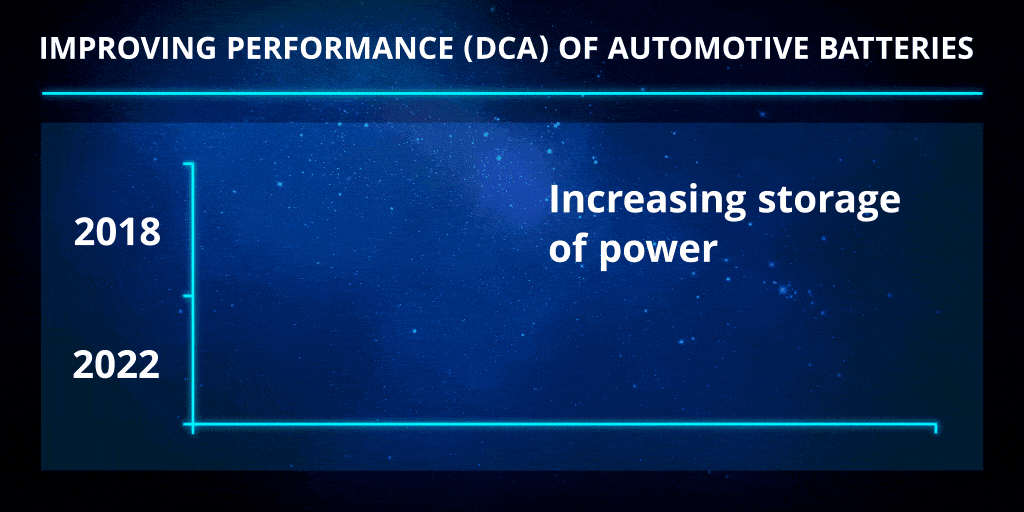
For the first time, this cutting-edge project will systematically study different ratios of the common additives used in the industry: carbon, lignosulfonate and barium sulfate, with the overall objective of optimizing DCA and performance at partial state-of-charge (PSoC).
Director of CBI, Dr Alistair Davidson, said: “This kind of collaborative research can really make a difference to the performance of batteries and we are hoping to push the boundaries of this incredible technology even further with the results of our work.”
Building on the launch of CBI’s technical roadmap in 2019, which identified DCA as one of the highest priority research goals, this project will contribute to supporting innovation in lead battery technology to meet the ever-growing demand for clean mobility.
DCA, which is the ability of a battery to accept instantaneous energy during charging, for example from regenerative braking, is crucial for maximizing the performance of advanced lead batteries in the ever-increasing number of micro and mild-hybrid vehicles on the road.
Understanding how carbons interact with other additives, such as lignosulfonates, is an area of research which can provide significant new insights and propel innovation in the next generation of advanced lead batteries, ensuring future demand for clean mobility is met.
END
Notes to editors:
About CBI:
NEWS RELEASE - 10 December 2020
The new research – an EU collaboration managed by the Consortium for Battery Innovation – will focus on dynamic charge acceptance (DCA) and high-temperature durability in batteries used in the automotive sector. DCA is ability of a battery to capture instantaneous energy such as through regenerative braking.
The European research partners include Ford Research and Innovation Center based in Aachen, Technische Universität Berlin (TU Berlin), MOLL Batterien and Fraunhofer Institute for Silicate Research ISC with its R&D Center Electromobility FZEB.

CBI’s global director Dr Alistair Davidson said: “The EU has a world-leading lead battery manufacturing capability and we have brokered this research collaboration with some of the most respected technical institutions in Europe to create advanced batteries that support a low carbon future. Regenerative braking using advanced lead batteries is key to achieving lower carbon emissions from cars and other vehicles. This project will help battery manufacturers improve the fuel economy and CO2emissions of hybrid vehicles.”
Ford’s Technical Specialist Dr Eckhard Karden said: “Car battery technology requires constant innovation and the work we’re doing at Ford will ensure that we use the most advanced lead batteries in our vehicles, ones that support the transition to a low carbon economy in hybrid vehicles.”
“In this project the Consortium for Battery Innovation and our European partners are helping to keep lead battery innovation at the forefront of technological improvements.”
The 18-month project will focus on performing a range of experiments on lead battery test cells, which are small laboratory versions of full-size batteries. The project will provide a thorough exploration of cell practices by exploring additive effects on DCA and high-temperature durability.
Taking the research a step further, the information gained from these screening studies will be essential for developing more accurate testing and methods to demonstrate enhancements in performance metrics such as DCA.
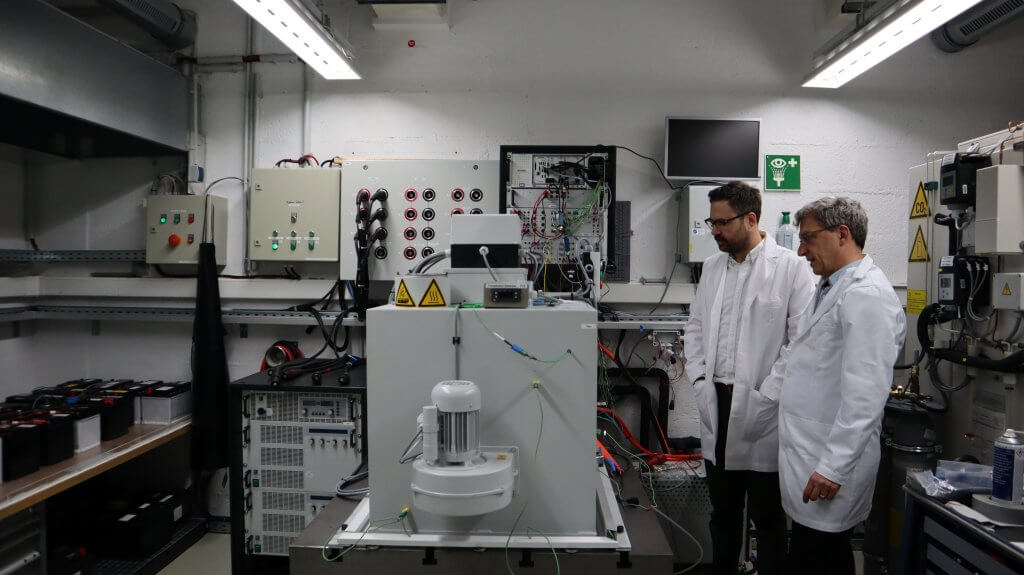
This information is essential for improving DCA of lead batteries for micro and mild-hybrid vehicles, a market expected to represent 80% of new vehicles in Europe, and over 60% globally by 2030. Lead batteries play a crucial role in this market by providing power for the essential functions on board such as starting, lighting, ignition (SLI), in addition to critical safety features such as driver assistance and autonomous driving functions. Advanced lead batteries in micro-hybrid vehicles are also able to store the energy generated during regenerative braking, delivering up to 10% in fuel savings and carbon emission reductions.
Over the last few years, CBI has been leading efforts to create a forum where the world’s leading lead battery manufacturers, car companies and researchers come together to discuss, explore and research the fundamental questions applicable to improving automotive lead batteries. The fusion takes place in DCA & Heat Workshops with the aim of optimizing high-temperature durability tests for advanced lead batteries. This work in crucial to determining pathways for improving DCA of lead batteries, and also developing tests demonstrating the strides in performance underway in the technology.
The Fraunhofer ISC, as experts in material development and electrochemical analysis, will investigate the effect of specially designed carbon additives on high-temperature durability. TU Berlin’s tasks will involve electrical tests on cell level as well as modelling, whilst MOLL, as a leading producer for enhanced flooded batteries (EFB), contributes with electrodes and knowledge regarding experimental test cells. Ford will provide the battery test data as well as vehicle integration background.
This latest research project between Ford, MOLL, Fraunhofer ISC and TU Berlin aligns well with efforts spearheaded by CBI to propel the next generation of advanced lead batteries for automotive applications. The knowledge generated from this research project will also feed into CBI’s growing research focus on lead batteries utilized in renewable energy storage applications as the batteries can have similar duty cycles to micro and mild-hybrid vehicles.
The project is part of the greater CBI technical program where the expansion of our research portfolio has involved adding projects applicable to energy storage systems for utility services. The renewable energy sector is a fast-growing area for lead batteries and an increasing number of installations are utilizing the technology for applications such as peak shaving, microgrids, frequency regulation and tariff management. CBI’s research program is focused on improving the cycle life of lead batteries for these applications which contributes to a lower TCO (total cost of ownership), a key requirement for batteries in ths application.
END
Notes to editors:
About CBI:
NEWS RELEASE - 14 October 2020
Driven by demand for high-performing batteries for the growing start-stop and micro-hybrid automotive market, a new European research collaboration between two leading academic institutes will use tailor-made carbons and utilize advanced physical and electrochemical techniques to study key performance indicators for lead battery technology.
The partnership between the Fraunhofer Institute for Silicate Research (Fraunhofer ISC) and Wrocław University of Science and Technology (WUST) has been facilitated by the Consortium for Battery Innovation (CBI), the world’s only research hub dedicated to advanced lead battery technology.
Dr Alistair Davidson, Director of CBI, said: “Responding to market demand from the automotive sector, this new research project is building on collaborative workshops organized by the Consortium in partnership with OEMs and car companies over the last few years.”
“It’s one of a new set of exciting projects aiming to enhance the performance of lead batteries to meet the technical requirements of start-stop and micro-hybrid vehicles.”
The 2-year project involves Fraunhofer ISC, a long-standing partner of the Consortium and one of the leading Bavarian centers for material-based research and development in the fields of energy, environment and health, and WUST, one of Poland’s leading technical universities.

The research project will explore the fundamental properties of carbon additives with focus on surface functional groups, and the effect they have on lead battery performance. Specifically, it will look at the impact on key performance indicators in lead batteries:
Studies of these three performance indicators will utilize screening techniques combined with tailor-made carbons to examine how carbon chemistry interacts with lead and other common additives.
Carbons are a popular additive for enhancing battery performance, and this research project is building on existing research by using innovative techniques to conduct in-depth exploration of additive effects.

This knowledge is essential for improving the DCA of lead batteries and increasing their uptake in start-stop, micro and mild-hybrid applications, one of the fastest growing automotive markets worldwide and a vital market for delivering cleaner mobility.
CBI’s technical roadmap has identified improving DCA performance as one of the vital research goals essential to continuing the innovative advancements in lead battery technology for both energy storage and automotive applications.
END
Notes to editors:
About CBI:
Celebrating more than 50 years since its creation, Earth Day 2021 is being recognised with events held by 1 billion people in 193 countries. The message of environmental protection has a strong resonance in today’s world where decarbonization and electrification are high on societal agendas.
One of the most significant ways in which a focus on restoring our Earth has been driving action across the global is the shift to clean energy. Through the use of renewables, through sustainable and green technologies, through energy storage.
The rocketing growth of energy storage across different regions and in different applications, from small-scale rural electrification projects to large-scale installations supporting power grids, is underpinning the global shift to a clean energy future.
As one of the energy storage technologies supporting this shift, lead batteries are used in diverse projects around the world to deliver reliable, affordable and sustainable energy.
From the world’s highest solar farm in Tibet, to a rooftop solar project in New York, to rural electrification in Sierra Leone, lead batteries are at the centre of the transition to a clean energy future for different communities across the globe.
Browse our interactive map for some highlights of lead batteries in action and check out our case studies page for a deep dive into the role of advanced battery storage in delivering a low carbon future.
A ground-breaking new battery ‘match’ service is set to help utility companies choose the most suitable batteries as partners for their energy storage schemes.
CBI Battery Match has been designed and built by the Consortium for Battery Innovation (CBI) – the global advanced lead battery research group – to help electricity providers and other energy storage projects find a battery system that best meets their requirements.
The online service, launched in conjunction with the Energy Storage Association’s Virtual Conference (ESACon20), is targeted at systems specifiers and integrators for utility and renewable energy companies and presents them with a series of potential battery partners, before linking them directly with battery manufacturers.
Just like human dating apps, users tap in information about themselves together with details of their expectations and requirements. Using an intelligent algorithm based on battery industry expertise, a range of battery solutions best suited to their needs are identified in real-time.

Dr Alistair Davidson, Director of CBI said: “We’re aiming to bridge the gap between utilities and renewable energy providers and battery manufacturers by demonstrating the wide range of reliable, high-performance advanced lead batteries available.
“Our research Consortium of battery manufacturers has found that their customers needed a simpler way to sort through the range of choices to identify the best battery for their energy storage system.
“Our battery matchmaker will help demonstrate that there are a range of options available, where advanced lead batteries are best-suited to their needs, that allows them to find a tailor-made solution for their specific system.”
“We’re seeing massive growth in demand for battery energy storage across the globe which means we need many more batteries. This new tool helps users consider the range of potential solutions and puts them in touch with potential partners in the shape of the manufacturers.”
With the energy storage market expected to grow at nearly 25% in the next five years, batteries will be one of the key energy storage technologies.
“All battery chemistries will have a part to play achieving future clean energy targets.” added Dr Davidson. “One of the advantages of using advanced lead batteries is that they combine reliability, high technical performance and cost-effectiveness with a recycling rate of almost 100% in North America and Europe.”
The technology is already widely used by utility and renewable energy companies for projects ranging from large-scale peak-shaving and frequency regulation projects to microgrids and off-grid systems.
The battery match service is a collaborative effort between the lead battery industry and CBI, which brings together robust, technical information from some of the leading global players in one place. Companies including Advanced Battery Concepts, C&D Technologies, East Penn Manufacturing, Electric Applications Incorporated, EnerSys, Exide Technologies, Gridtential, NorthStar Battery and Trojan Battery Company are engaged in the project.
With a user-friendly interface available on desktop and mobile, energy storage end-users can log on to the tool, input their system requirements, and the outcome is a direct match with the battery best suited for their project. CBI Battery Match will enable direct communication between the energy storage company and the battery manufacturer, a streamlined process where inputted information results in the output of a battery.
END
Notes to editors:
About the Consortium for Battery Innovation:
NEWS RELEASE - 27 July 2020
A team of scientists from the University of California is set to unlock the inner workings of lead batteries with the help of nanoscale technology.
Working with the Consortium for Battery Innovation (CBI), the new industry-academia partnership based in Los Angeles will explore the fundamental processes occurring inside lead batteries as part of the Consortium’s plans to deliver performance improvements in the technology for the growing automotive and utility grid storage sectors.
The University of California, Los Angeles (UCLA) will use an innovative implementation of Scanning Transmission Electron Microscopy (STEM) that allows researchers to observe the crystallization and dissolution of the phases involved in the charge and discharge of a lead battery during operation at the nanoscale.

This pioneering work, spanning 18 months, will provide deeper understanding into sustaining these materials to deliver improved battery performance and longer lifetimes.
Prof. Chris Regan, who leads the research team from UCLA said: “Lead batteries have been a mainstay technology for more than a hundred years, but there is a significant amount that is still to be understood about the fundamental reactions occurring in this chemistry. We believe this new technique will help unlock new technological data to improve the performance potential.”
Dr Alistair Davidson, Director of CBI, said: “This kind of fundamental research is key to designing the next generation of advanced lead batteries. As demand grows for ever more sophisticated and high-performance rechargeable batteries, we are ensuring that the science supports new innovation.”
Rapid technological advances and falling costs for installed grid battery storage underpin predictions that energy storage in the U.S. alone will reach 100 GW of new energy storage by 2030. By providing flexibility for the grid and protecting against vulnerabilities, the role of batteries is central to the transition to low-carbon energy systems across the globe.
As the world’s only pre-competitive lead battery research hub, research undertaken by the Consortium has a ripple effect allowing its global membership of battery manufacturers, recyclers, material suppliers and testing institutes to benefit from new insights gained through its extensive suite of technical projects.
As demand continues apace for high-performing batteries for clean mobility and more reliable utility grid storage, CBI is undertaking groundbreaking research to continue to push the boundaries of advanced lead battery technology, building on the key research goals set out in its technical roadmap.
END
Notes to editors:
About CBI:
NEWS RELEASE - 1 JULY 2020
One of the latest technology developments in lead batteries will undergo well-known automotive testing standards in a research project collaboration between Advanced Battery Concepts (ABC) and the Consortium for Battery Innovation (CBI).
Bipolar lead battery technology, which has been tipped to deliver improved dynamic charge acceptance (DCA) performance, will be independently verified by ABC using specific global automotive testing regimes verified by the scientific community.
Advanced Battery Concepts, a battery technology development company based in Michigan, US, will test their own bipolar lead batteries which have thinner enhanced positive and negative paste, specially developed for start-stop, micro and mild-hybrids. As a market estimated to represent 80% of automotive vehicles by 2030, the ability of bipolar lead batteries to deliver enhanced performance in these applications is ground-breaking. This cutting-edge automotive battery research undertaken by ABC in conjunction with CBI aims to verify the DCA performance benefits of this technology, which is the ability of a battery to generate instantaneous energy in automotive applications, for example through regenerative braking.
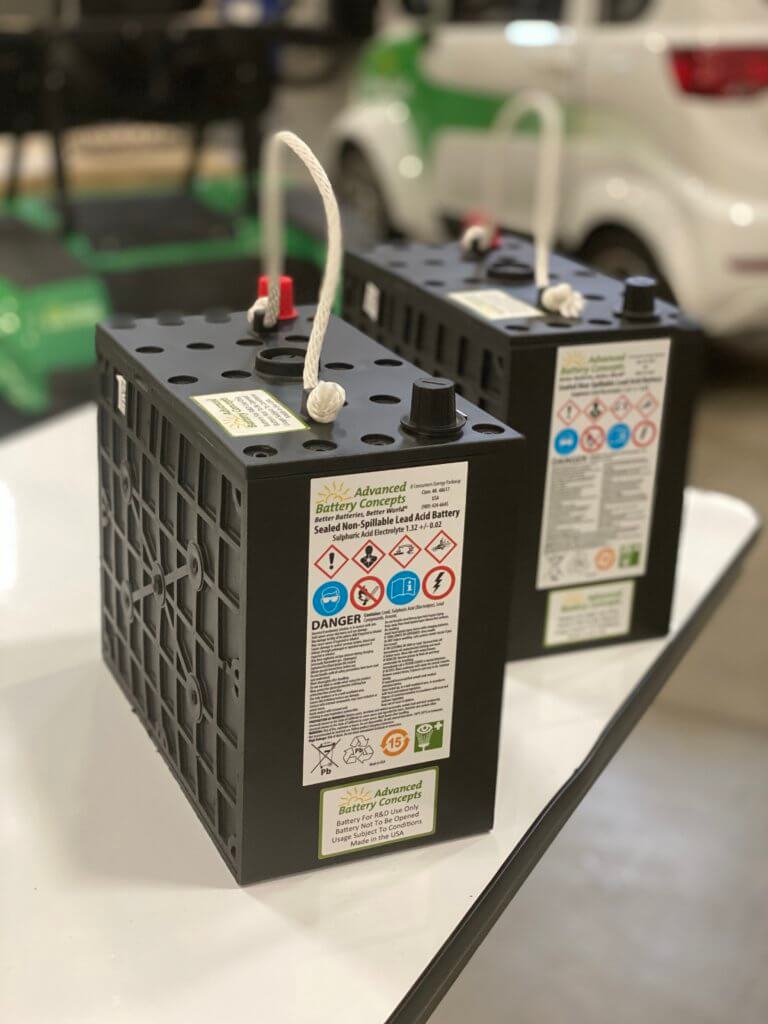
Ed Shaffer, CEO of ABC, said: “We expect the micro and mild-hybrid market to grow substantially in the coming years. We think bipolar is an exceptional technology for use in this market with improved DCA performance, a key technical parameter for this application, and this project will be key in demonstrating these capabilities”.
By benchmarking performance against known standards, this could be a starting point for this technology to be rolled out across the lead battery industry as a proven technology and facilitate new avenues of research in bipolar lead batteries.
The 9-month project will also include tests for partial state-of-charge (PSoC) performance, a key requirement not only relevant for start-stop, micro and mild-hybrid vehicles, but will also provide vital insight into the capabilities of bipolar lead batteries for storing energy from intermittent renewable sources such as wind and solar applications.
“The dual nature of this research project delivers on the priority research targets set out by the Consortium to improve the performance of lead batteries in both automotive and energy storage applications to grasp future market opportunities in these sectors” said Dr Alistair Davidson, Director of CBI.
END
Notes to editors:
About CBI:
About Advanced Battery Concepts:
Advanced Battery Concepts LLC is a global battery technology development company based in Michigan, USA, and is the first company to successfully design a bipolar lead acid battery and develop and implement a commercially viable manufacturing process for such batteries. Advanced Battery Concepts is currently working with existing lead acid battery producers and engaging licensees to realize the commercial potential of its technology, as well as on-going production of batteries and additional research from its Battery Research & Engineering Development Centre in Michigan to broaden its technology portfolio. For more information, visit our website: Advanced Battery Concepts